
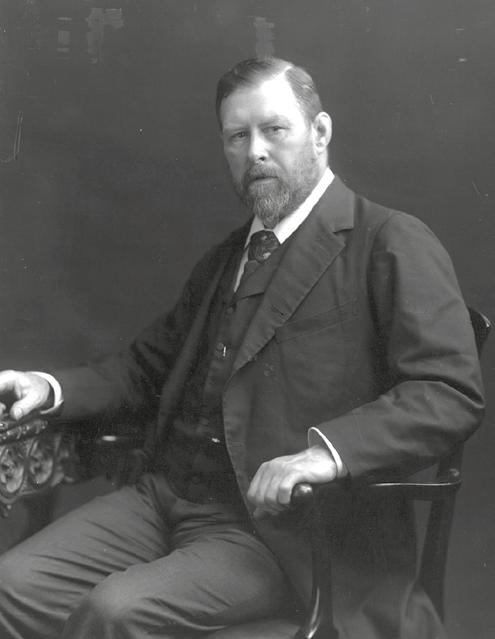

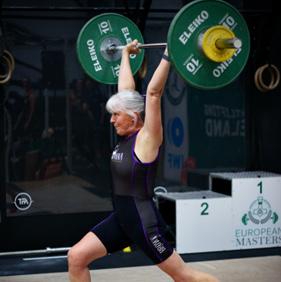
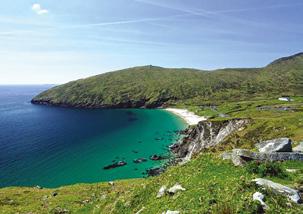

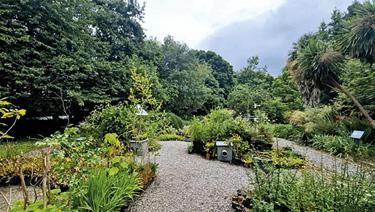
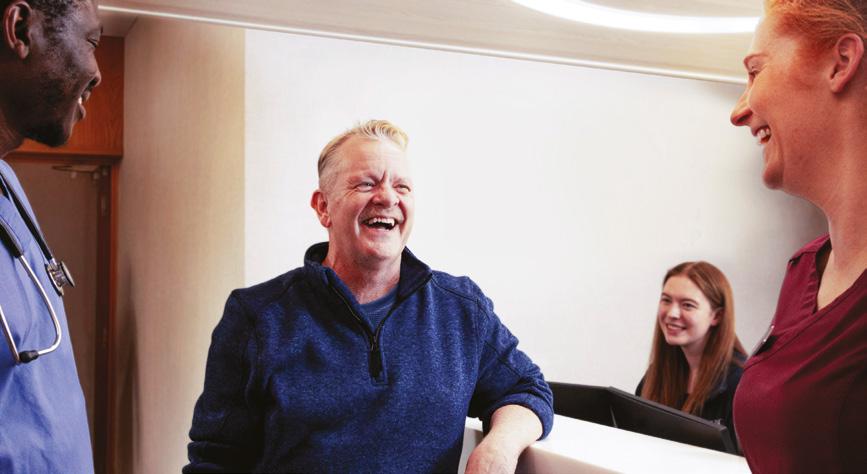













Publishing Directors: Brian McCabe, Des Duggan
Editorial Director: John Low
Advertising: Willie Fallon
Design
Contributors:




The Food Safety Authority of Ireland (FSAI) has reported that ten Closure Orders and five Prohibition Orders were served on food businesses during the month of May for breaches of food safety legislation, pursuant to the FSAI Act, 1998 and the European Union (Official Controls in Relation to Food Legislation) Regulations, 2020.
The Enforcement Orders were issued by Environmental Health Officers in the Health Service Executive (HSE) and by officers of the FSAI.
Five Closure Orders were served under the FSAI Act, 1998 on:
•Haperty Limited - Trading at Mind Mega Mela 2025 (Closed activity: the activity associated with the handling, preparation and cooking of raw fish and raw poultry for sale to members of the public) (Takeaway), St Margaret's Road, Finglas Dublin 11
•Spice Village & Indian Kebab House (Takeaway), Ferry Road, Tarbert, Kerry
•Houda Foods (Wholesaler/ Distributor), Unit 5, Ballinlough Business Park, Ballinlough, Roscommon
•Heyba’s Kitchen, Shed A3 Bremore Farm, Flemington Lane, Bremore, Balbriggan, County Dublin
•Stop n Shop Convenience Store, 52-54 Tullow Street, Carlow
Five Closure Orders were served under the European Union (Official Controls in Relation to Food Legislation) Regulations, 2020 on:
•Kerala Royal Caters (Service Sector), Unit 27C, Ashbourne Business Centre, Ballybin Road, Ashbourne, Meath
•Pizza Corner (Take Away), Main Street Caherconlish, Limerick
•Shake Dog (Restaurant/ Café), Unit 23, Showgrounds Shopping Centre, Clonmel, Tipperary
•Thindi (Service Sector), 143 Phibsborough Road, Dublin 7
•Tasty Food (Takeaway), Unit 2, Cross Avenue, Ballyneety, Limerick


Yankee Clipper II, departed its runway for the first time in more than three decades. The flight, bound for JFK International Airport in New York, marked the conclusion of “Tracing the Transatlantic” — a nostalgic 12-day journey celebrating the legendary legacy of Pan Am. Shannon Airport has long been interwoven with Pan Am’s pioneering spirit.
In September 1945, a Pan Am DC-4 completed the first transatlantic proving flight into Shannon, paving the way for the first scheduled transatlantic commercial passenger flight just one month later. This October marks the 80th anniversary of that historic milestone.
Two Prohibition Orders were served under the FSAI Act, 1998 on:
•Haperty Limited (Trading at Mind Mega Mela 2025) (Takeaway), St Margaret's Road, Finglas, Dublin 11
•Noor Halal (Butcher Shop), 10 Church Street, Dundalk, Louth
Three Prohibition Orders were served under the European Union (Official Controls in Relation to Food Legislation) Regulations, 2020 on:
•Kerala Royal Caters (Service Sector), Unit 27C, Ashbourne Business Centre, Ballybin Road, Ashbourne, Meath
•Houda Foods (Wholesaler/ Distributor), Unit 5, Ballinlough Business Park, Ballinlough, Roscommon
•Domestic Kitchen at East Road, East Wall, Dublin 3
Well-known consumer broadcaster and journalist Sinead Ryan is presenting a series of Senior Times podcasts in association with Raisin Bank. Join Sinead Ryan as she hosts a new eight part Senior Times podcast - Mind It!where she'll be chatting with experts on topics as wide ranging as cruises to health insurance, motoring to making a will.
In each episode she will take an in depth look at the issues facing seniors. Like and subscribe, for free, to Senior Times so you don't miss out on any episodes. Or visit seniortimes.ie for more details.




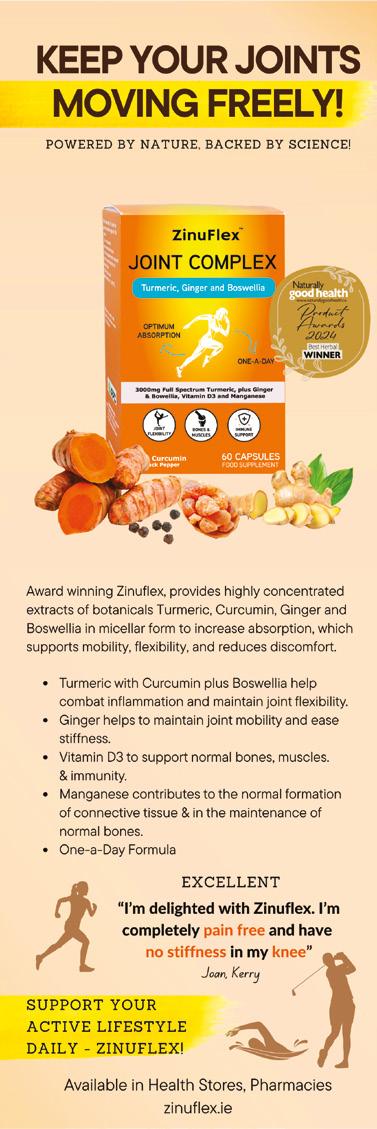
Planning on travelling this summer? Make sure you’re prepared, as new research by Gemini by Google has shown that two thirds (66%) of all Irish adults have forgotten an important item when packing for holidays. The top forgotten items include: travel adapters, phone chargers and toothbrushes with nearly one in ten even forgetting their phone!
One in nine Irish holidaymakers have to spend up to €100 replacing items they’ve forgotten to pack. Younger holiday-makers aged 18 - 24 are more likely to splash out on replacing forgotten items. More than half of those surveyed (57%) spend between €10€50 on missing items.
And it seems like people are looking for help, as Google searches for ‘packing list’ soared by over 50% in the last three months and the top three Google Search questions related to
holiday packing in Ireland in the last month were :
1. What can't I put in a liquids bag?
2. What to pack for a sun holiday?
3. What to pack for holiday in Portugal in June?
To take the stress out of travel this summer Gemini, Google’s AI assistant, has teamed up with Irish travel creator Sarah Hanrahan, to make travelling, whether at home or abroad, as easy as possible by taking packing stress off the list. Google’s research also showed that one in six find choosing where to eat while on holiday stressful. Gemini can also take this off your plate, through typing prompts into Gemini’s chat box or asking Gemini Live questions, holidaymakers can get suggestions on the best places to eat tailored to suit their mood and dietary requirements .
The Irish Architecture Foundation (IAF) and architects 12th Field have announced the national launch of Bog Bothy, a transformative new placemaking climateaction project that reimagines Ireland’s relationship with its peatlands through architecture, community and creativity.
Launching in Clara, Co. Offaly, on the occasion of the Bog Trotters Festival, June 20–22, Bog Bothy includes a purpose-built mobile shelter designed by the architects in 12th Field and co-created with local communities; a curated exhibition; an artist in residence; and a public programme of walks, workshops, and panel discussions with local and international speakers. Designed by 12th Field in collaboration with communities across Offaly, Louth, and Meath, the bothy
Fly, Cruise & Stay Mediterranean Cruise with Virgin Voyages from €1,299 per person sharing ClickandGo.com
Stay onboard the Virgin Voyages Cruise Liner with options of Scarlet Lady or Balcony for seven nights with prices starting from €1,299, with return flights from Dublin, a checked in bag and two nights Lisbon hotel stay pre-cruise included. Itinerary comprises of Lisbon, Porto, La Coruna and Portsmouth. Travel dates: 20/07/2025 - 20/07/2025
For more information: https://itaa.ie/offers/ fly-cruise-stay-mediterranean-cruise-withvirgin-voyages
Cruise through the Caribbean on Celebrity Beyond from €1,859 per person sharing Frosch Ireland
Sail onboard the Celebrity Beyond for seven nights as it cruises through the Caribbean with stops in St. Maarten, St. Thomas and the Bahamas for €1,859 per person based on two people sharing. Flights from Dublin included. Travel dates: 28/09/2025 - 4/10/2025
For more information: https://itaa.ie/offers/ st-maarten-st-thomas-bahamas-
tours into August with a second installation at Girley Bog, Co. Meath.
Following over two years of research, consultation, planning and design, the bothy structure blends vernacular inspiration with forward-looking design. It serves as a gathering space for storytelling, reflection, and community exchange, rooted in the peatland's past while looking to its ecological and cultural future.
Mental health now integrated into all Government policies
Minister for Mental Health, Mary Butler has signed the WHO declaration on ‘Mental Health in All Policies’ on behalf of Ireland in an effort to integrate mental health in all Government policies.
Minister Butler has travelled to Paris to represent Ireland at a two-day WHO (Europe) conference (16 and 17 June) and to contribute to a high-level ministerial panel, hold bilateral meetings with the Ministers for Health of France, Lithuania, and Malta and attend a working lunch hosted by French Minister Yannick Neuder to discuss a range of issues of mutual interest.
price. So too are gratuities for the hard working staI. Departures every Tuesday throughout June, July, August & September.
Travel dates: 1/06/2025 - 30/09/2025
For more information: https://itaa.ie/oIers/ultra-luxury-silverseagreek-isles-turkey- cruise-from- e3300/
Bog Bothy reasserts that people and peatlands are not mutually exclusive, presenting a new model of climate action and engagement, one that is rooted in creativity, future heritage and stewardship. For more information: visit: www.architecturefoundation.ie
Discover the amazing River Douro on a river cruise €2,195 per person Travel Escapes Embark on a 7 day adventure along the stunning Douro River, soaking in the vibrancy of Portugal’s Porto, learn the Flamenco in Salamanca and enjoy the flavours of the Spanish town of Quintas. Based on two sharing onboard the Travelmarvel Estrela river cruiser there is are seven breakfasts, six lunches, seven dinners, return flights from Dublin, flamenco show and sightseeing tours all included. Travel dates: 7/08/202514/08/2025. For more information: https:// itaa.ie/offers/douro-discover/
During the high-level meeting, Minister Butler shared examples of where Ireland has been successful in driving positive outcomes in mental health in collaboration with other government departments. In particular, the Minister highlighted the positive engagement between the Department of Health, Department of Housing, Local Authorities, and the Health Service Executive (HSE) to provide supported housing to approximately 500 people with enduring mental health difficulties in 2024.
‘Boutique’
literary festival returns to Co Wexford in September
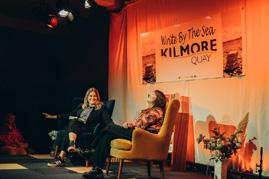
As usual the festival will feature in-depth interviews with leading writers and novelists
‘Boutique’ literary festival returns to Co Wexford in September
celebrate it’s milestone 10th year. Set in the seaside village of Kilmore Quay,
European Gems River Cruise from €2,995 pp Barter's Travelnet
Spend fourteen nights on a river cruise that embarks from Budapest. Flights, return airport transfers, full board, drinks with lunch & dinner, daily sightseeing excursions and onboard gratuities. This cruise travels through Vienna, Melk-Dünstein, Aschach, Regensburg, Nuremberg, Bamberg, Würzburg, Miltenberg, Rhine Gorge, Cologne and ends in Amsterdam. Travel dates: 10/11/202525/11/2025 For more information: https:// itaa.ie/offers/european-gems-river-cruisetravelmarvel-capella/
Write By the Sea, the boutique literary festival in Kilmore Quay, Co Wexford, returns from 26th to 28th September 2025 to celebrate it’s milestone 10th year. Set in the seaside village of Kilmore Quay, Co. Wexford, the 2025 festival will showcase the very best of contemporary Irish literature, featuring a mix of interviews, performances, talks and workshops for readers and writers alike.
"We're thrilled to celebrate a decade of Write By The Sea, marking ten wonderful years of bringing readers to Ireland's most beautiful village," said festival chair Sasha Wilson. “Our team is busy finalising an exceptional 2025 programme, featuring a stellar lineup of acclaimed writers and artists. Audiences can look forward to welcoming back some beloved favourites, alongside debut appearances from some of Ireland's most sought after literary voices.” The full programme will be announced on July 22nd at www.writebythesea.ie and tickets will go on sale on the same date.

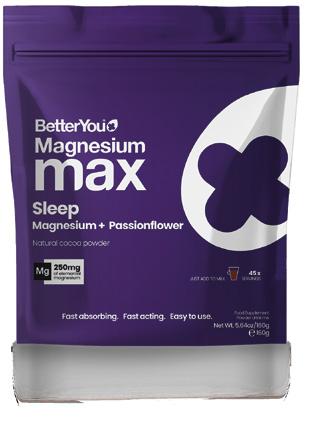

Triple blend magnesium drink formulations deliver fast nutrient absorption to support muscle function, energy production and fight fatigue.
Triple blend formulation
Magnesium Glycinate, Citrate and Malate
250mg elemental magnesium
Available in your local health store.

Aubrey Malone recounts the troubled life of Beach Boys front man Brian Wilson who died last month
It isn’t every day of the week you’ll see Bob Dylan paying tribute to someone who’s just died, especially someone in his eighties. But he did to Brian Wilson, the Beach Boys frontman, when he passed away last month. Many others paid tribute to him as well, not only for his music but because he was regarded as one of the nicest guys in music.
There are some singer/songwriters – and Wilson was probably the first of that breed to occupy the mainstream – who can’t help making hits. Think of the Everly Brothers, Roy Orbison, Abba. Almost every song from these kinds of performers seem to be instantly recognisable, something you’d want to sing along to.
Wilson had that gift too. So many of his songs have become anthems. I Get Around and Surfin’ U.S.A. Boys songs I remember hearing in the sixties. They seemed to be everywhere. The melodies were so infectious. Then came Help Me Rhonda and Sloop John B. Instant classics. I thought they beat the Beatles hands down.
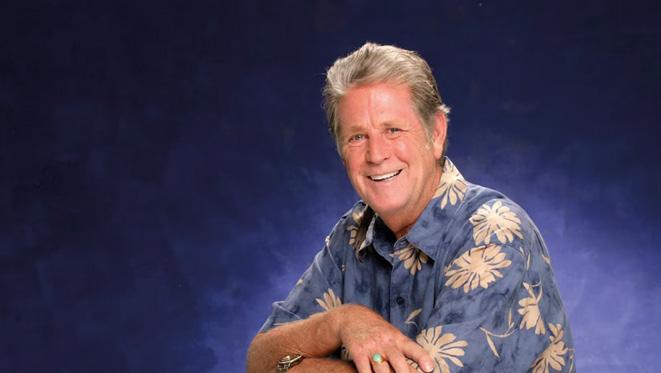
know anything about surfin.’ “I tried it once,” he confessed, “and got conked on the head with the board.”
The song of theirs that really “sent” me, as we used to say back then, was Good Vibrations. There was so much going on in it, so much echo and falsetto and octave jumps, and the harmonising was to die for. I remember winning it on an EP in a competition in the RTE Guide, or whatever the RTE Guide was called in 1966. I played it until the needle all but wore out. There were three other tracks on the EP. I remember one of them being by Elvis. I had so many Elvis records then that I thought EP stood for Elvis Presley!
The Beach Boys have sold over 100 million records. Beat that! The group, as most people know, was founded by Brian. He was backed by his two brothers, Dennis and Carl, as well as a cousin, Mike Love, and a friend, Al Jardine. They were managed by their father Murry, an accomplished pianist.
I always thought of Brian as an uncomplicated person, someone who liked sitting in the sun or driving a fast car with a “babe” by his side. Such preconceptions were untrue.
Only in later years did I learn that he had mental health problems from his early life . He also had a troubled relationship with his father, a controlling and sometimes violent man. And he didn’t
He rarely went to the beach in his youth because “I had light skin that burnt easily.” He preferred looking at the ocean: “It was like a piece of music. Each of the waves was moving around by itself but they were also moving together.”
Happy days with The Beach Boys
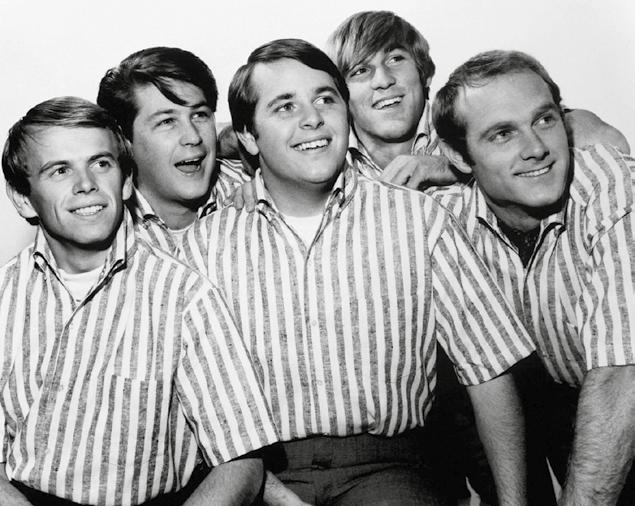

with Sinead Ryan



weekly from July 4th in association with


“Join me, Sinead Ryan as I host a new eight part Senior Times podcastMind It! - where I’ll be chatting with experts on topics as wide ranging as cruises to health insurance, motoring to making a will. In each episode we’ll take an in depth look at the issues facing Seniors. “
Like and subscribe, FREE, to the Podcast so you don’t miss out on any episodes.



Wilson married Marilyn Rovell in 1964. That was the year he decided to leave the group for a while to focus on his writing, being replaced by Bruce Johnston. It was also the year he started smoking pot. He took stronger drugs too, Seconals and downers, “because they were part of what it meant to be a creative person in the sixties.” Acid made him hear voices. Some of them were like his father telling him what to do. Others were directions for songs.
Children started to arrive. During his bad years he hid away from them. “Meals happened without me” he revealed, “When the kids came home from school I might still be in a bathrobe sitting at the piano.”
He knew he needed help but didn’t know where to go for it. His father was working with him in the studio now. He’d become involved in the music industry with him. That became another kind of pressure, the old control being exerted again. Eventually he had to fire him.
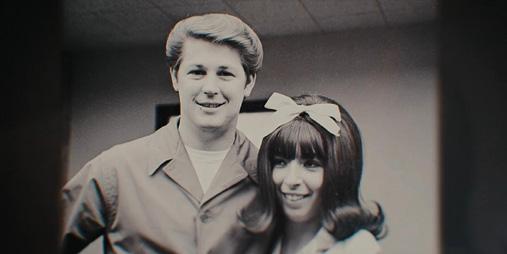
Drugs, he explained, weren’t substances he liked for themselves: “They were ways of dealing with the fact that my head wasn’t right.” Unfortunately, they only made it worse: “Bad days turned into bad months, and then bad years.”
Something else happened in 1964 too: He had his first nervous breakdown then. “It was like being drunk all the time,” was the way he put it, “but worse.” One of the voices he heard at this time was that of Phil Spector, a recording artist he idolised. One night he was watching a dystopian Rock Hudson film, Seconds. In the middle of it he “heard” the voice of Phil Spector telling him he’d never be as good as he was.
His focus became more serious as the decade went on. By the end of the sixties he felt truly messed up. The labours he expended on putting out iconic albums like Pet Sounds took their toll.
Like, for example, The Everley Brothers, Roy Orbison and ABBA Brian Wilson couldn’t help making hits with an instantly recognisable sound you wanted to sing along to
He always said the seventies was the worst decade of his life: “I was taking speed or doing coke or coming through the door drunk with a cigarette in my hand.” One time he painted his whole house purple. Marilyn was demented with him.
His father died in 1973. Part of him was grieving and part relieved. He sought help from a psychiatrist, Eugene Landy. Landy stabilised him. He became a kind of surrogate father in time but he too was controlling. He roared at him a lot, telling him he needed to get back to doing what he did best, making hit
Wilson continued his wild ways, interrupting a session at a jazz club one night in 1974 by leaping on stage and singing “Be-BopA-Lula” in his bathrobe and slippers.
He dismissed Landy after he raised his fee to $20,000 a year. The next few years saw him regressing into his bad habits. He took an overdose one night. Another time he was hospitalised for alcohol abuse. He still did some recordings with his brothers but he was under par a lot of the time. They took care of him both physically and on the business side of things.
Landy came back into his life in 1976. Marilyn called on him when Wilson’s weight started to spiral out of control. By now he hadn’t appeared onstage for almost a decade apart from a few shows. Landy got his weight down from 300 pounds to 185, but at some cost. “He put himself in the middle of everything in my life,” Wilson complained, “He called it 24 hour therapy. When friends came to see me, he interviewed them.”


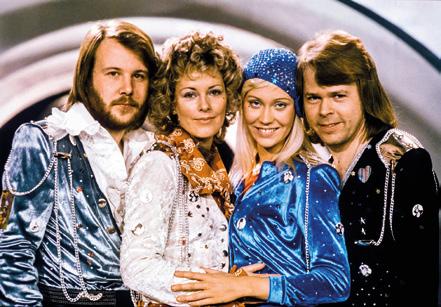
You used to know us as Home Instead Ireland, but now you can call us Dovida.
For more than 20 years, we have been your trusted partner, proudly delivering the highest quality home care to people throughout Ireland. Our mission has always been to enhance the lives of ageing adults and their families by providing personalised, relationshipbased care at home.
However, our client base is also expanding and now includes many individuals under 65 who require assistance for a variety of reasons. What people want from home care is also changing as a new generation requires support. They want to feel more engaged and empowered to make decisions about their care.
Our new brand – Dovida – celebrates both where we come from and where we’re going, and allows us to adapt to the changing needs and wants of the people we support.
“We will continue to serve your communities under a new name, building on our company’s legacy with the same commitment to excellence and compassion, the same faces you have come to know, and the same high-quality care and support that our clients, their families, our network and caregivers have come to rely on,” says Shane Jennings, CEO of Dovida Ireland.
“Our renewed mission is to support, empower, and uplift people by putting them at the heart of every decision we make. We believe that recognising each of our clients’ uniqueness is key to providing the highest quality of home
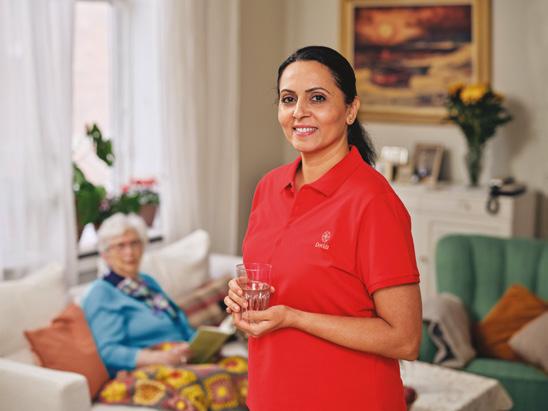
care. Our caregivers approach people with curiosity and compassion, eager to understand their needs, interests, values, and personality. As a Dovida client, you will be empowered to live Your Life, Your Way.”
Dovida delivers home care that empowers our clients to live life their way in the comfort of their own home. We do this by recognising that no two people are the same and shape our care to best match our clients’ and caregivers’ interests, values, and personalities.
As part of our vision for the future of home care, we have introduced the 'Circle of Care’.

Dovida provides care and support that is centred around the individual. This approach creates the ‘Circle of Care’ – a philosophy that places our clients at the centre of a holistic support system that connects families, Dovida’s skilled caregivers and support teams with Public Health Nurses, GPs and physios.
Connection, confidence and choice
While some of Dovida’s clients need caregivers to pop in once a week for some help around the house, others require daily support.
Some clients need temporary help after surgery or respite care to give their loved ones some rest, while others use our services on an ongoing basis. Whatever the situation, we shape our support around our clients’ needs and proudly empower each individual to live their life with connection, confidence, and choice – in a way that is meaningful to them.
Why choose home care?
Choosing home care allows Dovida’s clients to maintain their confidence and independence at home. They receive the level of care and support they need without the stress of a big move.
Choosing to privately fund home care or apply for a HSE Home Support Package is a big decision, and navigating the various options can seem daunting, but Dovida can help with a range of personalised home care packages tailored to our client’s specific needs.
“Our promise is simple: together with our clients, their families and their entire Circle of Care, we create a care environment that is centred around the individual. We focus every moment on forming relationships that empower our clients and help them to do the things they choose to do. Because it’s not just about adding years to your life but adding life to your years,” says Shane Jennings.
Visit dovida.ie or call us on 1800 911 020 to find out more


It isn’t every day of the week you’ll see Bob Dylan paying tribute to someone who’s just died, especially someone in his eighties. But he did to Brian Wilson

His astronomical fees made Wilson feel he was being used by him in the same way Elvis Presley and Michael Jackson began to feel used by their physicians when their focus turned to money. He threw a punch at him one night and Landy threw one back. That caused another split between them.
“Things were better when he left,” Wilson said, “We put out some pretty good albums.” But in 1978 he ended up in a mental hospital, his weight ballooning back up to 300 pounds again.
One day he called Marilyn and asked her for a divorce. She agreed. It took place the following year.
With or without her, his head was still all over the place. On stage he became something of a joke. During one concert he couldn’t help laughing for no reason. Eventually his band fired him.
He’d been seeing another woman for years now, Melinda Ledbetter. She became his rock, nursing him through the eighties and helping him rehabilitate himself in a way Landy couldn’t. This was no easy task. One night in 1985 he attempted suicide by swimming out to sea. Dennis had died by drowning two years earlier.
In 1988 Carl died of lung cancer. As often seemed to be the case with the Beach Boys, tragedy was followed by good news – they had their first number 1 hit since “Good Vibrations” with a song called Kokomo
Landy was still hovering around the fringes of his life now. In 1989 they even formed a business together. It was called Brains and Genius, a play on Brian and (Eu)Gene.
The nineties was a decade of lawsuits for Wilson, many of them relating to the publishing rights of songs sold unwisely by his father decades earlier. He was also the object of a court action himself when Mike Love sued him for failing to give him royalties and songwriting credits.
He married Melinda in 1995. She continued to keep him on the straight and narrow. In 1999 he did his first solo tour. He ushered in the new millennium the following year with his first concert album, Live at the Roxy Theatre
Landy died in 2006. Wilson felt nothing when he heard the news. He was still performing now, his rehabilitation completed by the woman at his side. In 2011 he reunited with the Beach Boys for a 50th anniversary tribute album, That’s Why God Made the Radio.
Four years later there was another album, No Pier Pressure. In 2016 he wrote an autobiography, I Am Brian Wilson.
He developed back problems in 2019 which led to surgeries. The following year his touring was interrupted by Covid. In 2022 he was sued by Marilyn for outstanding royalties. He performed his final concert that year.
Marilyn died last year. Soon afterwards, Wilson developed dementia. There was very little for him to live for now. Then came the news that he was gone from us. His friend Paul McCartney put it well when he said, “How we will continue without Brian Wilson no one knows.”
Wilson was Everyman, a homebody who was as American as Mom’s apple pie. At home he was like a big child but in the recording studio he was a perfectionist, a workaholic, someone who could range from Disney to Gershwin in the blink of an eye. Sean Lennon called him “America’s Mozart.” Wilson saw himself more as Bach – for the counterpoint.
A humble genius, he was, as one writer put it, “Cary Grant without a mirror.”
He hid his demons from people because there were too many albums to be made, too many concerts to be performed. He was a good actor. Even his sad songs, someone said, sounded happy.
“I kept going,” he wrote in his autobiography, “through all of it, all the drugs, all the lawsuits, all the bad feelings that came between me and the people close to me.”
He isn’t “going” anymore, sadly, but his songs are. What a legacy.

His friend Paul McCartney put it well when he said, “How we will continue without Brian Wilson no one knows.”


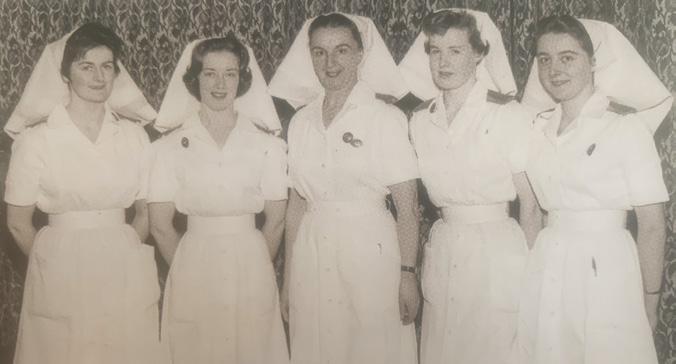
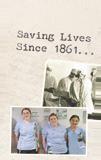

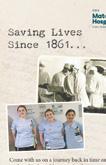






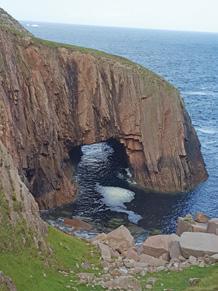
The west of Ireland has always told its own story, a tale of the power of the Atlantic, its storms, its fury and its profound mysteries. Deeply indented estuaries lie between rugged, rocky peninsulas; wild, windswept headlands overlook wide golden beaches; offshore are the islands, some inhabited and others deserted, those islands telling stories of families that wrested a living from the sea surrounding them; now the islands are mainly inhabited by rabbits, birds and, at the water’s edge, otters and often by seals using the shoreline to give birth to their pups.
For over a decade, part of that coastline has been known in the tourist trade as the ‘Wild Atlantic Way’¹, an initiative created to promote the splendour and ruggedness of the area and to advertise the warm welcome awaiting travellers, both native and those from overseas. This winding route covers 2,500 kms of exceptional natural beauty from Ireland’s most northerly point on County Donegal’s Inishowen Peninsula, all the way down to the Old Head of Kinsale in County Cork. Many of the ‘Discovery Points’ along the way are obvious ones – Slieve League, the Cliffs of Moher, Dingle Peninsula among them – but to take time and stray a little off-route can be immensely rewarding.
To begin your journey at its most northerly point, at Malin Head, why not wander from the main route into a narrow, blossomlined lane, one leading towards the sea. Stroll along the trodden

track, drawing in the Atlantic air deep into your lungs. Enjoy the sensations of both exhilaration and calm that come together from living in that moment, fitting into your own space in the environment. Perhaps the view on offer entices you to do some birdwatching, taking time to observe the comings and goings of the various avian creatures. This northerly part of our island is where one of the most engaging of our seabirds is to be seen – the eider ², a large sea-duck that calls the northern coasts of Europe its home along with North America and eastern Siberia. The male eider is a handsome creature with black and white plumage and a large patch of green on the back of its neck. His missus is brown and well camouflaged. She needs to keep a low profile, guarding her little ducklings from predators. For the first part of their lives those little creatures are snuggled deep in a nest that is lined with down plucked by their mother from her breast. Once a commonplace feature on our own beds, eiderdown is now a luxury, a very special ‘crop’ that is only taken from their nests after the ducklings have left home. I love to hear the call of the male eider – it is a kind of a ‘ooh-uh' reminiscent of part of the repertoire of a long-ago comedian, Frankie Howerd, for those who remember him. As you return to your bike or car, look in the grass beside the road for one of County Donegal’s floral offerings – field gentian, a low-growing mauve-flowered plant that is high on the list of rare and special botanical wonders of the region.



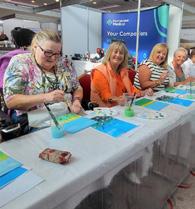
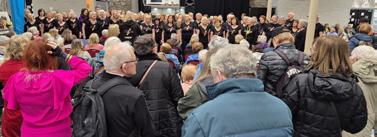

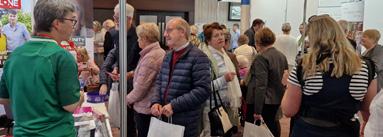
Wend your way down to County Sligo and divert a short distance from the N15 at Cliffony, spending some time at the glorious, wide bay of Mullaghmore, its sandy beach a two-kilometrelong panorama of natural beauty that lies below the skyline of Benbulben. Behind the beach is an amazing dune system with an abundance of biodiversity. Grasshoppers, butterflies, moths, birds and rabbits are plentiful as well as an extensive variety of wildflower species. Marsh-orchids, bearing splendid wine-coloured spikes of flowers, and frog orchids are scattered across the sandy soil along with another scarce treasure, mossy saxifrage, a plant that holds up little white flowers above cushions of pale green foliage. Butterflies, such as the dark-green fritillary, dance and sparkle through the clear, fresh air in this breathtaking place, just one of nature’s wonderlands.
Mullet Peninsula
Depending on how much time you have, a slow meander down the coast can be very rewarding. County Mayo’s Mullet peninsula is worth taking time to enjoy, a wild place certainly but one of great splendour too. For those interested in historical artefacts, on the route towards Belmullet, a brief diversion off the R314 (along the L1202) leads to the parish of Kilcommon where large megalithic wedge tombs can been seen. Way down at the southernmost tip of this rugged peninsula is the Saint Deirbhle heritage centre and standing at the centre of the final loop is Glosh tower on Termon Hill, one of eighty-two Napoleonic signal towers built around Ireland in the early nineteenth century by the English in response to the fear of invasion by the French. This is a wild place, at times raw and bleak but nevertheless one that supports more than its share of wildlife. Our rarest bumblebee, the great yellow bumblebee, was once seen throughout Ireland but is now seldom found except on the Mullet Peninsula. It is a large bumblebee, covered entirely with blonde hairs with a distinctive band of black hairs across its back. This ‘blonde bombshell’ usually nests underground using warm, sheltered areas in tussocky, flower-rich grasslands, machair and sand dunes, preferably in areas that haven’t been mown. The scratchy ‘crex crex’ call of the corncrake, a summer visitor

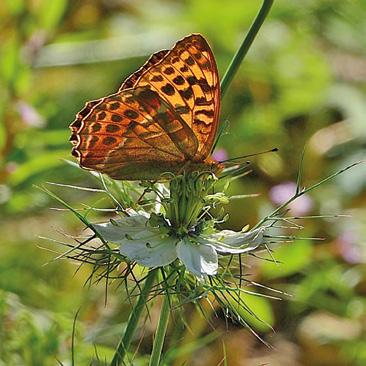

from faraway Africa, is a sound that was once heard more widely than at present but there are promising signs for the return of these amazing little birds with major efforts being made to present them with ideal conditions in which to procreate. The marshy, damp areas of the peninsula are also home to many unusual plant species, such as pipewort, bog asphodel and many species of orchids.







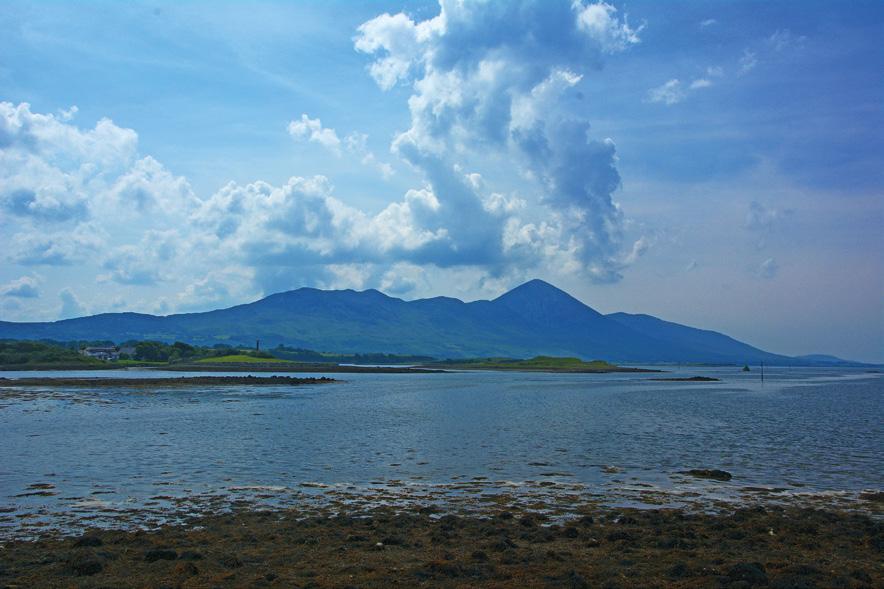
Taking the N59 from Belmullet, a worthwhile stop at Wild Nephin National Park, and then on to Mulranny, from where the R319 will take you to Achill Island. A boat trip is not necessary to get to this island as it has been connected to the mainland by a bridge across Achill Sound since 1887. The largest of our islands, Achill has a lot to offer to the sightseer; stunning mountains, the highest of Ireland’s sea-cliffs, quiet, sheltered beaches –five with Blue Flags – and the exquisite horse-shoe-shaped Keem Bay. Nature-lovers are catered for with the spectacular sight of gannets diving for their quota of fish and royal ferns lining the ditches. Low-growing western gorse is also abundant here as is the rare, evergreen shrub, juniper.
Achill Island was once famous for its shark fishery when basking sharks were caught by local fishermen, mainly for their liver oil. After approximately nine thousand had been harpooned or netted, their numbers went into a severe decline and these slowmoving and placid creatures are now ‘protected wild animals’ under the Wildlife Act. An adult basking shark can be as long
as eight metres with a plankton-scooping gape of up to a metre wide; it is the second largest shark or fish in the world and would seem to be making a recovery in numbers, according to recent sightings. Last year, Malcolm Noonan, then Minister of State for Heritage, said that ‘a collaborative code of conduct for the eco tourism and wildlife watching industry in Ireland’ is to be developed to support best practice, including observation of sharks and whales spotted around the Irish coastline.
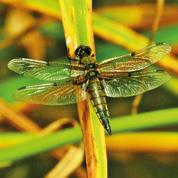
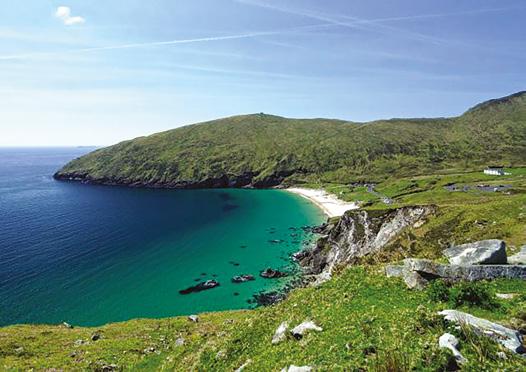

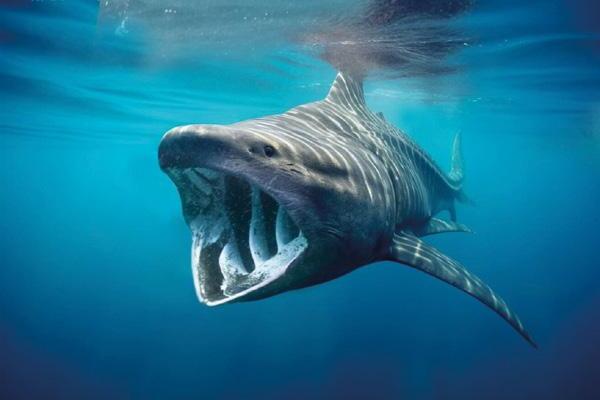
A warm welcome await s you at Dublin City University - Ireland's first Age-Friendly University.
Did you know you can choose from a broad range of modules offered under the AFU programme without the need to take exams or assignments?
In addition, the Lifelong Learning Programme offers a selection of customised modules such as Photography, Life Writing, English, History, Botanical Art, Choir and more...

There are also opportunities to engage in contributing to research, social, cultural and wellness programmes, attend guest lectures and engage in intergenerational exchange
If you would like to hear more about how to get involved in DCU's AgeFriendly programmes come along to the "Taste of DCU" on Wednesday, September 3rd from 8.30 - 1 pm where you can experience being a student for the day, take a tour of the campus and hear more about the work of the AFU.
For more information visit: dcu.ie/agefriendly/news
E: afuinfo@dcu.ie
T: 00 353 1 700 5454
Age-Friendly University Global network
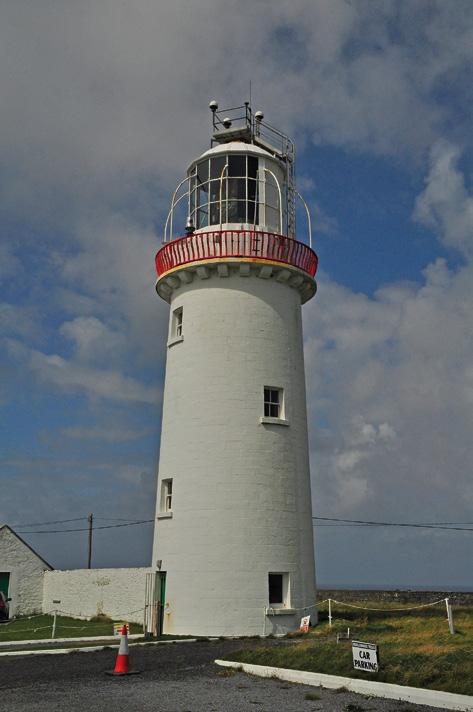
For me, the Loop Head Peninsula was only a recent discovery. This remote, peaceful and uncrowded part of County Clare took my breath away. At its very tip is a lighthouse, standing robustly at the outermost point of the Shannon estuary against the power of the mighty Atlantic. I travelled this route in the month of August and it was beside one of the narrow roads leading from Kilkee to Loop Head that I spotted, for the first time, the most uncommon sight of a wildflower called Babington’s Leek, a species that possibly originated from cultivation of vegetables by monks and named for Charles Babington, a botanist and contemporary of Charles Darwin. It is always a thrill to find something new along these smaller roadways and taking it slowly is the route to enjoying the region to the full.
County Cork has two great offerings – the Beara Peninsula and Dursey Island. The Ring of Beara is a route that takes the traveller from County Kerry’s Kenmare to Glengariff, wending its way around the Beara Peninsula and encircling the mighty Caha Mountains. There is so much to see on this itinerary; if time is limited, I would suggest taking the road towards Glanmore Lake, close to the county boundary with County Kerry and just a short distance from Lauragh. This is in an exquisite jewel of a valley, the narrow road wandering along the eastern shore of the lake, itself studded with little wooded islands and home to dragonflies, common sandpipers and a richness of ferns and deciduous trees such as silver birch.
Towards the end of the Beara Peninsula is the little village of Allihies with the Copper Mines Museum ³ telling the story of how the mines were developed in the early 19th century, extracting ore from quartz rock but finally ceasing production a
century later. Some of the old buildings are now home to several families of choughs, the shiny black members of the crow family with beaks of scarlet to match their legs and feet. I spent a wonderful summer afternoon watching these birds as they flew slowly in circles, tumbling through the thermals under a clear blue sky. Every so often they would land on the grassy sward around me and with their curved red beaks they would dig into the turf, rooting around for juicy worms, before taking off again, calling out their ‘sheeaw’ and giving the appearance of experiencing great enjoyment. I can only say that I hold that little cameo close in my memory.

And so to Dursey! The trip across to the island is not for the faint-hearted or those who suffer from vertigo. It is by cable car 4 and one of the most thrilling journeys anyone could possibly take! It is a short trip – perhaps ten minutes – across Dursey Sound; jagged black rocks jut up through the churning tide below, terrifying those with frail natures. This could be the stuff of nightmares, but it is well worth the trip, swinging high across the 230 metres of ocean to land on a most attractive island and spend the day, if you can, wandering around in this peaceful, shop-free paradise, feeling the unique sense of freedom that only an island can give. I bid you go!
¹ https://www.thewildatlanticway.com ² https://birdwatchireland.ie/birds/eider/ ³ https://acmm.ie/ 4 https://www.durseyisland.ie/times.html
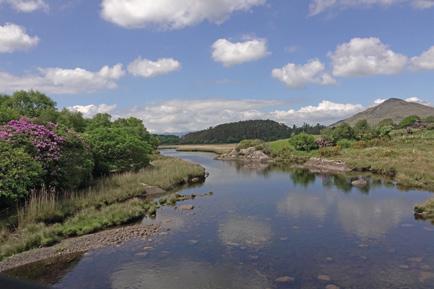



Many organisations such as banks, delivery companies, utility providers and GPs send us information by SMS text message to keep us updated about our financial transactions, parcel deliveries, bills, appointments and many other things.
Scam texts however have made people lose trust in SMS text messages, causing problems for both businesses and consumers.
ComReg and the telecoms industry are putting in place a number of anti-scam measures to help protect us. These safeguards will make it harder for fraudulent texts to be sent. One such measure is the SMS Sender ID Registry.
Text messages often include an SMS Sender ID, a name, to indicate who sent it. This Sender ID may be the name of the organisation or public service who sent the text message e.g. 234BANK.
Scammers often use SMS text messages with fake Sender IDs to mimic trusted services and brands. Such scams can be difficult to distinguish from genuine and legitimate SMS text messages.
Many people are often targeted by fraudsters. They might pretend to be your local pharmacy or a friend in urgent need.
In 2024, 2.3 billion text messages were sent in Ireland. Research estimates the harm to consumers and businesses in Ireland from scam texts is €115 million per year.

All organisations will now need to register their SMS Sender IDs with ComReg to help prevent SMS text scams in Ireland.
What’s changing?
- From 3 July 2025, unregistered SMS Sender IDs modified to ‘Likely Scam’. This label is to alert you that the SMS may not be legitimate, and to be cautious of the content of the message.
- From 3 October 2025, SMS messages from unregistered SMS Sender IDs will be blocked. These messages will be blocked before they reach you.
While this measure will help protect us, scammers might still find other ways to contact us. It’s important to stay alert.
All organisations sending text messages from SMS Sender IDs to mobile users in Ireland now need to register their SMS Sender IDs. This will help prevent this type of scam text, pretending to be from trusted organisations, and help protect SMS as a reliable and trustworthy way of communicating.
What can you do to stay scam safe?
• Think before you click – don’t open any links or reply if something seems unusual
• Never provide any personal information – including your name, bank details, credit card, PPS or password
• If in doubt, contact the senderlook up their official contact details and contact them this way to verify
• Remain vigilant
See more at comreg.ie/senderid
Contact us for advice and support
Consumer Care Team
Phone: 01 8049688
Monday to Friday: 8am to 8pm Saturday: 9am to 1pm
Email: consumerline@comreg.ie
Text: COMREG or ASKCOMREG to 51500 to receive a call or text back (standard SMS rates apply)
Post: Consumer Care Team, ComReg, One Dockland Central, Guild Street, D01 E4XO
Webchat and online form: ComReg.ie
In the latest of her literary travels, Lorna Hogg traces the background to, arguably, the most popular work of Irish fiction ever written
No writer can ever be entirely sure of just how a book - or its hero/heroine, will be received by the general public, or critics. It would be intriguing to know if Bram Stoker had any idea of the reception of his hero, if that is the word! Count Dracula. Mention Stoker's other books - The Mystery of the Sea, Under Sunset or the Lady of the Shroud - and you're likely to draw a blank. When the discussion includes Dracula, however, readers, film and TV enthusiasts will have plenty to say - and share! It all goes to show the staying power and popularity of possibly the best known evil spirit - the be-fanged Count Dracula, re-incarnated in the book by Irish writer, Bram Stoker.
To add to its general interest, Dracula is an epistolary novel. The plot unfolds gradually, in the format of personal letters and memories, notes, diary entries, documents and newspaper clippings. Readers have to put in some effort to understand and consider, rather than just absorbing text. Many readers really enjoy this involvement, working out their own view of events and fully enter into the experience - it comes down to personal taste.
The man who produced - or perhaps `unearthed' Dracula from oblivion, and invented a new literary experience complete with hauntings, was Bram Stoker. Born in 1847 of Anglo Irish stock,
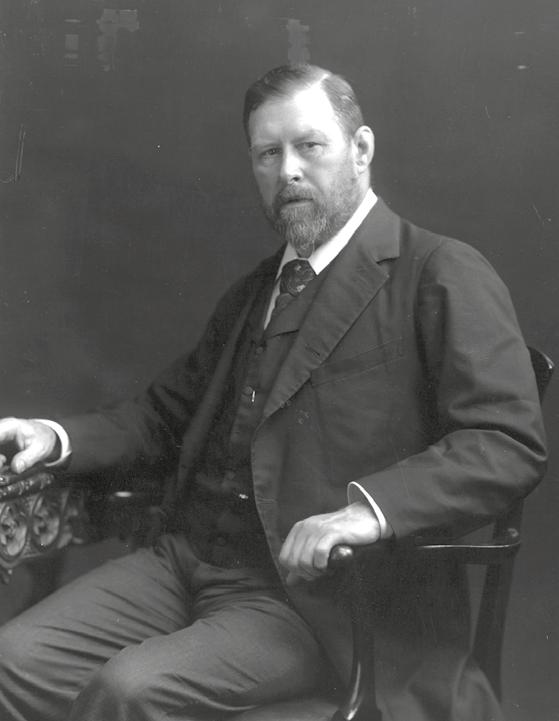
Bram Stoker: He was a sickly child, confined to bed for some of his early years and it is said he could not stand unaided or walk until he was seven.
he was brought up in a comfortable home in Marino Crescent in Clontarf, on Dublin's Northside. As a child, Stoker suffered with illness, and was confined to bed. Sources say that he could not stand unaided or walk until he was seven. Reading and storytelling, with his patient mother, was one outlet available to fire his youthful imagination. He grew up with tales of fairy folk, changelings, Celtic myths, vampires and folklore.
From an Anglo-Irish family Bram Stoker was born in comfortable Marino Crescent, Clontarf, Dublin
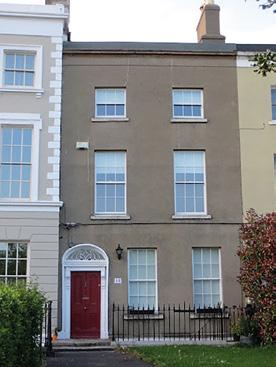

Travelling from Ireland to Amsterdam with the Dutch Hip and Knee Clinic

Imagine walking without pain, climbing stairs with ease, and reclaiming your independence. For many patients in Ireland living with chronic hip or knee pain, this dream is now a reality—thanks to the Dutch Hip and Knee Clinic (DHKC) in Amsterdam. With world-class orthopaedic care, a personal touch, and the option to claim reimbursement for treatment abroad, DHKC has become the destination of choice for those seeking timely, expert hip and knee replacements.
Here’s what your journey to renewed mobility looks like.
It all begins with a simple call or email to the DHKC team. From the outset, you’re supported by Bryony, the clinic’s friendly and knowledgeable Patient Co-ordinator, based in Ireland. She will walk you through every stage of the process, ensuring clarity and confidence from the very beginning.
You’ll provide any existing scans or referral letters, and then attend a consultation virtually. You’ll meet Dr. Michiel van Trommel, one of the Netherlands’ top orthopaedic surgeons, who specialises in minimally invasive hip and knee replacements. He will assess your case and, if appropriate, schedule your surgery—often within weeks, not months.
One of the most compelling aspects of DHKC is the ability to reclaim the cost of
your surgery through the HSE Cross Border Directive. The DHKC team will guide you through the process, helping you complete the necessary paperwork and understand what’s covered. This means you can receive top-quality treatment abroad much quicker.
With daily direct flights from Ireland to Amsterdam, your journey is smooth and stress-free. DHKC can assist in arranging airport transfers, local accommodation, and all logistics related to your stay. You won’t be alone—many patients travel with a partner or family member, and the clinic helps ensure everyone is comfortable and wellprepared.
Your surgery will take place at a dedicated orthopaedic hospital in Amsterdam, where the focus is solely on joint care. The facility is calm, modern, and staffed by an expert team who prioritise your comfort, safety, and swift recovery. Dr. van Trommel uses the latest surgical techniques to minimise pain and maximise mobility from day one.
Most patients are walking again within 24 hours of surgery and return home just a few days later. With a personalised recovery plan and direct access to follow-up support, you’ll continue to heal with confidence. The clinic remains just a phone call away, and you’ll be scheduled for virtual or in-person follow-ups as needed.
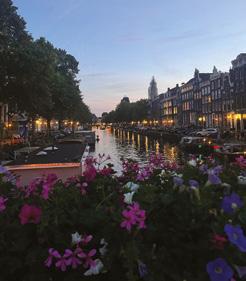

DHKC
• No Waiting Lists – Quick access to life-changing treatment
• Reimbursement Available – Via the HSE
• Minimally Invasive Surgery – Less pain, faster recovery
• Expert Surgeon – Dr. Michiel van Trommel is among Europe’s best
• Patient Coordinator in Ireland – Full support before, during, and after
• Seamless Travel & Stay – Assistance with flights, transport, and accommodation
If you’re tired of waiting or struggling with daily pain, there is another way forward. With expert care, personalised support, and reimbursement options, the Dutch Hip and Knee Clinic can help you reclaim your life— faster than you ever thought possible.
Phone 0834460552 or 0870029686
Email ireland@dhkc.nl
Website: dhkc.nl



capacity for hope, that he recovered, both physically and intellectually, in time to attend Trinity College Dublin. Back in full health, he went on to become successful in both the academic and sporting areas, perhaps driven by the amount of time wasted due to his childhood illness. A superb athlete, from rowing to rugby, he also became auditor of both the long established Historical and Philosophical Societies - an achievement as yet unmatched, and was distantly related to writer Conan Doyle.
After his time at Trinity, Stoker joined the Irish Civil Service - where he stayed for a decade. He also became a freelance writer, and newspaper theatre critic. After his early years of confinement to bed, it must have seemed that the world was finally opening its doors to him. Stoker enthusiastically made the most of all his opportunities - he met Henry Irving, who became a close friend, Oscar Wilde and Lord Tennyson.
On a personal level, he also won out over Oscar Wilde. The pair `competed' to marry the beautiful and sought - after Frances Balcombe - and Stoker won. The young couple next moved to London, where his ambition, hard work and new contacts, soon brought success. He become a personal assistant to Henry Irving, and also Business Manager at the Lyceum Theatre. Work brought regular travel, and Stoker especially enjoyed trips to the United States.

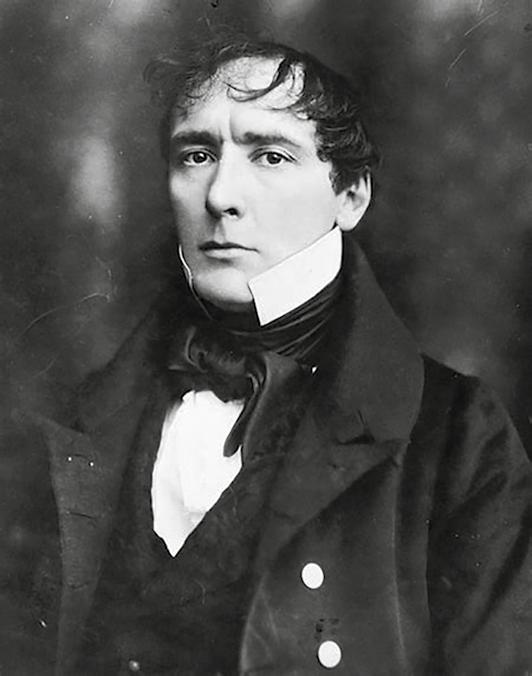
Clearly, however, his ambition never left him for long. During his tedious periods of youthful bed rest, he may well have encountered stories of the notorious medieval dictator, Vlad the Impaler VIII, Prince of Wallachia.
We now recognise Wallachia as what would have been part of the modern country of Romania. In the fifteenth century, however, it had a ruler with what today would be called severe underlying psychological issues! Not a man who believed in consensus politics or reconciliation, one of Vlad's favourite forms of dealing with enemies was impaling them on stakeshence his nickname.


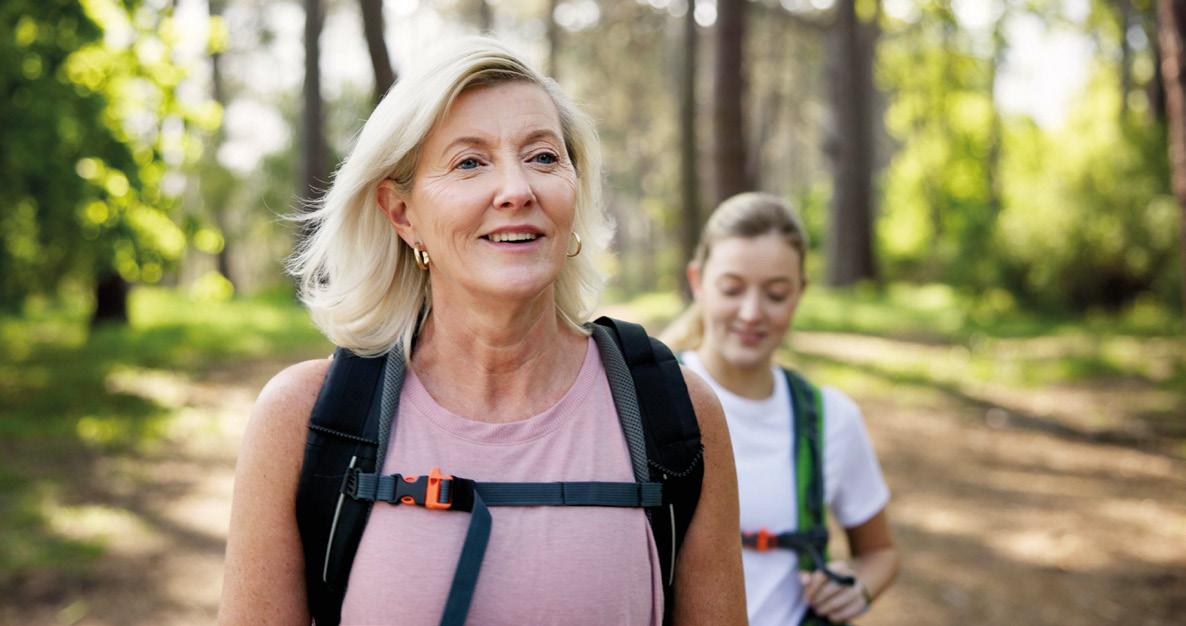







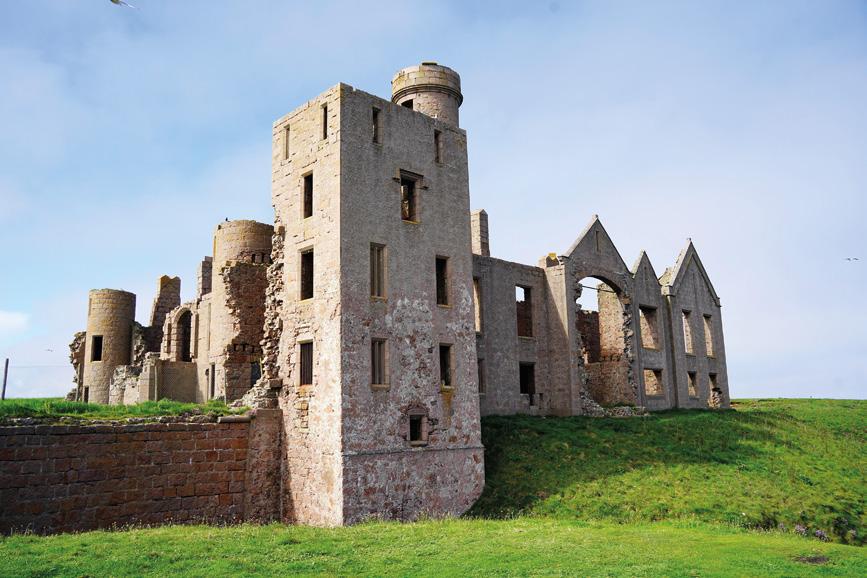
Dracula, however, proved a good choice of literary subject matter for Stoker. His mixture of horror and romance touched the dark side in some readers. The mystery, the sense of surrounding death and decay added to the drama of the ancient fight between Good and Evil.
Stoker was thorough and enthusiastic in his background research. He enjoyed visiting Scotland, and was inspired by the Cruden Bay area, in Aberdeen. It was near to Slains Castle, which may have influenced his vision for Castle Dracula. The octagonal hall in Slains, entered by opening a door, ‘which led into a small, octagonal room, lit by a single lamp and seemingly without a window of any sort..’ is mentioned as one possible influence. However, his imagination was not fired only by imposing and historical sights - the small English coastal town of Whitby provided the brooding background for the arrival of the evil Count.
He also devoted time to extensive research into vampires and folklore. From Irish fairyfolk, both malevolent and benign, through to Central European changelings, plus, of course, vampires - Stoker read up on his topic. His vampires, many feel, manage to represent both attraction and repulsion. Stoker's vampire was not a ghastly, stain and blood dripping entity, who roamed the earth at night, complete with mad red eyes and stained rags. Rather, he or she combined allure with terror, rising from a well made coffin, and seeking retreat with the approach of sunlight. This creature of the night who happened to drink blood, was vulnerable to sunlight and destined to eternal life apart from his/her loved ones.
Replace the power of the written word with the filmed variety - and around two hundred of those have been made so far, and the interest in Dracula continues to grow. Perhaps the ability to keep moving with the times the real key to eternal life!
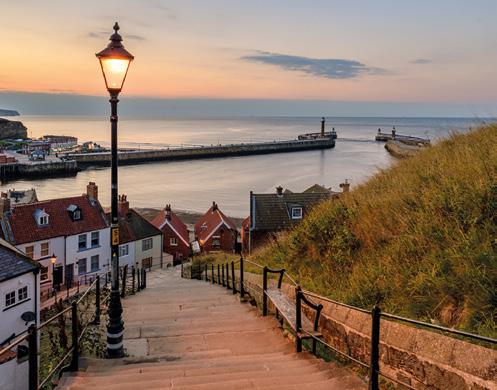
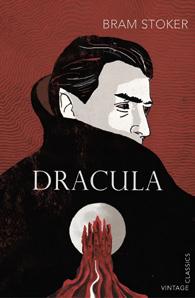
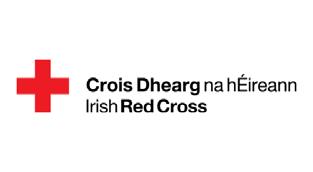

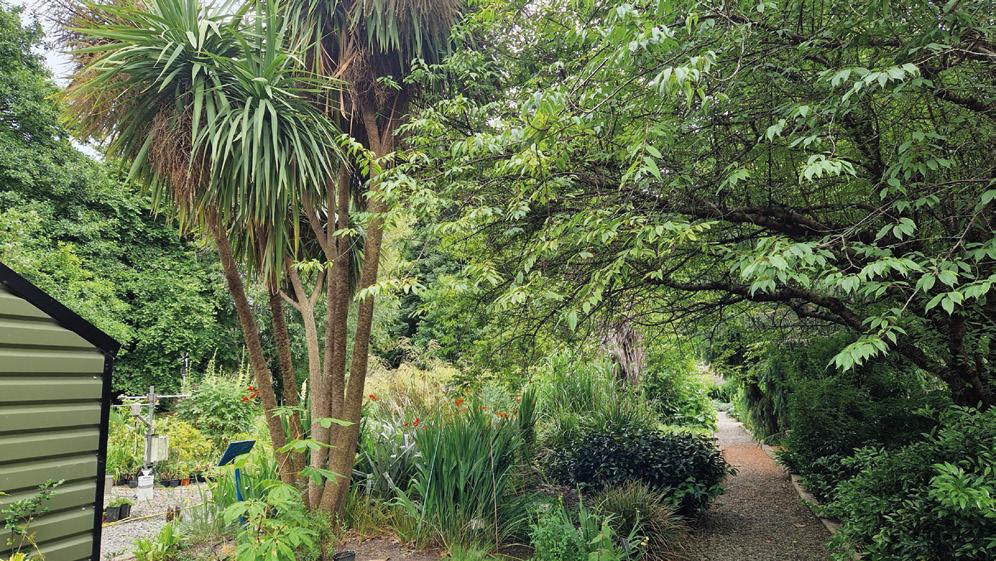
Ireland is fortunate indeed to have one of the oldest gardens - in the original definition of the word, in the world. Over the past three centuries, the Garden at Trinity College, Dublin, has gone through different usages, plantings, and developments - not to forget moves. Happily, it is still going – and growing, strong. The Garden has also morphed considerably since its initial planting in 1687, as a Physic Garden. Throughout a chequered and ever changing history, as well as constantly and carefully adapting, it has earned worldwide respect – with the contacts to prove it.
In the 1600s, Trinity College in the centre of Dublin, was, understandably a much smaller university, with a campus to match. Back then, the garden’s role was to produce plants with medical usages, to be used in the teaching of medicine – drugs as we understand them, were, of course, unknown. Created in 1687, the original garden was sited beside the Anatomy Department. It taught and researched medicine in its then embryonic form - and that included the usage of plants and some flowers in the process. However, life did not go exactly to plan, and by 1773, the garden was unusable and derelict –and contained discarded offal, i.e. body parts, tossed away by the students from the Anatomy Department. The smell, not to even consider the health consequences, must have been beyond imagination!
Another attempt at a college garden was made in 1806, when the garden moved to Harold’s Cross for a brief spell, before re-locating to Ballsbridge. It was at this time, that it started to show what could be produced in Ireland. Curator James Townsend Mackay was a significant figure, and under his care, in the 1800s, the garden became well established. Mackay had spent time in Sabah, which was what we now know as Borneo. Under his care, plant diversity, as well as research into the possibilities of developing medicine from plants, became a topic of interest. Another esteemed curator, F.W. Burbridge
introduced the first flora of Ireland – Flora Hibernica, and was also noted for his work on the hybridisation of the narcissus.
By the 1890s, and the college’s tercentenary, the Botanic Garden was a college feature, and becoming internationally noted. Trinity had risen to the stage of having a Department of Botany, and was acknowledged for its standards. International gifts -e.g. tree ferns donated from Australia, helped the work.
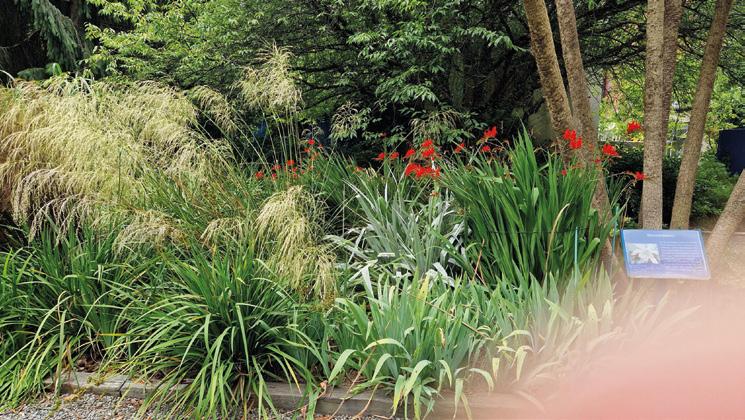
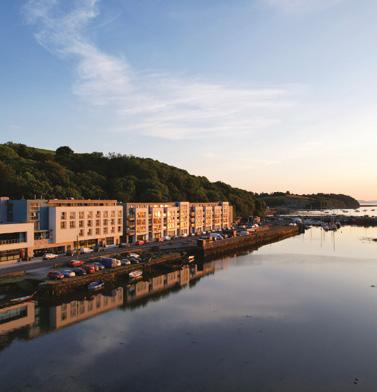



This summer, soak up the magic of West Cork with an escape to The Maritime Hotel, perfectly perched along the spectacular Wild Atlantic Way. From scenic strolls and sea air to local artisan delights and unforgettable sunsets – Bantry offers everything you need for a rejuvenating staycation.
✓ Prime location on the Wild Atlantic Way
✓ Complimentary Wi-Fi & Parking
✓ Nightly Entertainment for Residents
✓ Summer Special Offers Just for You
✓ Full Access to Leisure Centre – 19m Pool, Sauna & Gym
Your Summer Starts Here – Only in Bantry.








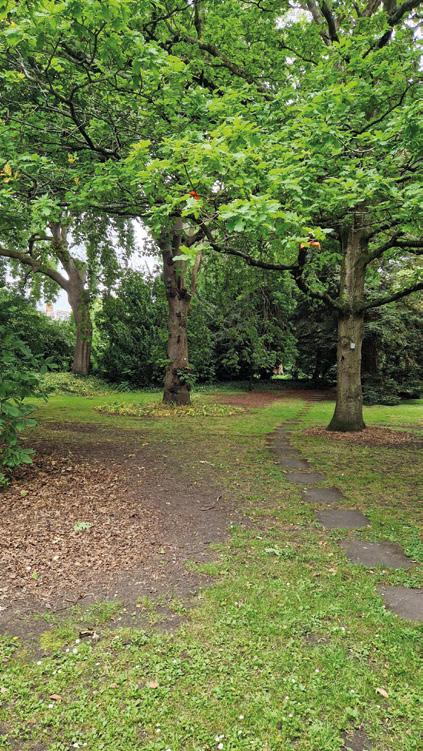
Today, the college garden still houses a wide variety of specimens – along with a plant seed bank and Irish threatened seeds bank, with the assistance of four heated glasshouses. They have helped plants to settle, and the more exotic varieties to adapt to Irish weather. College students visit regularly – and the rest of us are also welcomed, with regular group tours. Plants are becoming increasingly recognised for their role in healing, and of course, Trinity’s Irish and worldwide contacts help developments and plans. Understandably, this all adds to the respect in which the garden is held.
Conservation biology, which clearly speaks for itself, is a current interest for the garden, as well as teaching and research. Another is taxonomy, which focuses on careful classification of plants. Physiological and ecological work along plant response to climate change, are unsurprisingly, viewed as major concerns.
The garden is also concerned with the role played by pollinating insects, and the Herbarium is an important addition to its range of interests.
Of course, the original aspects of horticulture continue to play an important part, and these are helped by careful acquisitions and gifts, as well as the standard purchase and trade of plants, which can include some exotic specimens. Visitors to the garden
are now delighted and intrigued by a plant of which many of us have heard, but perhaps have not had the opportunity to see –the infamous `Venus Fly Trap’.
It say much about the Victorian view of females that the name of a temptress who leads victims, often unwary males, to their doom by her beauty, was chosen for the carnivorous (for insects) plant! Well, it is a very beautiful, graceful sight, complete with whirls and curls in its branches. However, the Venus Fly Trap is a classic example (for insects especially) of the old adage, `Look, but do not touch!’
Found in the American Carolinas, this insectivorous plant uses its unusual furled stems, to trap the unwary – or unaware insects who fly on to it. The plant’s simplicity and elegant design is comprised of a fretwork of tiny hairs, which after a couple of light brushes, spring into action, and start to clamp down and close, trapping the small victim. Desperate attempts to escape will only make them close faster and tighter, in a micro sized horror show! The `trap’ hairs are designed to work up to ten times – which can bring in quite a few bugs, before the plant reaches the end of its hunting life, meeting its time to die.

Admission is free. Check the website for dates and times of tours.
Getting there:
By car: From Rathmines drive to the end of Palmerston Road where you will come to the gates of Palmerston Park. The gardens are behind the park
By Luas: Beechwood is the nearest stop but it is a ¾ mile walk. By bus: check with Dublin Bus as the route will depend on where you are coming from
Trinity College Botanic Garden, Palmerston Park
Dartry Dublin 6 D06 W226
Tel: (01) 4972070
Email: botanicgarden@tcd.ie Website: trinitybotanicalgardens.
Opening times: Monday to Thursday 9am to 4pm. Friday 9am to 3pm. Closed Saturday and Sunday
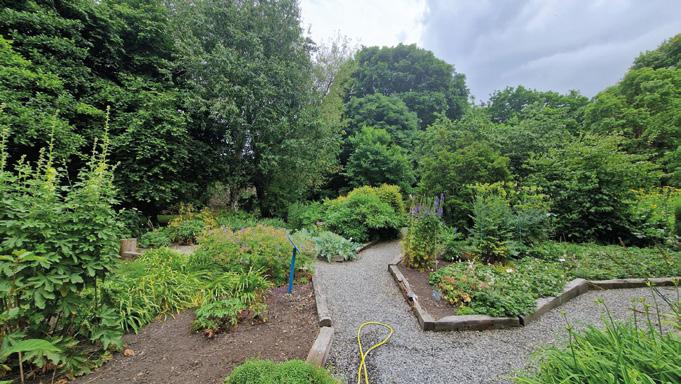



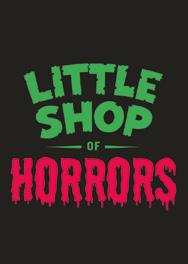

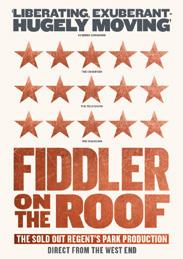
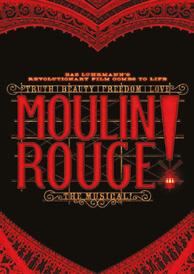
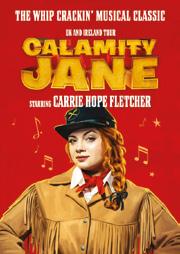
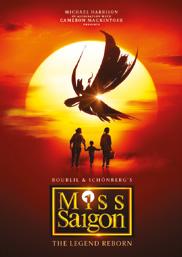
Hannah O’Conmor meets the remarkable Phil Brown who doesn’t do things by halves: she used one of her hobbies as the launchpad for a whole new fulfilling activity that knits her personal and familial aspirations into a seamless expression of a fitness routine, a focal point for shared family achievements and a hugely impressive track record in weightlifting
What had you originally thought you'd be doing when you eventually retired?
Originally, I thought that I would travel the world, have a bag at the front door ready for any trip around the world at short notice. The sport of weightlifting provides lots of travel opportunities as competitions are run in many countries all over the world.
What had your outside of work interests been while you worked in Dublin City Council ?
I was always into fitness, aerobics was the thing when I was younger and I also did yoga, and I did imagine training as a yoga teacher for retirement.
I am now doing a level 1 weightlifting coaching course which will qualify me to coach other lifters in the sport.
What sparked your interest in the sport you now compete in?
My youngest son started weightlifting in his early 20’s and I went to all his competitions back then and still do to support him in the Sport of Weightlifting.
In 2018, I decided to join the gym where my son ran a weightlifting club, initially it was to spend time with him as he was going through a difficult time in his life. Within six months I started competing as a Master and as I am a very competitive person by nature I was hooked.
How has your current sport impacted the rest of your family, has the sport been integrated into their lives too?
My involvement in the sport inspired my husband to start lifting too and he now competes as well. Two of my sisters have both taken up strength training as they see the benefits I have gained in my body shape and strength as I age.
The importance of weight bearing exercise for people who age is vital to prevent falls as we grow older.
Was fitness and exercise always a part of your psyche and how has that changed now you have retired from the workforce, (I suppose in other words, are the competition needs replacing the time and energy you previously put into your work?)
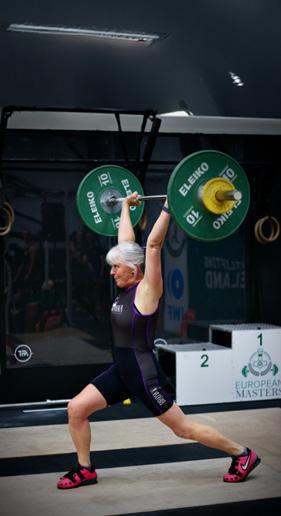
Yes, the time I put into my sport now is certainly almost equal to the time I put into work before, I have trained as a referee now to help as well as compete.
I also volunteer at events helping out where needed as the sport of weightlifting depends on volunteers like most sports.
What strength do you draw from the satisfaction you find in weight lifting?
I feel empowered as a woman when I lift weights. I have two grandchildren who I can lift with no problem. I also help to look after my mother who is 93 and the strength I have certainly helps me.
What are you preparing for next?
I am training currently for two big competitions, the European Masters Championships, Then the World Masters Championships in September 2025 in Las Vegas.
I have competed in five European Masters Championships since 2019, and in two World Championships.
If you know of an older person who is breaking the ‘age barrier’ in any field Senior Times would love to hear from you.
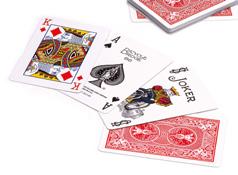
Michael O’Loughlin has enjoyed teaching bridge for over 40 years; his book, “Bridge: Basic Card Play” is available from the Contract Bridge Association of Ireland (01 4929666), price: €10.
Do not denounce the lower sequences either…. Dealer: North None Vul
by Michael O’Loughlin
There is no doubt that the opening lead is a bit of a shot In the dark as it’s a unique card, i.e., the only card out of the fifty two cards that’s played without a sight of dummy.
With only the information of the bidding and the thirteen cards you are staring at to guide you, it is sensible to fall back on tried-and-tested winning lead strategies. Here are two of the very best opening leads versus a trump contract:
Sequence – lead top from A-K, K-Q, Q-J, J-10 and 10-9 showing partner the card immediately below and denying the card immediately above whatever card you happen to lead.
Singleton – to make yourself void in that suit and (hopefully) get a ruff.
You’ll notice that Sequence and Singleton both start with the letter “S” as does suit contract – a useful aide memoire.
Ace from the A-K is the best top-of-a-sequence lead (indeed the best lead of all). It gives you a free look at dummy and you are still on lead (except in the unlikely event of your Ace being ruffed/trumped).
King from K-Q is also very powerful: roughly on a par with a singleton. If partner holds the ace, the king will win. Even if the king loses to declarer’s ace you should not feel bad – for your queen is likely being promoted into a second-round winner. Do not denounce the lower sequences either….
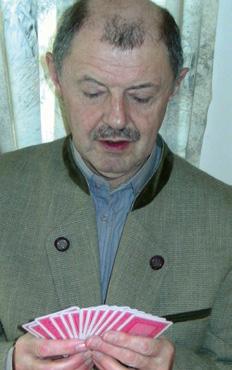
West North East South
Pass 3NT(1) Pass 4♠ (2)
Pass Pass Pass
(1) Balanced 19 points.
(1) Balanced 19 points.
(2) Knowing partner has a balanced hand containing at least a doubleton spade: therefore, our
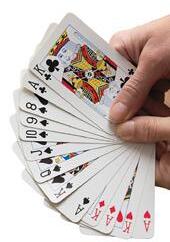
(2) Knowing partner has a balanced hand containing at least a doubleton spade: therefore, our side has at least an 8-card spade fit. Lead: ♣J
On our featured deal – a 4♠ game – West’s choice of deal was, as so often, crucial. Declarer would make overtricks on all but one lead – the club sequence. West’s ♣J through dummy’s ♣K was the killer. West would not lead from the ♣A at trick one so there was no point in declarer playing dummy’s ♣K. The ♣J held and the ♣10 followed (top of two remaining – the Rule of Two). East overtook with the ♣Q (in case West had no more), then cashed the ♣A.
At trick four, seeing no future in either red suit, East led his thirteenth club (key play) and, after declarer discarded, West trumped with the otherwise useless ♠8. Dummy could overtrump with the♠Q but East’s ♠J109 now had to score a trick. A lovely uppercut and trump promotion – down one. More tips for Intermediate players can be found at:
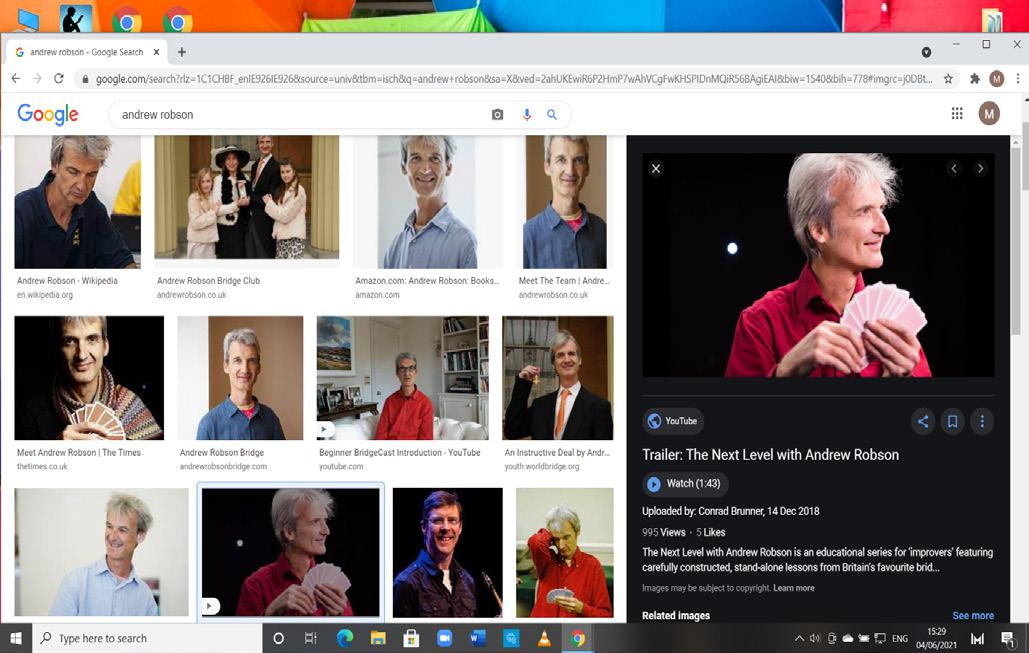
https://www.andrewrobson.co.uk/andrew/tips_for_intermediates
Whether you’re a beginner or an experienced club player, join the BridgeCast community and access the expertise and insight of a world-renowned player and teacher to improve your bridge game. BridgeCast is a monthly video subscription service offering Andrew's new Bridge videos either daily or three times a week.
More tips for Intermediate players
https://www.andrewrobson.co.uk/ andrew/tips_for_intermediates/
If you wish to receive three times per week free bridge emails which include lessons, videos & quizzes, please email me: michaelolough@yahoo.com
K63
MiniBridge is a simplified form of the complex card game Contract Bridge. MiniBridge is designed to introduce newcomers to playing techniques without the burden of learning a detailed bidding system.
Playing Minibridge provides a superb environment for beginners to become comfortable with the mechanics of contract bridge, before they embark upon learning the auction phase of the full game.
A player needs some way to judge how good their hand is. The time-honoured way is to give a value of 4 to an Ace, 3 to a King, 2 to a Queen and 1 to a Jack. These are called High Card Points (HCPs for short) because one is allocating a Point value to one’s High Cards. These values make sense as an Ace is better than a King, a King better than a Queen and a Queen better than a Jack. Each of the 4 players takes a complete suit, shuffles and deals that suit. For example, North might have all the Spades, East all the Hearts, South all the Diamonds and West all the Clubs.
In MiniBridge, players announce their number of high-card points. MiniBridge like Contract Bridge is a partnership game. North and South sitting opposite each other form one partnership while East and West sitting opposite each other form the opposing partnership. The partnership with more HCPs then plays the hand. If both partnerships have the same number of high card points (i.e., 20 each), the hand is redealt.
From within the partnership with the more HCPs, the particular player with more high-card points becomes the Declarer. If both partners have the same number of high-card points then the player who announced their points first becomes Declarer.
ªA 3 2
A842 §Q105 ªQ104 ªJ975 ©J974 ©Q108
QJ10
©K63
¨A842
§Q105
ªQ104 ªJ975
©J974
973 §A87 §962 ªK86
©Q108
¨QJ10 ¨973
©A52
§A87 §962
¨K65 §KJ43
ªK86 ©A52 ¨K65
South is Declarer which means that she plays the cards from her well as deciding which card to play from her partner’s hand. Her North, sitting opposite and since North does not take any part in the cards, she is known unflatteringly as the “Dummy”.
§KJ43
The player on lead, usually selects a card from her longest suit, i.e., the suit in which she has the most cards. Therefore, West selects the 4 of Hearts.
The player on the left of Declarer, i.e., West, makes what’s called Lead, i.e., plays the first card.
South is Declarer which means that she plays the cards from her own hand as well as deciding which card to play from her partner’s hand. Her partner is North, sitting opposite and since North does not take any part in the play of the cards, she is known unflatteringly as the “Dummy”.
The player on lead, usually selects a card from her longest suit, i.e., which she has the most cards. Therefore, West selects the 4 of Hearts.
After the ♥4 has been led, Dummy arranges her cards from the highest to the lowest, in suits, in columns, facing Declarer thus:
The player on the left of Declarer, i.e., West, makes what’s called the Opening Lead, i.e., plays the first card.
After the ©4 has been led, Dummy arranges her cards from the lowest, in suits, in columns, facing Declarer thus:
♥ ♦ ♣
The player on lead, usually selects a card from her longest suit, i.e., the suit in which she has the most cards. Therefore, West selects the 4 of Hearts.
K A Q 3 6 8 10 2 3 4 5
After the ©4 has been led, Dummy arranges her cards from the highest to the lowest, in suits, in columns, facing Declarer thus:
Declarer should spend a little time making a plan. On this deal, South’s target is to win 9 tricks. Where are her 9 tricks going to come from?
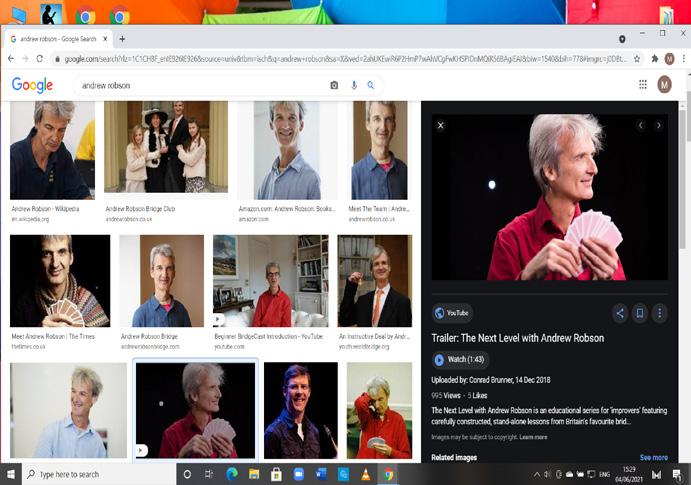
https://www.andrewrobson.co.uk/andrew/tips_for_intermediates
She counts 6 top tricks i.e. tricks that she can win straight away, without giving up the lead: ♠AK, ♥AK and uAK. But where are the other 3 tricks to come from? The only possible source is the Club suit. She sees that if she gives an opponent one trick in the ♣A then she will have set up three tricks in the Club suit for his side. Accordingly, as soon as she wins the first trick, she immediately sets about knocking out the ♣A. Declarer must take care to retain her ♠AK, uAK and her other top card in order to keep control in those three suits while she goes about her business of knocking out the ♣A.
Then onto the next deal: each of the 4 players takes a complete suit, shuffles and deals that suit. In this way plenty of practice is obtained and each time Declarer has a targeted number of tricks

If you wish to receive three times per week free bridge emails which include lessons, videos & quizzes, please email me:
The reason that each player deals a complete suit is to make sure that every player is dealt 3 three-card suits and 1 four- card suit. This ensures that the deal is played in a No Trump situation, i.e., there is no Trump suit: all four suits are of equal value when it comes to playing the cards. About half the time in Bridge, the game is played in a No Trump situation and about half the time one of the four suits is designated as being the Trump Suit, i.e., the Master Suit with special powers which we will go on to later. To be
• See and speak to your partner and opponents - just like face-
• Connect with everyone at the table. Bid and play and go over the hands afterwards to learn from the post mortem. If you wish to try RealBridge for free, just email me:
just like face-to-face bridge.
• Connect with everyone at the table. Bid and play and go over the
Rixi Markus was born in 1910 into a prosperous Austrian Jewish family in Romania. In 1916, her family fled, ahead of the Russian advance, settling in Vienna.
As she wrote in her autobiography, “A Vulnerable Game”: “As long ago as I can remember – and I claim that my memory goes back to the time when I was four years old – my parents and their friends and relations played cards.” As she watched them play, she noticed the concentration on her father’s face.
Indeed, so great was their concentration that none of them noticed the little girl, just tall enough to peek over the table top, watching them with such intense curiosity. Her interest in cards increased and at the age of thirteen she got her break. One evening at home she was sewing and watching her family play bridge when her uncle said teasingly: “Pity you can’t play, it would break the monotony of this foursome.” She looked up at him and said: “Of course I can play.” Her uncle insisted the game was too difficult for her but she persisted, “Let me try.” She joined in and turned out to be a winner that evening. She told them she had learned to play just by watching them.
After finishing school in Dresden she returned to Vienna, where she became part of a bridge circle. Her talent quickly became clear and she was soon known as a bridge prodigy: flattered by the attention of elderly gentlemen standing around watching her play. Her regular partner was a lawyer, Dr. Hirschler, much older than her, who was an intelligent and talented player from whom she learned much. People were rather amused at first to see this young woman (she looked much younger than she was) lined up in partnership with a small, fat older man.
Then she met her husband. He tried to restrain her from bridge playing, jealous of the adulation she was receiving. But by now she had become a star performer and was not about to stop. The marriage never really worked out. She referred to it as a “disaster”.
1938, she fled Austria after German forces entered Vienna (the Anschluss). Markus then made her home in London, where she remained for the rest of her life. She worked as a translator for the
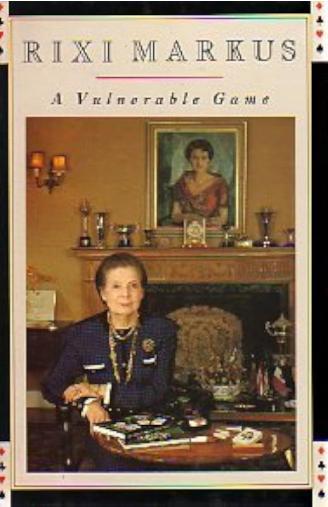
Red Cross during World War II and became a naturalised British citizen in 1950.
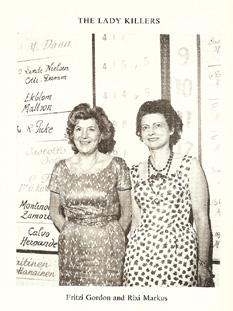
and a bridge enthusiast, pointed out Fritzi Gordon to me, saying 'There is the partner for you.' I was not enthusiastic. For one thing, I already had a more than satisfactory partner in Doris Rhodes, a good friend, and for another I suspected that Mrs. Gordon and I would not hit it off socially, whatever we did at the table. My opinion did not change when she played at the Hamilton Club and I got to know her better. But as far as bridge is concerned, I have not a word of complaint about Fritzi Gordon, for she was a wonderful player and an excellent partner, who contributed greatly to my own success."
Rixi Markus was born in 1910 into a prosperous Austrian Jewish family in Romania. In 1916, her family fled, ahead of the Russian advance, settling in Vienna.
An amusing side-effect of one of their victories together was that the prize for the Gold Cup was a pair of men’s hair brushes, the organisers not having anticipated female winners. Rixi Markus kept hers until the end of her life.
As she wrote in her autobiography, “A Vulnerable Game”: “As long ago as I can remember – and I claim that my memory goes back to the time when I was four years old – my parents and their friends and relations played cards.” As she watched them play, she noticed the concentration on her father’s face. Indeed, so great was their concentration that none of them
Her husband, Salomon Markus, also came to London. He opposed her efforts to gain independence in every way he could, and fought her for custody of their daughter, Margo. Divorce was not simple in those days, but Markus obtained a judicial separation and a subsequent divorce in 1947. She described in her autobiography three subsequent longterm relationships with men: first Standish Booker, a leading bridge player, then Wash Carr of the News of the World, and lastly Lord Lever, a senior Labour Party politician.
Bridge career and personality
Brilliant, intense and argumentative are amongst the mildest adjectives used to describe her presence at the table. In 1950 Markus qualified to play for Britain by virtue of her naturalisation.
It was Rixi's partnership with Fritzi Gordon in the European championships of 1955 that led to her dominance of the female game in Europe. Excitable and voluble, their post-mortems could often be heard many tables away. In her autobiography Markus made her attitude to Gordon clear: "As early as 1945 Dr. Paul Stern, a prominent lawyer
Her advice: “There are several ways to improve your game. One is to play with players who are better than you are, another is to watch first-class players, and a third to play for stakes so high that it hurts you to lose. To be a good player you must have both courage and discipline, excellent judgement and sound psychology. Logic helps a great deal too.”
One of her favourite bridge slogans was: “ Hope for the best but provide for the worst.”
She was awarded an MBE for contributions to bridge. For many years she organized an annual match between the two the Houses of Parliament: the House of Commons versus the House of Lords. She died of a heart attack on 4 April 1992 at the age of 81.
Bibliography: The Bridge Immortals by Victor Mollo. Tales from the Bridge Table by John Clay.
At Dublin City University (DCU), the Age-Friendly University (AFU) initiative continues to innovate how we think about ageing, learning, and community. As the world's first university to adopt the Age-Friendly University principles, DCU has long championed inclusion, purpose, and lifelong learning for older adults. Central to this vision is the idea that ageing is not a decline process but an evolving opportunity for growth, creativity, and connection.
This commitment came to life in a joyful and dynamic way through DCU AFU's partnership with Hasbro Games, a global leader in play. Together, they have hosted several successful Intergenerational Games Night—a celebration of laughter, storytelling, and strategy shared across generations. These events bring older adults, DCU students, and community members together to play classic and contemporary board games, sparking new friendships and conversations that transcend age.
However, this is not just about rolling dice and moving pieces—it was about reclaiming play as a powerful tool for intergenerational engagement.
Board games have long been recognized as catalysts for connection. They provide a natural and accessible space for people of all ages to come together, collaborate, and have fun. For older adults, games can help combat social isolation, stimulate cognitive function, and reinforce a sense of inclusion and belonging. For younger people, games offer an opportunity to learn from the life experience, wisdom, and humour of older generations in a relaxed and enjoyable setting.
"As part of Hasbro's long-term commitment to inclusive play and community partnerships, we are delighted to partner with DCU on this great initiative that connects people of ages. The fun and laughter at these events are infectious, searching for CLUES... passing GO and collecting €200… you can even win second prize in a beauty contest!-"
-Gerry Heeley , Hasbro.
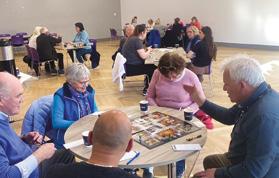
DCU AFU's partnership with Hasbro exemplifies how institutions and industries can collaborate to create meaningful shared experiences. As part of Global Intergenerational Week, this Games Night reflects AFU's broader mission: to make DCU a place where people of all ages can thrive, contribute, and learn side by side. By transforming a simple evening of games into an intergenerational exchange, the event reminded participants that community can be built not only in classrooms or lecture halls—but also around a board game.
"There's a simple joy in sitting down to play a board game — no need for shared language just shared laughter and focus. It's a form of connection that cuts across age, culture, and ability, reminding us that play is a universal human need."
— Dr. O'Kelly, Age-Friendly University Coordinator at DCU
Beyond the event itself, the collaboration speaks to the evolving role of universities in an age-diverse society. Through initiatives like drop-in digital clinics, creative ageing modules, volunteer opportunities, and public lectures, DCU
Mr. Gerry Healy, Account Manager, Hasbro Games, Ms Eitne Cosgrove, Crossmolina National School, Dr. Christine O'Kelly - Age-Friendly University Coordinator, DCU, Mr. Des Duggan, Senior Times
DCU AFU participants and DCU Students at an Intergenerational Games Night
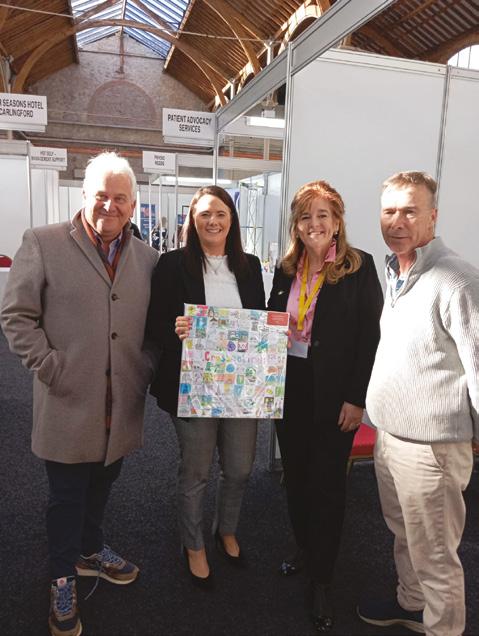
AFU is pioneering a model of education that welcomes older learners and actively encourages connections across age cohorts.
"Age-friendliness," as practised at DCU, is not a side programme but a guiding principle woven into the fabric of university life. The partnership with Hasbro is one of many examples of how creative, cross-sector partnerships can support this vision.
In a world that too often separates generations, DCU's Age-Friendly University programme reminds us that connection is not only possible— it is essential. Whether through play, learning, or conversation, intergenerational engagement enriches the lives of everyone involved. Sometimes, all it takes to spark that connection is a deck of cards, a shared laugh, and the roll of a die.
To learn more about DCU's Age-Friendly Programme, visit us on Wednesday, September 3rd, for our annual Open Day "A Taste of DCU". Register at www.dcu.ie/agefriendly to attend.
Telephone 01 700 5454
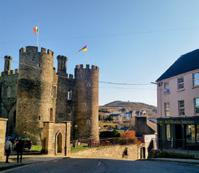









People may feel a range of emotions, from frustration and worry to sadness. However, there may also be a sense of relief in finally understanding the reason behind changes that are experiencing.
Although a dementia diagnosis can feel overwhelming, it’s also a powerful first step toward understanding what is happening. This understanding can help individuals figure out what they need to continue living well and doing the things that matter most to them.
With the right support, many people living with dementia can continue to lead active and fulfilling lives. One of the most important steps is identifying the services and supports than can make the greatest positive difference- and learning how to access them.
Would you like to speak to someone confidentially about what to do next following a diagnosis? Would a conversation with a Dementia Adviser in your area help you better understand the
Receiving a diagnosis of dementia can be a difficult and emotional experience for both the individual and their loved ones- even when it is expected.
support available nearby? Or perhaps you would like to attend a local Alzheimer’s Café or social club to connect with others going through a similar experience? The Alzheimer Society of Ireland can help with all of these and more.
A dementia diagnosis marks the beginning of a journey. With the right support, this journey can be of continued purpose and well-being.
The Alzheimer Society of Ireland provides a range of services across the country for people living with dementia and their families. To find out how we can help you or your loved one access the support, services, and the care you need, contact the Alzheimer National Helpline. You will speak with someone who will understand and is ready to listen and support you.
Freephone 1800 341 341 Monday to Friday, 10 am to 5 pm Saturday, 10 am to 4 pm Or visit www.alzheimer.ie
Nestled on the edge of the vibrant town of Cavan, the Cavan Crystal Hotel offers the perfect blend of comfort, charm, and elegance—ideal for guests who appreciate the finer things in life, with a touch of fun and relaxation. Whether you’re planning a peaceful midweek escape, a social getaway with friends, or a well-deserved break with a partner, our renowned Young at Heart packages are designed with you in mind.
From the moment you arrive, you’ll be greeted with genuine Irish hospitality and a warm smile. Our team takes great pride in ensuring every guest feels valued and cared for, making the hotel a popular destination for seniors seeking a relaxing and enriching break in the heart of Ireland’s Hidden Heartlands.
Located just over an hour from Dublin and easily accessible from all parts of the country, the Cavan Crystal Hotel offers
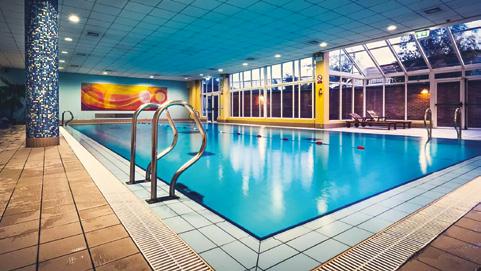
Caves, enjoy a leisurely stroll along the lake shores, or browse the boutique shops and cafés in Cavan town. Whether you're feeling adventurous or simply want to relax, there’s something for everyone.
More than just a getaway, our Young at Heart packages are about creating lasting memories in a setting that feels like home. With excellent service, delicious
Come and discover why Cavan Crystal Hotel is the preferred choice for those who are young at heart—where every moment is made to be enjoyed.
For bookings or more information: Call us on +353 (0)49 4360600 or visit www.cavancrystalhotel.com Follow us on social media @CavanCrystalHotel

Médecins Sans Frontières/ Doctors Without Borders (MSF) is an international humanitarian organisation providing medical care in more than 70 countries. From our paediatric nurses to our logisticians, we are experts at working in fast-moving and highlyinsecure environments, like Ukraine, Yemen and Gaza.
1 in 6 MSF projects is funded by gifts in wills
Gifts left to us in wills play a vital role in making sure we have the funds we need to deliver emergency medical care to wherever in the world it is needed.
By leaving a gift in your will to MSF, you can ensure that our financial independence – which enables us to provide medical aid where and when it is needed most –will continue.
A young child is carried into the MSF clinic in Rafah. In Gaza, MSF surgeons, doctors and nurses provide emergency surgeries, wound treatment, medical and maternity care in overcrowded hospitals, health facilities and clinics. We have sent hundreds of tonnes of medical supplies into Gaza, but so much more is needed. In the West Bank we provide medical care and mental health support in hospitals and through mobile clinics in response to an increase in violence and movement restrictions. Please support our work. Image: MSF
For more information or to receive an information booklet please visit msf.ie or call us on 01 660 3337

Construction work at Lakeside Memorial Park , a new cemetery on Dublin’s northside, is due for completion at the end of this year.
Located between Malahide and Portmarnock , the lands, which are larger than St . Stephen’s Green, will provide a much-needed alternative to the local traditional cemetery. The high-class memorial park will provide 3,000 traditional burial plots and 4,000 in-ground ash plots aswell as numerous interment options in the park ’s stately columbarium walls.
Speaking on behalf of Lakeside Memorial Park , Niall O'Connor, Director said “Lakeside Memorial Park will be a spectacular place where we can honour and remember our loved ones in a dignified and tranquil setting
“ We are creating what will arguably be one of the most special places for interment in Ireland Our plans include the construction of a cafe and lake, and the planting of over 1 ,500 trees resulting in Lakeside Memorial Park presenting more like a public park than a cemetery This is a public amenity, and we will encourage joggers and dog-walkers to come and enjoy the beautiful surroundings, the water features and the artwork ”
Another Director, Henry Wildgust noted that "Lakeside Memorial Park will set a new standard for interment in
Ireland and will redefine the traditional cemetery experience.”
“In addition to the landscaped surroundings, the interment ceremony will also be first in class whereby a specially designed canopy will be erected on rainy days and seating will be available for the immediate family ” said Mr. Wildgust .
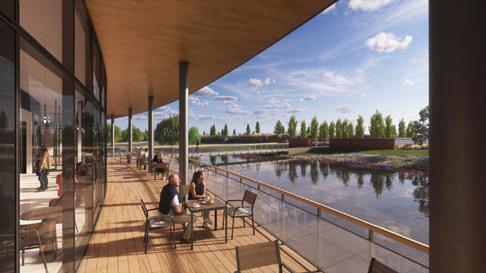
On-site café boasting a lakeside balcony
According to the owners, demand for burial plots has been very strong since their on-site information office opened
“ We have had a tremendous response from the residents in Portmarnock , Malahide and other local areas such as Sutton, Raheny and Clontarf ” according to Mr O’Connor who explained that “Lakeside Memorial Park offers a new opportunity to Dublin’s northside residents who are considering their final resting place
“In respect to other burial options, as cremations now account for about half of all interments in Ireland, there has been particular interest in our very large in-ground ash plots with costs starting at €5,000 ”
Mr Wildgust explained that families can secure their preferred plot or niche with a modest deposit , with the balance falling due when the park opens
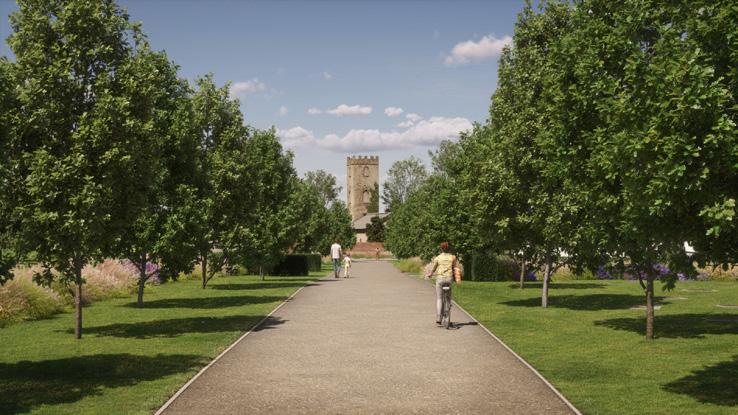
St . Marnock ’s Church (c.1788) sits adjace
“ There is now an alternative to the to t grounds and of course there is now an ability to prepurchase your plot , something which is not available in the local council-run cemeteries
"It is important to note that we are investing a portion of all sales income into a perpetuity fund, another idea we have taken from America
"Having the perpetuity fund will ensure that the park is maintained to the highest standards forever, at no cost to our clients or their families”, Mr Wildgust added

“Notwithstanding it makes emotional and financial sense to plan ahead, the advance planning appears to be providing our clients with a wonderful sense of security and peace of mind - our clients are delighted to be able to choose their final resting place at this early stage
“Choosing your final resting place is a very personal choice Some clients wish to be interred by our lake or near the river whilst others want to be beside the children’s play area Having these choices is what makes Lakeside Memorial Park so special” Mr O’Connor concluded
Responding to our questions about the costs and payment terms of the various plots at Lakeside Memorial Park , Mr. Wildgust told us that " there are a limited number of plots available at special pre-opening rates - traditional burial plots are available from €7,500 and columbarium wall niches suitable for two ash urns range between €3,500 and €8,000.
“We are privileged to have the opportunity to work on such a special project and we are very grateful to the extended local community for their interest and support to date”, Mr Wildgust concluded

George Keegan on what’s happening in travel, the arts, food and entertainment along the Western Seaboard




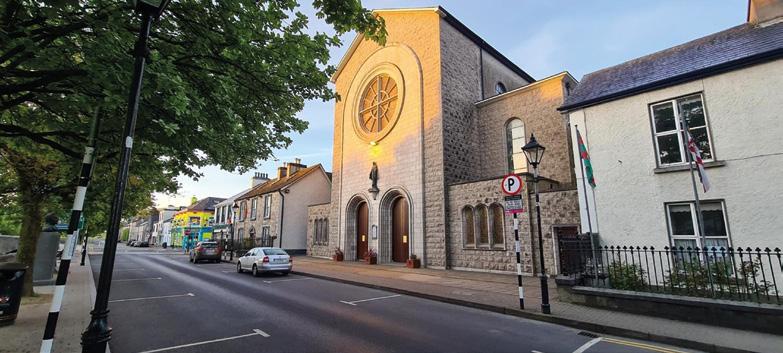

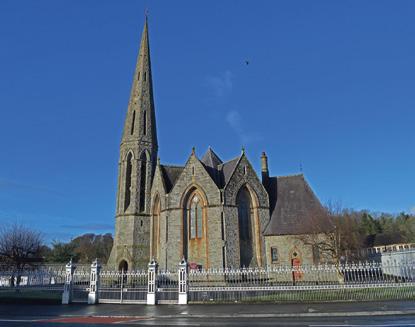
As a result of structural damage caused by the major storm in January the historic Holy Trinity Protestant Church in Westport was forced to close its doors for health and safety reasons. To their rescue came St. Mary’s the local Roman Catholic Church. Morning service is now held there each Sunday following mass and on Wednesdays a communion service also takes place here. Add to this several concerts which have been hosted by St. Mary’s to raise badly needed funds for the Protestant church. It sums up the excellent relationship which exists between both communities. Yet another example was the recent invitation extended to Rev Suzanne Cousins rector of Holy Trinity allowing a time space to hold a short service with her parishioners on top of Croagh Patrick during Reek Sunday if she wished to do so.
Speaking to Senior Times Father John Kenny, ADM of St’ Marys told me the healthy ecumenical relationship between both churches in Westport is long standing and thriving “In recent times since storm Ēowyn, we share St. Mary’s church on the towns South Mall for worship. This replicates the support that Holy Trinity gave our congregation in 2004/5 when major renovation work was carried out to the floor of our church. Our mutual respect and support continues to foster ecumenical and spiritual bonds between both communities. As the ‘Golden Rule’ instructs us – do unto others as you would have them do to you”.
On behalf of the Protestant community Rev. Cousins said they are most grateful to St. Mary’s for their expressions of ecumenical friendship and solidarity in accommodating us in this way and allowing us to avail of their consecrated space “
Reek Day on Croagh Patrick celebrates another 25th anniversary
This pilgrimage to climb Croagh Patrick was first recorded in 1113, when 30 pilgrims lost their lives due to a violent thunderstorm. It takes place annually on the last Sunday of July. Thousands climb during that day to the top of what is considered
to be Ireland’s holiest mountain where an oratory has stood since 1905. At the time 12 local people were employed for 6 months during the construction. The first wedding ceremony to take place in the church was two years later in 1907. This year is a Jubilee year, traditionally celebrated every 25 years and the theme for 2025 is ‘Pilgrims of Hope’.
The surface of the original path up the steep mountain to the summit had become quite dangerous, so last year a new pathway was established with steps. It was officially opened by former Minister Heather Humphreys TD.
According to Fr. John there have been several wedding and christening services on the mountain top over the years. One lovely story concerns a couple originally from Venezuela who while attending college in Miami came to Ireland on a holiday in 2016 and climbed the Reek. When they reached the summit they were surprised to discover the small oratory. Seven years later their son was baptized there followed a couple of years later by
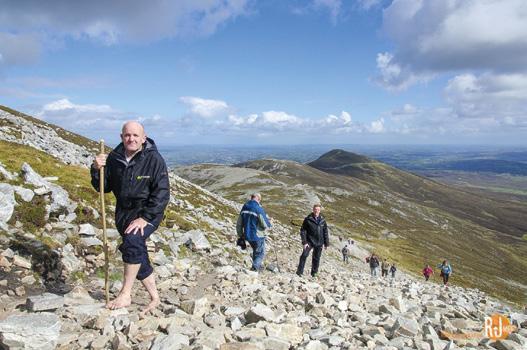

White Strand Beach, Miltown Malbay, Co Clare, one of six Blue Flag Beaches in the county
With the summer season now in full swing it’s an opportunity to take a look at two different kinds of attractions for visitors along the Wild Atlantic Way, in particular County Clare.
This summer there are 89 Blue Flag beaches throughout the country, a new record. Of these six can be enjoyed along the Clare coast and three more inland. Most are beside seaside towns so children and adults can avail of many outside activities during their family holiday. The list of beaches in alphabetical order is as follows:
Fanore: A large beach with a maze of sand dunes, just off the coastal route from the picturesque village of Ballyvaughan. There is a caravan and camping site just beside it.
Kilkee: This is a horseshoe shaped beach. Close by is George’s Head which is an ideal spot to look out across Bishops Island and the Loop Head peninsula.
Lahinch: One of the most popular seaside towns along the Wild Atlantic Way situated in Liscannor Bay. Not far away are the Cliffs of Moher and other local attractions.
Spanish Point: This beach is one of the Discovery Points on the Wild Atlantic Way and is popular for swimming and surfing.
White Strand Miltown Malbay: Smallish sandy beach beside a market town with a great musical heritage. Has toilets and outside showers.
White Strand Doonbeg: Noted for its white sand and is close to the village.
For those who prefer to be inland try one of the following locations: Ballycuggeran, Cappa or perhaps Mountshannon in East Clare.
While other family members are soaking up the sun (hopefully) on a sandy beach, some might prefer to take in a round of golf and if staying close to a links course it’s a perfect opportunity.
Kilkee Golf Club: has an 18 hole coastal course with superb views. The third tee for example overlooks Chimney Bay and has a hilltop view. Equipment and buggies are available to hire.
Lahinch Golf Club- Castle Course: This is situated opposite the Old Course and presents its very own brand of toughness by way of bunkers and water hazards all set to trap you. It has a golf academy plus indoor performance centre and a golf Pro on hand if required.
Lahinch Golf Course – Old Course: A Par 72 , 18 hole course said to be ‘The St. Andrews of Ireland’. Enjoy your round while looking out over the Atlantic Ocean.
Spanish Point Golf Club: First opened back in 1896 it is therefore one of the country’s oldest courses. The length is 4,700 meters and has natural drainage so is rarely closed. It overlooks Spanish Point beach. This club also has tuition, equipment for hire, golf shop and a bar serving light snacks and drinks. There is another Par 72, 6,425 length links course situated at Doonbeg, a beautiful coastal village between Kilkee and Milltown Malbay.
However, if an inland course is your preference, then check out one of the following:
Dromoland at Newmarket on Fergus: An 18 hole parkland course on the Dromoland Castle Hotel Estate.
East Clare Golf Club Bodyke: Another parkland course set on 150 acres of quiet countryside.
Ennis Golf Club: On the outskirts of the County town has treelined fairways and tight greens making it quite a challenge. There is a restaurant and bar.
Woodstock Golf Club: A second club in Ennis which nestles in beautiful rolling countryside beside the hotel of the same name, and is open all year Has tuition, equipment for hire and shop all on site. Open year round. For food and beverages just drop into the hotel.
Kilrush Traditional Music & Set Dancing Festival (31st July – 4th Aug). Feakle Festival of Traditional Music (6th Aug- 11th Aug).
Scariff Harbour Festival (31st July- 3rd Aug).
Resonance Lough Derg Eclectic Festival (3rd & 4th September)
Useful websites
www.mayo-ireland.ie
www.destinationwestport.com www.visitclare.ie
www.discoverireland.ie www.thewildatlanticway.com
A spectacular links challenge: Kilkee Golf Course



WelcoMe is an inclusive customer service platform Currys, Ireland’s leading electronics retailer, is proud to announce a new partnership with inclusive customer service platform WelcoMe, aimed at transforming the in-store experience for customers with additional needs.
The innovative service allows customers to pre-book tailored store visits by creating a profile on the WelcoMe platform, where they can share their specific requirements - such as sensory needs, communication preferences, or mobility considerations.
Currys colleagues are then notified of the visit and receive bespoke guidance and short training videos on how best to support the individual. Customers can also use the platform to specify which items they are interested in purchasing, allowing staff time to research any inclusive features as well as identify any available alternatives prior to their arrival.
The tool also gives retail partners access to useful pointers and best practice techniques to help accommodate anybody, specific to certain needs, i.e. best practice on how to greet a guide dog owner etc. These are provided by leading charities and designed to heighten disability awareness in general.
Following a successful pilot in UK stores in London and Birmingham, Currys has launched the initiative in their Irish stores.
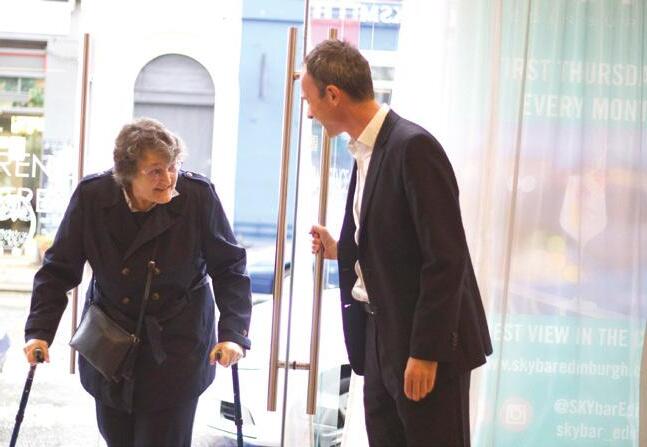


“Everyone deserves a comfortable and supportive shopping experience,” said Jaimie Cantwell, Head of Brand & Marketing at Currys Ireland. “This partnership with WelcoMe is part of our ongoing commitment to accessibility and inclusion for all customers.”
As WelcoMe founder, Gavin Neate explains, “Currys is an ideal partner to encourage the engagement of people with additional needs. The staff we have worked with so far could not have been more excited to test out our platform and their excitement around its potential to support customers and staff alike has been truly inspiring.”
The project also builds on Currys' one-year-old ‘Quiet Hour’, whereby stores reduce noise, keep lights low, and make sure there are no flashing screens in store, every Monday to Friday until 11am.
WelcoMe has previously been used in cultural institutions and public attractions. Currys marks one of the first major retail rollouts, helping to lead the way in inclusive retail experiences.
Head to https://www.currys.ie/ welcome-at-currys.html to book your slot

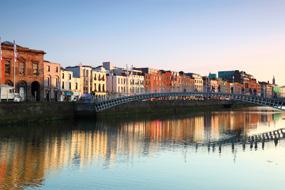
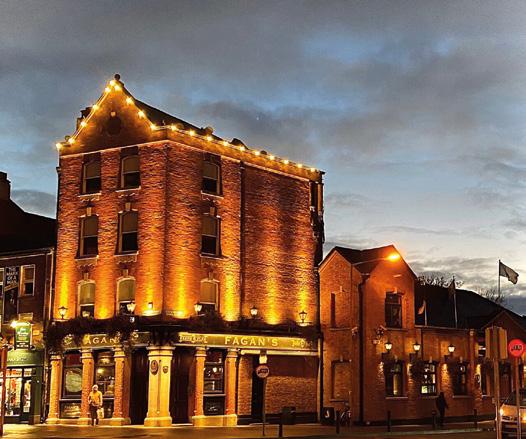

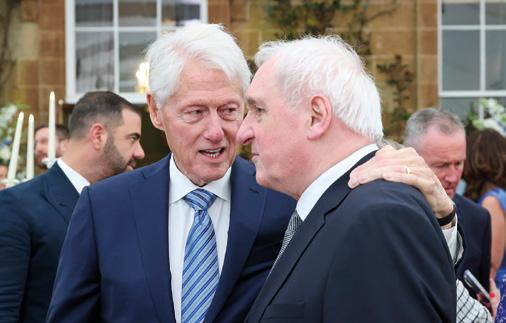
Fagans pub Drumcondra where Bertie Ahern famously took Bill Clinton for a drink
Recently reading Shane Coleman's Irish Independent article following the years of the The Mahon Tribunal investigations, the fall of Bertie Ahern and all the shenanigans revolving round what Coleman called the Drumcondra Mafia, I reflected on my own good times in Fagans Pub, not realising at the time, I was drinking in their headquarters.
It strangely jogged my memory back to a press trip to Turkey in 2015. Organised by Go Turkey it was a lavish affair with journalists from all over Europe and beyond. At a major dinner event in Antalya, where a mediocre local red wine and a rewarding search for something more palatable established a lasting connection with a Norwegian couple at our table. Shortly afterwords they arrived on a short visit to Dublin and for convenience to the airport they booked into what was then the Regency Hotel. It had been The Crofton Airport Hotel and would later change name for a third time. This was brought about by a rather dramatic public gangland shootout, all filmed and photographed live by attending news media. At least four gunmen were involved, rushing in, shooting one dead and injuring several others; all played out at the public weigh-in for the 2016 WBO lightweight boxing match between Jamie Kavanagh and Antonio João Bento. Eighteen months later the owners felt it necessary to rebrand. Apologies for this asidehowever diverting. After meeting my Norwegian friends at the Regency we walked the short distance to Fagans Pub at 146 Drumcondra Rd Lower for them to experience one of great old Victorian pubs of Dublin. Fagans has been around since Mr Fagan got his first license in 1907.
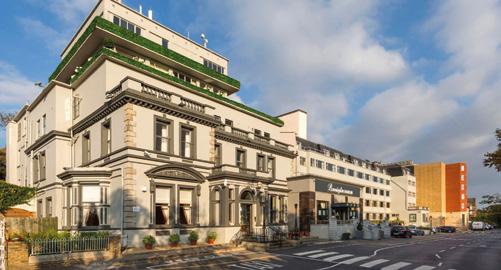
They were initially impressed by the prominently positioned photo of Taoiseach Bertie Ahern welcoming US President Bill Clinton to the pub. The walls are covered with famed photographs and all sorts of framed memorabilia. James Joyce, of course, but he did live nearby in 1894 as child with his parents closeby at Millbourne Avenue.
Fagan’s is probably best known for sports. It's close to both Croke Park and Tolka Park, so it's regularly frequented by the Dubs, Shelbourne, Drumcondra, their supporters and opponents. The walls bear witness, photographs, pennants, match programmes and framed news reports, 'Bertie Ahern and the Drumcondra Mafia' was written in 2010 by Shane Coleman and Michael Clifford and is still available in some shops and libraries and a Kindle edition online My Travel article on Turkey appeared in Senior Times, July-August 2015 www.seniortimes.ie























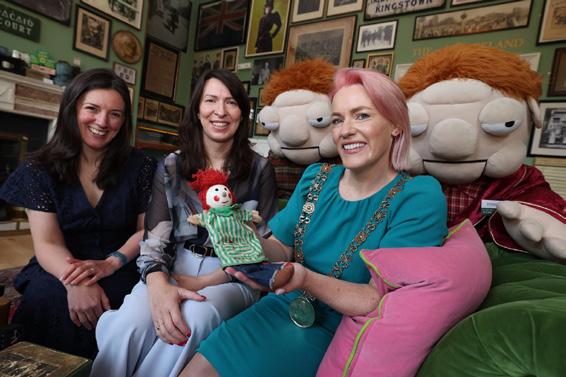
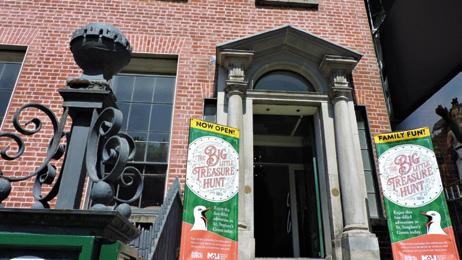
At the re- opening of The Little Museum of Dublin, from left Sarah Clancy, CEO Little Museum of Dublin, Mary Stack of Fáilte Ireland, Emma Blain, Lord Mayor and First Citizen of Dublin)
The Little Museum of Dublin has returned to St. Stephen’s Green, officially reopened on June 4 by Lord Mayor of Dublin Emma Blain, after a stunning €4.3 million transformation over the historic townhouse’s four floors and is now open to the public. Visitors can look forward to enjoying an expanded and reimagined exhibition space, a new reception area, a new youth education space, an integrated lift to improve accessibility, a sun-trap patio and an enriched collection of artefacts donated by the people of Ireland. Mayor Emma said, “I am delighted to see the Little Museum of Dublin on St. Stephens Green reopen its doors after two years. It is such a great addition to the city centre bringing Dublin to life in a very real way”.
On Bloomsday as usual we celebrated the day in the city and at some point, as always, dropped into Kehoe’s on South Anne Street for a few pints.
The reimagining of the Little Museum of Dublin was partfunded by Fáilte Ireland, along with the Department of Tourism, Culture, Arts, Gaeltacht, Sport and Media, Dublin City Council, and generous corporate and individual funders. The museum worked with distinguished conservation architects Deaton Lysaght to realise this ambitious project, which not only enhanced the building’s fabric but also created a new youth education space, upgraded exhibitions, and improved interpretation throughout.
Sean Fogarty of Deaton Lysaght architects, who was commissioned to reimagine and repurpose this Georgian space, said, “Over the past two years I cycled on a weekly basis past the Royal College of Surgeons to the site. At some point the term open heart surgery began to seem apt for the task at hand. You assume a window is sound – until your pen gently touches it and the frame dissolves into dust”. Sean continues “As you move through Number 15 some of its most powerful moments are unmediated by architects. The glorious light flooding in the first floor front room is not a design flourish – it is nature and good planning, refracted through enormous well-made sash windows. This building was already loved and well maintained but not entirely open to everyone. Making it accessible without damaging what made it wonderful became the central task, and in that the building itself became our guide”.
Mary Stack, Head of Product Development – Attractions at Fáilte Ireland said “Enhancing attractions like the Little Museum of Dublin not only deepens the cultural experience for visitors but also delivers tangible economic benefits for the city. With projected visitor numbers expected to rise to over 215,000 annually by 2035, this redevelopment is set to generate an economic impact of €24.7 million over the next decade. Fáilte Ireland is proud to have supported this transformative project, which ensures the museum remains a flagship destination in the capital and one that continues to inspire, educate, and contribute meaningfully to Dublin’s tourism economy”.
Recently reading Shane Coleman's Irish Independent article following the years of the The Mahon Tribunal investigations, the fall of Bertie Ahern and all the shenanigans revolving round what Coleman called the Drumcondra Mafia, I reflected on my own good times in Fagans Pub, not realising at the time, I was drinking in their headquarters.
It strangely jogged my memory back toa press trip to Turkey in 2015. Organised by Go Turkey it was a lavish a^air with journalists from all over Europe and beyond. At a major dinner event in Antalya, where a mediocre local red wine and a rewarding search for something more palatable
Since 2011 the Little Museum of Dublin has welcomed over one million visitors. Ranked number twelve among Europe’s top twenty-five attractions on TripAdvisor, the museum has earned a reputation for immersive storytelling, theatrical flair, and warm Irish hospitality. Despite operating from a temporary home at 33 Pembroke Street for nearly a year, the museum retained its crown as the number one “Thing to Do” in Dublin on TripAdvisor, a testament to the extraordinary response from guests who enjoyed the museum’s guided tour experience.
Sarah Clancy, CEO of the Little Museum of Dublin: “Thanks to the generosity of the Irish people, the support of the state and the talent of our team, we have managed to reimagine the Little Museum of Dublin for generations to come. We are so proud to be reopening our doors and welcoming guests back into our newly renovated and accessible museum at 15 St. Stephen’s Green. There are some incredible artefacts on display from the first ever medal awarded to William Deans under the states Bravery Act 1947, to Mary McAleese’s First Holy Communion Rosary beads donated by the President herself”.
The museum is open seven days a week from 9:30am to 5pm, offering guided tours every forty minutes. In addition, a new daily walking tour, The Little Walking Tour of St. Stephen’s Green, will take place each afternoon at 2:15pm. Visit their website at www.littlemuseum.ie.


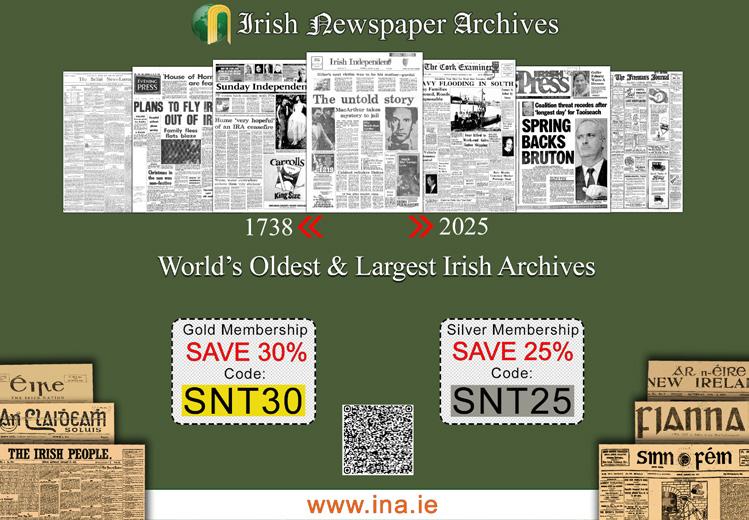

On Bloomsday as usual we celebrated the day in the city and at some point, as always, dropped into Kehoe’s on South Anne Street for a few pints. We have always noticed how professional and friendly the barmen are here, an empty glass is always soon replenished, even on a day like this with people overflowing on to the streets.
While out there looking along adjacent Duke Lane which would lead us back to the corner with Duke Street there is a brand new bar 'The Burton' with a very large portrait of James Joyce on the window. Its closed but looks very open - maybe a 'Dublinism', for it was not yet open and yet those inside were drinking free red and white wines all courtesy of a very Yes they will open soon. Seems there is some delay with their licence application.
And yes there is reference to it in Joyce’s Ulysses, Leopold Bloom visits the original Burton hotel and restaurant, but didn't get his gorgonzola sandwich. He went round to Davy Byrne's. Enthusiasts should take note of the 'Calypso’ episode when "Mr. Leopold Bloom ate with relish the inner organs of beasts and fowls."
But in the middle of preparing breakfast Bloom decides to go to a butcher and get mutton kidney. As we go to press they have

By Adam O’Rourke QFA, Ulysses Financial Services LTD
If you've worked hard to build a legacy — whether that's a home, a nest egg, or investment assets — it's natural to want to pass that wealth on wisely. But doing so without proper planning can result in delays, family disputes, or significant tax bills. That’s where trusts come in: a powerful, flexible tool to help you pass on your wealth in a controlled and taxefficient way.
What is a Trust?
A trust is a legal structure that allows one person (the "settlor") to transfer assets to another (the "trustee") to manage on behalf of one or more "beneficiaries." You can use a trust to manage money or assets during your lifetime or after your death — ensuring they are used exactly as you intend. Unlike a will, a trust can offer privacy, control, tax benefits, and help avoid probate delays.
Why Use a Trust in Inheritance Planning?
• Control: You decide how, when, and to whom your assets are passed.
• Tax Efficiency: With proper planning, trusts can reduce Capital Acquisitions Tax (CAT) liabilities and avoid unintended tax consequences.
• Asset Protection: Keep family wealth protected from divorce, bankruptcy, or mismanagement.
• Legacy Building: Trusts can support children, grandchildren, or vulnerable dependents over time.
Two Powerful Tools: Discretionary Trusts and Bare Trusts
Two of the most common structures used in inheritance and savings planning in Ireland include:
• Discretionary Trusts: These offer flexibility for trustees to decide when and how assets are distributed, especially useful in more complex or blended family situations.
• Bare Trusts: Commonly used for children’s savings plans, where the beneficiary is entitled to the assets at age 18 or 21. Ideal for structured gifting over time.
Client Example: Property and Control
One couple, nearing retirement, had a holiday property in Kerry and three adult children. Rather than gifting the property outright, they placed it into a discretionary trust, allowing them to retain control while reducing inheritance tax exposure. The property could be rented for income, with the trustees managing it until a later transfer to the children under more favourable circumstances.
Tax-Efficient Savings for Children and Grandchildren Trusts can also be an excellent way to gift and save for younger family members, using well-established exemptions and thresholds under Irish tax law.
1. Using the Small Gift Exemption
Through a Children’s Savings Investment Trust (Savings Plan with Bare Trust), parents or grandparents can gift up to €3,000 per child per year — or €6,000 from two donors — completely tax-free. Importantly, any growth on the funds does not count as an additional gift, making it a smart way to accumulate wealth for a child or grandchild without eroding their tax-free thresholds.
2. Lifetime CAT Planning – Using the Group B Threshold
You can also make larger gifts using a Children’s Investment Trust (Investment Bond in a Bare Trust) while staying within the Group B CAT threshold of €40,000 per beneficiary. This allows for efficient long-term gifting while managing exposure to future inheritance tax.
Client Example: Grandchildren’s Trusts in Action

Jim and Mary wanted to gift €40,000 each to their grandchildren, Stephen (10) and Emma (8). Their broker recommended the Aviva Children’s Investment Trust — an Investment Bond held in a Bare Trust.
• Since neither grandchild had previously received gifts from Jim or Mary, the full €40,000 per child was tax-free under the Group B CAT threshold.
• Over time, the policies grew:
Stephen’s investment reached €75,000 by age 18 — the €35,000 growth was not subject to CAT.
Emma’s policy grew to €83,000 — again, the €43,000 gain incurred no CAT.
• Exit tax applied as normal on the investment growth, but there was no Capital Acquisitions Tax on the original gift or the gain.
If you plan to gift an asset like a property or large investment in the future, the recipient may face a substantial CAT liability. Using a Section 73-approved savings plan, you can set aside money to pay that tax — and it won’t count as an additional gift.
Worked Example: Planning Ahead for a Property Gift
Mary plans to gift her son Kieran a property worth €750,000 in 8 years. Based on current tax rules, his CAT liability would be €115,500
Instead of waiting until the gift is made:
• Mary saves €1,203/month into a Section 73-compliant savings plan
• After 8 years, the fund grows to €115,500, and Kieran uses this to pay the tax.
• Because the policy qualifies under Section 73, this money is exempt from CAT and does not count as a further gift.
Had Mary simply saved the same amount in a bank account and gifted it directly, it would have added to Kieran’s tax liability
Trusts vs. Wills: A Quick Comparison
Feature Will Trust
Probate Required? Yes No
Controls distribution after death? Yes Yes
Provides control during lifetime? No Yes (with lifetime trusts)
Offers tax planning benefits? Limited Yes
Suitable for minor children? No Yes (via bare trusts)
Final Thoughts: Don’t Leave It to Chance
Whether it’s gifting money to grandchildren, managing future inheritance tax bills, or protecting assets like property, trusts and structured savings strategies offer control, flexibility, and significant tax benefits. By planning early, you can ensure your legacy is protected — and received — in the most tax-efficient and thoughtful way.
Let’s Talk About Your Family’s Future
At Ulysses Financial, we specialise in helping individuals and families plan their estates and protect wealth through personalised trust and tax strategies. Whether you're passing on €20,000 or €2 million, we’ll help you do it wisely.
• 01 564 5844/ 087 474 1176
• adam.orourke@ulyssesfinancial.ie
• www.ulyssesfinancial.ie



It’s lovely when a new publication finds its way to my desk. Recently, I’ve enjoyed many such riches. Take Six, for example, a Dedalus press anthology (six women writers) is well worth a read as is Menagerie (Arlen House) by Nuala O’Connor. Another Arlen publication I can recommend also comes from the world of poetry, Washing Windows V, a collection any reader of contemporary poetry ought to include in their libraries. I’m happy to be included. Among this abundance of treasure, the arrival of That Beats Banagher! A Humorous Expression of Amazement ranks high. Heritage advocates and authors Kieran Keenaghan and James Scully are both passionate about local history. But of course, tracing the source of what’s now considered a globally acknowledged phrase, proved truly a labour of love. Such a lively tapestry is woven through with academic diligence and literary panaché.
Without doubt, this is a sumptuous publication, a feast for the senses. Colour images throughout aid in progressing background information in no small measure. There’s also a set of wonderful endpapers showing a lithograph of the opening of Banagher bridge, 12th August, 1843. The cover image drew me in at once. Humours of an Election: Canvassing for Votes, a reproduction of William Hogarth’s oil painting sets the tone very nicely. As well as political drama, what’s on offer here is a treat for the committed dilettante. Between these pages, a reader will discover: historical backdrop, literary references, cartographic illustrations and humorous anecdotal material, together with excerpts from original sources (a painstaking, necessary achievement). For a publication of this nature to earn
By Eileen Casey
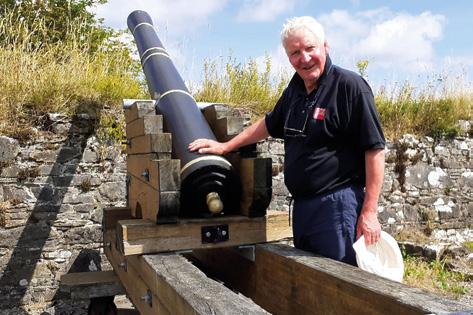
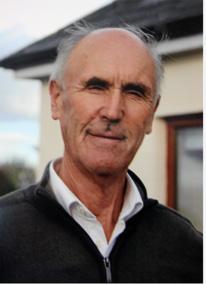
praise, veracity is hugely important. Both authors have been faithful to authenticity at every turn. And of course, in true Jonathan Swift fashion, the satirical mirror is ever reflecting the many foibles of our human nature (mostly to comic effect).
2
3
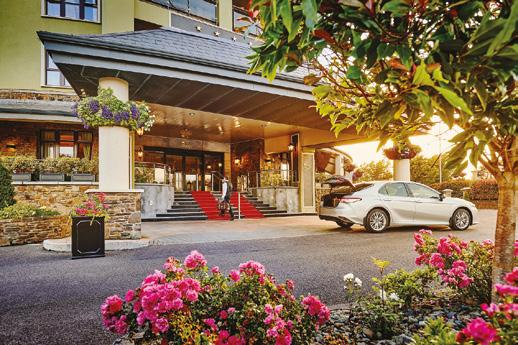
NEW FROM THE IRISH MANUSCRIPTS COMMISSION
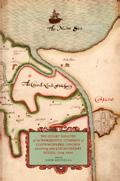
The court minutes of the Worshipful Company of Clothworkers, London, concerning their Londonderry estate,1609–1676
edited by David Heffernan
Londonderry from London, the methods they employed and the tensions which their involvement in the scheme produced. This edition presents an extensive volume of records showing how one of the twelve great livery companies of London, the Worshipful Company of Clothworkers, addressed themselves both to the shared plantation initiative and to their own estate, in the north-east of the county.
The wealthy and powerful City of London, as represented through its oldestablished Livery Companies, was a central, if reluctant, participant in the transformative Plantation of Ulster under the early Stuarts. As well as collectively developing two urban centres at Londonderry and Coleraine, the Companies were drawn into direct management of substantial landed estates. That the regime of Charles I expended much effort, and political capital, in a process which led to the confiscation of the City’s holdings contributed to the wider dissatisfaction building in London by the early 1640s. Yet only limited attention has been given to how the livery companies managed their estates in 978-1-911737-01-8 | €30| 2025
These minutes shed light on the scale of the Company’s reticence in terms of taking part in the plantation, the constant exchanges with the mayor and council of London in relation to financial assessments and the Clothworkers’ refusal to pay them — the ‘unsavoury, harsh and distasteful’ business as they called it. In addition much information is provided on the appointment of ‘farmers’ to manage the estates on behalf of the company, and carries the story forward into the years after the restoration of the Company’s title, into the 1660s and 1670s
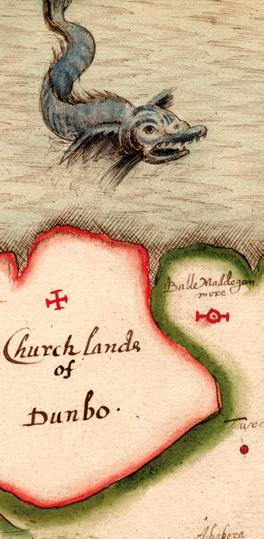
In the introduction, an excerpt from The Illustrated London News, November, 1845 is reproduced wherein the phrase ‘banged Banagher’ is useful in describing the opening of Parliament and Lord Mayor’s show. ‘Banged’ was also interchangeable with ‘Bates’. Arriving at this date (1845) as an opening demonstrates how the phrase first of all has been interchangeable but that, first and foremost, it appears in a widely read outlet to describe a ‘ceremonial event in the heart of the British Empire.’ The provincial therefore had become more universal. The authors date primary usage back as far as 1787, due largely to the fact that Banagher borough, County Offaly, (established 1629) was entitled to elect two members of the Irish Parliament. However, it wasn’t long before it became clear that being a member of Parliament had a certain caché. It gave rise to power, wealth and status. Borough control sparked the practice of selling or bequeathing. For instance, In 1787, The Ponsonby family controlled the Newtownards borough, swapping it (for geographic convenience) for the Banagher borough (then owned by James Alexander who’d purchased it from the previous owner Peter Holmes). ‘Being sold and swapped set Banagher apart and subsequently, gave rise to ‘That Beats Banagher.’ But apart from that audacious ability (to sell/swop/bequeath), another factor helped its spread. Two years earlier, in 1785, Francis Grose’s A Classical Dictionary of the Vulgar Tongue’ was published to widespread acclaim. It became a best seller. Grose used the term ‘He beats Banaghan, ‘describing it as being associated with someone remarkable or who tells exaggerated tales.’

Following on from the Offaly borough controversy, ‘Banaghan’ soon evolved to ‘Banagher’. So that, in a nutshell, explains the origin and circulation of the phrase. Naturally, there is a much broader political arena which the authors explore in very satisfying ways. They go as far as to say that Banagher should be twinned perhaps with Newtownards as they explore the link between The Ponsonby family of Newtownards (1700 – 1787) who then swapped it for the borough of Banagher. There’s even a photograph of Olympic Gymnast Champion Rhys McClenaghan to underscore this point. A quirky contemporary aside.
One of my own personal favourites in this publication is its attention to detail, i.e. the borough lexicon just one example. In 1775 both Banagher and Newtownards became ‘pocket boroughs’. This meant that the nomination of the member of parliament was not the result of a democratic election but was in the hands of a single person known as the patron. A rotten borough, on the other hand, was one where few if any inhabitants existed. Bannon in County Wexford was a mountain of sea-sand without a single inhabited house. At Harristown in County Kildare, there were none. A potwalloper borough was one in which the ‘franchise was extended to the male head of any household with a hearth large enough to boil a cauldron! There were twelve potwalloper boroughs in Ireland.’ There existed too, an individual called ‘a borough monger’. This person sold or bought seats. Parliamentary membership therefore, was very much a commercial transaction.
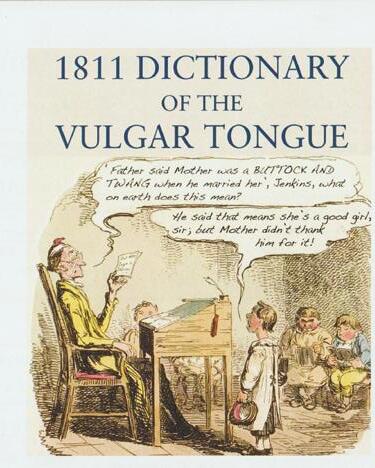
It’s worth mentioning that James Alexander (who purchased the borough of Banagher in 1787, swapping it soon after with John Ponsonby’s borough in Newtownards) went to Bengal in India as a young man in 1752 (aged 22). Returning twenty years later, he’d accumulated a vast fortune. He became known as Ireland’s greatest Nabob. This ‘title’ became immensely popular within
Grose’s A Classical Dictionary of the
was published to widespread acclaim
satirical culture. His wealth then has been estimated in todays values as over £100million. It was no stretch for Alexander to buy the Banagher borough from the then owner Peter Holmes for the measly sum (by his standards) of £10,500.
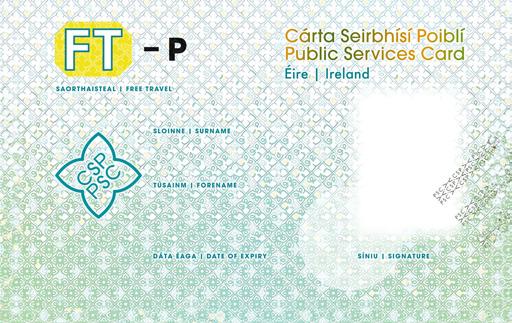


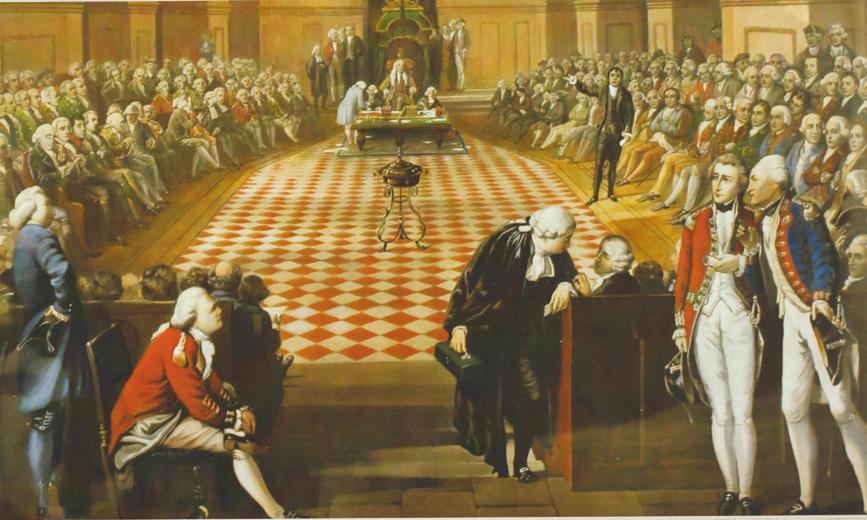
That Beats Banagher gives a colourful comprehensive history of the borough, its many changes of fortune, the inevitable corruptions encountered along the way. Always informative, amusing and thoroughly engaging, I might go as far as to say that all these political manoeuvers are as entertaining as soap opera. As well as the main profiling artery where various political scenarios unfold, there are delightful character portraits to savour. Headline principals such as Francis Grose, whose A Classical Dictionary of the Vulgar Tongue (1785) is a compilation of ‘daring and colloquial expressions,’ is a man apart. He brought to the population, phrases and terms which were not found in dictionaries of the times. The entry for ‘He beats Banaghan; deems it ‘an Irish saying of one who tells wonderful stories. Perhaps Banaghan was a minstrel famous for dealing in the marvellous.’ In life, Grose was described as ‘convivial’. He had a love of lively social settings. Grose collected his phrases directly from the people in London’s East End. While he ate and drank he listened to the vernacular of the streets. Funnily enough, our own Maeve Binchy comes to mind. Having attended a workshop she gave in the distant past, I’ll always remember her advice; ‘Use your eye as a camera, your ear as a tape-recorder.’ Grose was of the same mind. His dictionary teems with colourful phrases still in use today. ‘To kick the bucket’ (to die), ‘hush money’ (bribes to conceal a crime) or ‘to screw’ (to copulate). His dictionary also included that wonderful phrase ‘To bamboozle’: to make a fool of anyone, to humbug or impose on him. Grose died on 12th May, 1791 after a night out in Dublin with an Irish friend, John Philpot Curran, later to become MP for Banagher. Curran may have brought ‘He beats Banaghan’ to Gorse’s attention. Grose is buried in Drumcondra graveyard alongside another Irish friend, James Gandon, the renowned architect.
That this expression of amazement/admiration spread around the world is evidenced by a series of recorded mentions as far afield as The Bombay Gazette, 1823. In 1824 it appears in Nouveau Dictionnaire Geographique, using both Banaghan
and Banagher. The first extended appearance of the phrase in print that has been found to date is in The Dublin Evening Post, September 1821..’that the king came to Ireland for the purpose of disuniting it from England – of cutting the painter, as Walter Cox said in language more figurative and striking. This positively beats Banagher.’ One of the finest orators ever stood on Irish soil, and largely responsible in securing Catholic Emancipation in 1829, Daniel O’Connell, hailed as ‘The Liberator’ used the ‘That Bangs Banagher’ version. O’Connell was very much associated with the expression, to such an extent that newspaper reporters used the preamble ‘as O’Connell would say,’ to introduce the phrase into their reportage. By co-incidence, O’Connell spoke to a crowd of 15,000 at a meeting in Banagher in October 1842 so he was familiar with the geography of the phrase. Between the years 1830 and 1849 ‘Bangs Banagher’ was the most popular
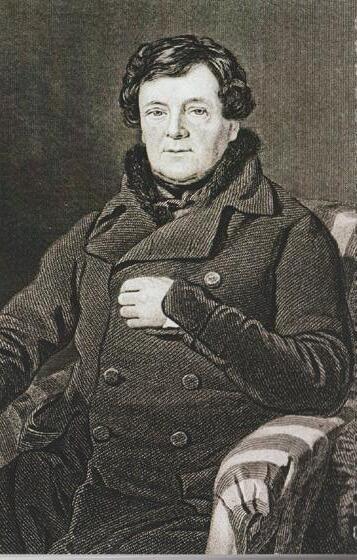







Celebrated authors were quite fond of the phrase too. This section of the publication is exceptional in its research and of particular interest to this reader.
An early usage is from William Carleton’s The Lough Dearg Pilgrim: Sketches of Irish Manners where the following snippet occurs: ‘Well anyhow, that bates Banagher; after that I’m aisy, that is, if everything comes out that way yer honour…not doubtin
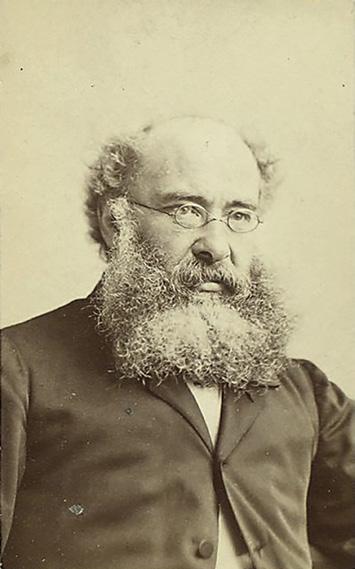
Christ,’ said Jock, that’s the best yet.’ ‘It’s good ‘nt it?’ said Joe. ‘It beats cock-fighting,’ said I, ‘and that beats Banagher and Banagher beats the divil.’ The list of writers goes on. Edna O’Brien, William Trevor and John B. Keane are just a few among a plethora.
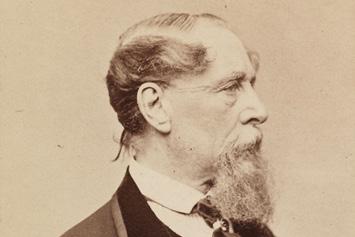
Mick Feeney, writing in The Evening Herald, had a column during the 70s under the sub-heading That Beats Banagher. These pieces were generally of a humorous nature, much appreciated by its readership. And indeed, as befits the phrase, laughter often resulted from it. Again, the authors have been painstaking in their research.
Quotes from Tralee Mercury, August 1835, Aberdeen Press and Journal, February 1927, Dundalk Democrat, June 1880, Nenagh Guardian, October, 1866 are just a sample example. The Dundee Courier, February, 1865 award full honours in its mention…’it bates Banagher and Banagher bates the devil. Running through this publication is the connective tissue of Banagher history, nicely aligned with the phrase. Under the heading BANAGHER BANGED, The Satirist, on the 9th September, 1838, reported on the new distillery at Banagher; ‘Our excellent grandmother, who has a dreadful aversion to anything Irish, especially Irish whiskey, has now discovered that the degeneration of Ireland is entirely owing to its distilleries. We believe that no place can ‘bang Banagher’ after the ‘banging’ Banagher has received at the old lady’s hands. Another distillery is about to be erected in that town.’
And who can forget the Barry’s tea, Christmas radio advertisement, running since 1994?
‘I ran down. I could barely speak. Mam and Dad were sitting there, the teapot covered in that knitted cosy and the smell of hot, milky tea and rashers. ‘Dad! Mam! Dad! You’ll never guess what Santa brought!’ A train set no less! Well!...doesn’t that bate Banagher!’ says my father. ‘Isn’t Santa the smart fellow!.
That Beats Banagher! A Humorous Expression of Amazement is a scintillating read on all counts. Easy to dip into, providing illuminating sections, it provokes more than the odd chuckle or two. It’s a publication, not just for Banager folk (although Banagher folk will especially appreciate it); but for purveyors of the sublime and the downright flamboyant. I cannot recommend it highly enough.
That Beats Banagher! A Humorous Expression of Amazement is supported by Creative Ireland, Offaly History and Offaly County Council’s Heritage Office/
The publication is available to purchase (€20 plus p.&p.) from Offaly History (057)9321421, Bury Quay, Tullamore, County Offaly.
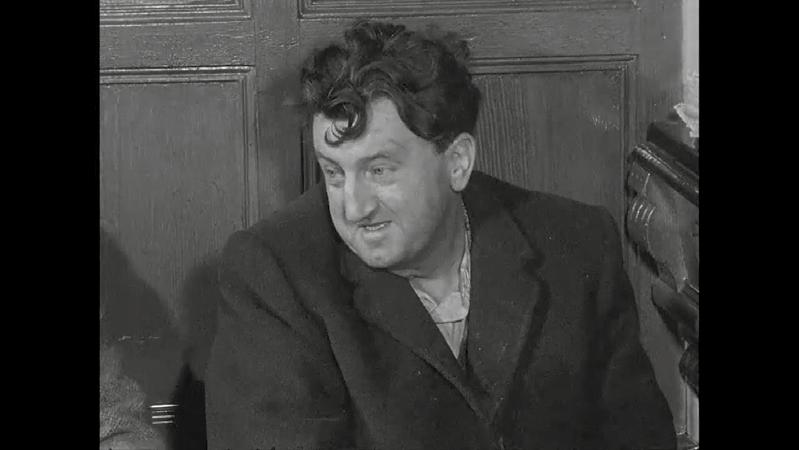
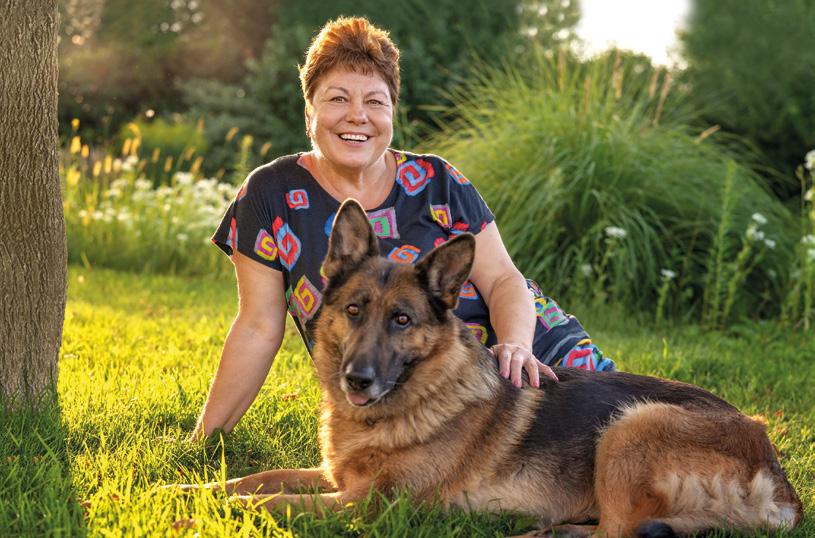




“What I love about dogs is that their love is unconditional. So I want my love to live forever, with a gift in my Will.
“What I love about dogs is that their love is unconditional. So I want my love to live forever, with a gift in my Will.
“What I love about dogs is that their love is unconditional. So I want my love to live forever, with a gift in my Will.
“What I love about dogs is that their love is unconditional. So I want my love to live forever, with a gift in my Will.
When we were making our Wills, it was an easy decision to leave a gift to Dogs Trust.
When we were making our Wills, it was an easy decision to leave a gift to Dogs Trust.
When we were making our Wills, it was an easy decision to leave a gift to Dogs Trust.
When we were making our Wills, it was an easy decision to leave a gift to Dogs Trust.
Now it feels really good, to know that when I’m gone I can still help dogs.”
Now it feels really good, to know that when I’m gone I can still help dogs.”
Now it feels really good, to know that when I’m gone I can still help dogs.”
Now it feels really good, to know that when I’m gone I can still help dogs.”
Ruth, Dogs Trust Ireland Supporter
Ruth, Dogs Trust Ireland Supporter
Ruth, Dogs Trust Ireland Supporter
“What I love about dogs is that their love
Gifts in Wills help Dogs Trust be there for abandoned and surrendered dogs, through this dog crisis, and long into the future.
Gifts in Wills help Dogs Trust be there for abandoned and surrendered dogs, through this dog crisis, and long into the future.
Gifts in Wills help Dogs Trust be there for abandoned and surrendered dogs, through this dog crisis, and long into the future.
Gifts in Wills help Dogs Trust be there for this dog crisis, and long into the future.
Will you leave a gift in your Will today?
Will you leave a gift in your Will today?
Will you leave a gift in your Will today?
Will you leave a gift in your Will today?
To find out more or to have a conversation about leaving a gift in your Will, call Katie on 01 879 1845 or visit DogsTrust.ie/Legacy
To find out more or to have a conversation about leaving a gift in your Will, call Katie on 01 879 1845 or visit DogsTrust.ie/Legacy
To find out more or to have a conversation about leaving a gift in your Will, call Katie on 01 879 1845 or visit DogsTrust.ie/Legacy
To find out more or to have a conversation about leaving a gift in your Will, call Katie on 01 879 1845 or visit DogsTrust.ie/Legacy
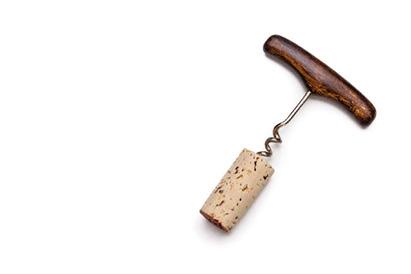

Mairead Robinson is delighted to share news of health benefits associated with our favourite tipples.
A recent report looking into the health effects of consuming white wine and champagne brings very good news for those of us who are fans of these drinks. Indeed as we are in the middle of our summer months, chilled white wine and bubbles tend to form our first choice for picnics and barbecues and light bright sociable get-togethers.
According to a new study, researchers found that white wine can have a ‘cardioprotective effect’ which could reduce your risk of suffering a sudden cardiac arrest. The UK study carried out for over 500,000 people also uncovered compelling evidence to suggest that making simple lifestyle changes can protect you from experiencing a sudden cardiac arrest.
What is encouraging for many of us is their finding that higher consumption of white wine and champagne, eating lots of fruit and maintaining a slim waistline can potentially shield you. So for those of us who enjoy a diet of fruits, fish and vegetable etc., and wash it all down with some white wine or perhaps a glass or two of bubbles, this is certainly good news! We have often heard that following a Mediterranean diet and having a glass or two of red wine is good for the heart, the news that white wine and champagne can also have health benefits is encouraging indeed. Obviously consumption must be moderate, and the quantity of wine being consumed must be taken into account. But it is indeed encouraging to learn that we can enjoy healthy food and a glass of white wine as part of a lifestyle that is going to contribute to heart health.
The study was published in the Canadian Journal of Cardiology where it stated ‘one of the study’s most intriguing findings is the cardioprotective effect associated with Champagne and white

wine consumption, questioning long-held assumptions about the specificity of red wine’s cardioprotective properties.’
Moderate alcohol consumption came under fresh scrutiny earlier this year after the outgoing US surgeon general called for stronger warning labels on alcoholic drinks. However, many recent studies have suggested that moderate drinking is not harmful, and it may even be beneficial. The latest findings of recent studies bolster that body of evidence.
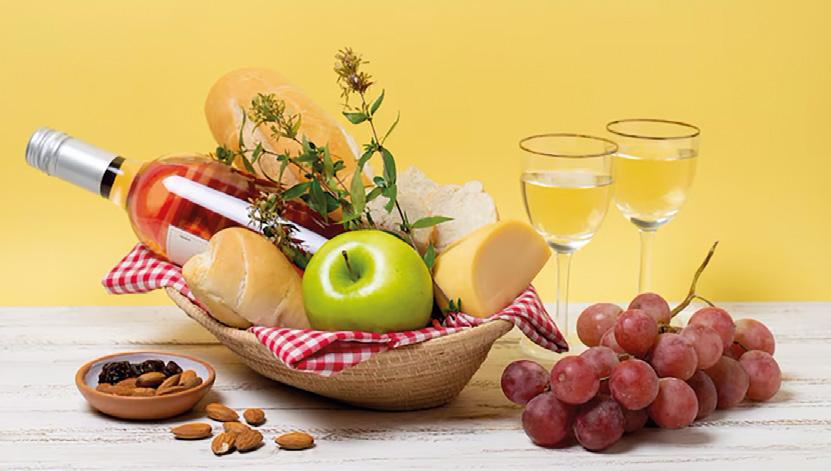
What is particularly interesting for older people is the recent study exploring links between alcohol consumption and health risks in older adults has also found that drinking wine during meals was associated with a protective effect.
While debates and discussions continue, there is no doubt that enjoying a glass or two of wine with your meal is beneficial. And what is really interesting is the finding that white wine and champagne can be so beneficial to our health. As already stated, moderate drinking is key.
So now that we are enjoying our summer months, perhaps it is time to take a fresh look at some good white wines that we can enjoy with our al-fresco dining.
One of my favourite white wines is one which we always enjoy on our trips to Spain, and that is Albarino. It is of course available here also, but there are many people who do not know about it, and instead stick to Chardonnay, Pinot Grigio and Sauvignon Blanc. If you have not chosen a bottle of Albarino before, I strongly recommend that you try it. It is a great wine to have with that healthy lunch, and pairs so well with fish, cheese, salads and breads. Check out your local wine shop or supermarket, and you will be pleasantly surprised. One of my favourites is Marieta Albarino, from Rias Baixas which is a particularly authentic Albarino , and at just 11.5%, it will will give you the opportunity to really savour how food-friendly this lovely wine is. Certainly a great summer wine choice.
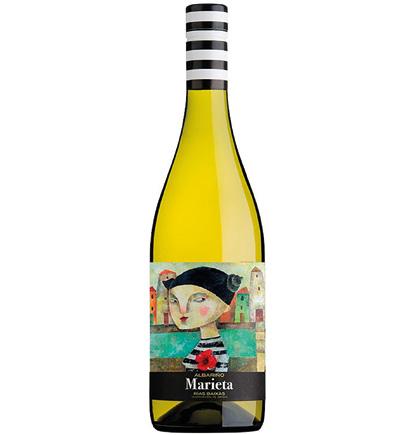
Moving from Spain to New Zealand, Villa Maria have an exceptional Pinot Grigio from Marlborough, which for fans of Pinot Grigio, this is a real hit. At 13% it is a more full bodied wine, but certainly a great hit with any richer food you might be enjoying this summer.
And finally I would like to recommend what I would term ‘a slightly blushing wine’ – this is not actually a white wine, but rather a light Atlántica Rosé, which is just the business for summer al-fresco meals.

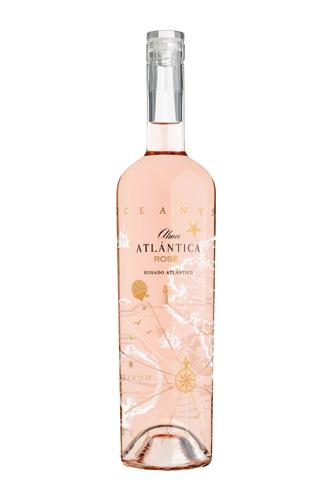
So as we enjoy our summer and all the benefits good weather can bring after a long winter – bright mornings full of birdsong, outdoor activities including walking, golf, swimming, and of course al-fresco get-togethers with friends and neighbours, we can happily enjoy a glass or two of chilled light white wine together with our summer dishes.
Good news indeed!
© UNICEF/DRC, 2025/Benekire

“We travel long distances to access healthcare,” she says softly. “When we returned to our village, we found the hospital in ruins. My child wouldn’t stop crying, so I brought her here, hoping for proper treatment.”
Since January 2025, life has grown even more harrowing for families displaced by conflict in Goma, the capital of North Kivu in the eastern Democratic Republic of the Congo (DRC). When the new regime dismantled displacement camps from around the city, families like Clarice’s were forced to leave the only shelter they had. Many returned to their villages to find their homes destroyed, their communities shattered, and essential services—like healthcare— gone.
Now, they face a new kind of battle: one against hunger, disease, and despair. Without access to clean water, food, or medical care, children fall ill. Cholera spreads. Malnutrition deepens. Lifesaving vaccines are missed. And mothers like Clarice are left to carry the weight of survival on their own.
But amid the devastation, there is hope.
At the Shasha Health Centre in North Kivu, Clarice gently rocks her daughter, Huguette. Her eyes are heavy with exhaustion, but her voice carries the quiet strength of a mother who refuses to give up.
James Elder, UNICEF Communications Spokesperson sits chatting with mothers, Clarice and Confiance outside the Shasha Health Centre, while they wait patiently to have their babies Huguette and 8-month-old Déborah receive care.

The Shasha Health Centre, once destroyed in the fighting, reopened in February thanks to UNICEF’s Rapid Response Programme (UniRR). Working with local health authorities, the centre was repaired, medical supplies and equipment delivered, and additional medical staff mobilised to support the already overstretched teams. Water is now drawn from a nearby lake and treated on-site, ensuring it is safe to drink. For families with nowhere else to turn, this centre is a lifeline.
Since reopening, within just three months, almost 6,000 people have already received care—2,000 of them
children. Over 100 women have given birth safely. And mothers like Clarice and Confiance, [pictured above] are being reached with the care their babies desperately need to survive.
The UNiRR also funds communitybased outreach programming. More than 200 workers have been trained to go door-to-door across Goma to identify malnourished children using simple but powerful tools—like midupper arm circumference tapes—to detect malnutrition early and provide interventions and treatment for mothers and babies before it is too late.

The Democratic Republic of the Congo has endured decades of conflict since gaining independence in 1960. The struggle for control over its vast natural resources has left millions displaced, traumatised, and impoverished. Children bear the heaviest burden—14.9 million of them in need of humanitarian assistance, many living without food, clean water, or access to education.
UNICEF has been working on the ground in the DRC since 1963. Following the end of the Second Congo War in 2003, UNICEF implemented the Rapid Response Mechanism (UniRR). This funding programme helps communities quickly after a crisis - often within just seven days following an evaluation on the ground. What makes UniRR special is that it works with local organisations. These groups know the communities best. They help with the delivery of food, medicine, and clean water. They also support the training of local health workers in providing community care and delivering vaccine and nutrition programmes for children.
with a legacy gift in your Will
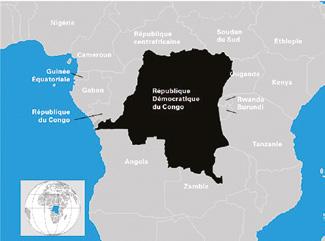
UNICEF is the world’s leading agency for child nutrition, working in 158 countries. Through innovations—like Ready-to-Use Therapeutic Food (RUTF) and WASH (Water, Sanitation and Hygiene) programmes— UNICEF has helped halve global child mortality within the past 25 years. An incredible achievement. A testament to what is possible within a generation.
But this progress is fragile. And it depends on people like you.
gifts in Wills will be more vital than ever in the decades to come. They will provide flexible, dependable funding needed to plan and deliver long-term lifesaving programmes to reach children—no matter where they live, no matter how hard they are to reach.
After you’ve taken care of your loved ones, please consider leaving a gift in your Will to UNICEF.
Your legacy will rewrite a child’s future –giving hope, love and opportunity.



UNICEF is funded entirely by voluntary contributions. With the significant reduction by governments of overseas aid,
Complete the form below to receive a free, no-obligation legacy information pack which includes a Will Planner.
FREEPOST (no stamp required) to: Pauline Murphy, Legacy Gifts Manager, UNICEF Ireland, 33 Lower Ormond Quay, FREEPOST F407, Dublin 1, D01 R283
Learn more on unicef.ie/legacy
If you are meeting your solicitor to include a gift to UNICEF in your Will, the details you will need are as follows:
UNICEF Ireland: Registered Charity Number: 20008727 Revenue Number: CHY NO. 5616 Registered Offices: 33 Lower Ormond Quay, Dublin 1
I am considering leaving UNICEF a gift in my Will. Please send me a Goodwill Legacy Guide and Will Planner.
Name:
Eircode:
My Email:
Address: County:
My Phone Number:
I would like to receive updates on how my support has helped children and information on other ways to help: If you prefer not to be contacted by post in the future, please contact us at info@unicef.ie Visit unicef.ie/about/privacy-policy for information about UNICEF’s data management practices.
Please don’t hesitate to contact us to speak in confidence.


Dermot Gillece on golfers who could also beat out a ballad
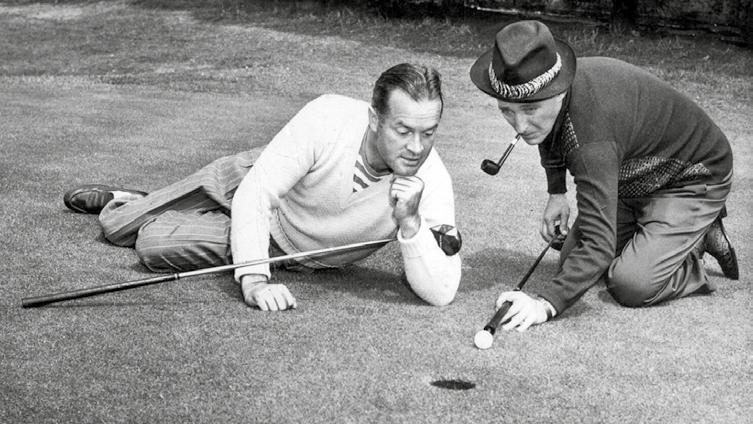
It was once observed that while Bing Crosby might have been the best singer to play golf, he wasn’t in the same class as Golf and singing is a popular combination, especially when there’s something to be celebrated around the 19th hole.
But doing so publicly is an entirely different challenge. Which reminded me of a fine American golfer named Charlie Yates, who passed from us 20 years ago. Interestingly, Yates made a very significant impact on the fortunes of leading Irish players, Cecil Ewing and Jimmy Bruen, yet is probably largely forgotten even by enthusiasts in this country.
I retain fond memories of meeting him during the 1997 Walker Cup weekend at Quaker Ridge in upstate New York, where Ireland’s representatives were Keith Nolan and Richie Coughlan and Yates was present as a survivor of the 1938 matches. In fact I was part of a group from the Association of Golf Writers who presented him with a print of a Graeme Baxter painting of the 17th hole at Troon, in gratitude for his many years as a very welcoming press officer at the US Masters.
Clearly charmed by the presentation, he proceeded to give us a fine, baritone rendition of "A Wee Deoch and Doris". He then related how he had learned the Scots ballad at St Andrews 59 years previously from the GB&I player, Gordon Peters, who was "grinnin' like a mule eatin' briars."
"I've got more mileage out of that song than Bing Crosby got out of White Christmas," Yates concluded with a smile. And nobody doubted him.
When the 1938 Walker Cup was staged on Friday and Saturday June 3 and 4 at St Andrews, the home side gained their first-ever victory, by a 7-4 margin. The basis of this was laid in Friday’s four foursomes which they won by 2-1 after Bruen and Harry Bentley halved the top match.
As a reflection of Bruen’s inspirational value to the side, the 18-year-old was chosen also at the top of the singles order. This time, however, he was up against Yates who more than justified his newly-acquired status as British Amateur champion in a 2 and 1 victory. The 36-hole match ended on the famous “Road Hole” 17th where Bruen, throwing caution to the winds, reached the green in two whereas Yates was short. The American sealed victory, however, by chipping and putting for par.
Later in the day, the 17th also became pivotal in Ewing’s match against Ray Billows, when the Sligoman, at number six in the order, won it with an exemplary par. Then, amid tremendous excitement, he went on to secure a one-hole victory with a half in par at the last. “12,000 Cheer the Cup” proclaimed Scotland’s “Sunday Mail” about an occasion when it reported St Andrews going “golf daft.”
Ewing made the home side as a reward for having reached the final of the British Amateur Championship at Troon the previous week, only to lose by 3 and 2 to Yates. So, the American went on to complete a double over Ireland’s best, even though this became the first time that we had two representatives in the Walker Cup matches.
Nine years after Quaker Ridge, I had reason to remember these details while I was recovering from heart by-pass surgery. On receiving a challenging letter from an Irish Times reader, I realised I had the time to give it my best attention. It was from a selfdeclared golf enthusiast who wondered if there was any chance of acquiring Masters badges for the following April as a special gift to his brother who was celebrating his 40th birthday.
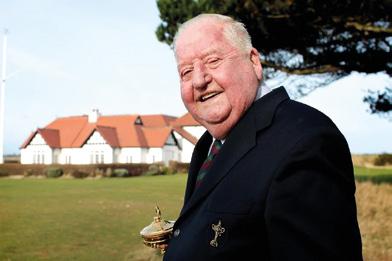
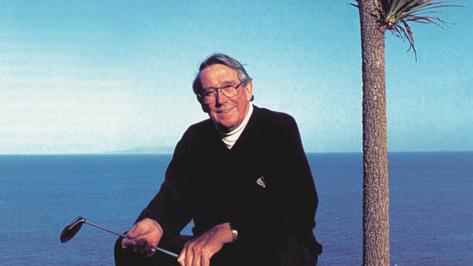
Normally I would have written back explaining that the task was beyond me. On this occasion, however, with time on my hands, I had a flash of inspiration. I suggested to my reader that he should dispatch a letter to Charlie Yates at Augusta National, mentioning the Irish connection he had established in 1938 by beating both Ewing and Bruen in Scotland. He could embellish the request for Masters badges by flattering an old man who had recently turned 83.
Remarkably, I got a letter back to the effect that the ruse had worked. Badges would be on the way the following spring, when a 40th birthday could be celebrated by watching up close an historic, 12-shot victory by an astonishing young American named Tiger Woods. Yates had delivered.

Meanwhile, back at St Andrews, the young American was prompted to burst into song at the first victory ceremony the British and Irish side had experienced in the history of the event. So, a fascinated Scottish audience heard to their delight: “Jist a Wee Deoch and Doris/ Jist a wee yin that’s a’/ Jist a Wee Deoch and Doris/ Before we gang awa’/ There’s a wee wifey waitin’/ In a wee butt and ben/ And if you can say ‘It’s a braw bricht moonlicht night’/ Ye’re a richt, ye ken.”
As it happened, St Andrews was also the scene in 1950 of an historic appearance by Crosby in the British Amateur Championship. Aged 46 at the time, the Old Groaner had by then gained the golfing distinction of having a hole in one on the famous, short 16th at Cypress Point where a 200-yard tee-shot is played over an elbow of the Pacific Ocean. He had also reached the sectional qualifying of the US Amateur.
At St Andrews, his first-round opponent was a local stonemason named JK Wilson, who also happened to be an amateur singer of some note. In the event, the man entered as Harry Lillis Crosby, drew an estimated gallery of 20,000 after starting with two birdies, though he went on to lose by 3 and 2.
So to Don Cherry, whose musical successes included “Band of Gold” which remains familiar to those of us of a certain age. He played three times in the Walker Cup, winning all his matches. And it could be that he shared a bar of a song with Joe Carr, who was known to hold a tune, as he did famously in 1958 at St Andrews – where else? – when Bobby Jones was serenaded with “Will ye no’ come back again” on his farewell to the Auld Grey Toon.
In championship golf, Cherry’s outstanding achievement was to take the Canadian Amateur and he reached the semi-final of the US Amateur in 1952 and the quarter-finals two years later. He turned professional in 1962 and doubled with some success as a cabaret artist. More recently, John Daly has attempted to do likewise, but has not managed to match Cherry’s chart success.
The bond that is created between sporting rivals was illustrated beautifully in the aftermath of Ewing’s death from a heart-attack in August 1973. His daughter, Ann Bradshaw, received a letter from Atlanta, Georgia, two months later. It read: "Perhaps you will recall that at Turnberry in 1963, I was with you and your wonderful Dad whom I played in the final of the 1938 Amateur Championship. My wife was with me and also present was a great pal of ours, Reg McCadden of Belfast. Recently he furnished a clipping concerning the passing of your father and now has given me your address.
"Thus, at this belated date, Dorothy and I want to extend our deepest sympathy to you and your family. Cecil was a wonderful person, full of life and always a pleasure to be with. During our match, I holed putts all over the course …” It concluded with the wish “I hope our paths cross again,” and was signed “Charlie Yates.”
“Through that letter, the events of 1938 suddenly took on a whole new meaning,” said Mrs Bradshaw, the 2007 president of the Irish Ladies’Golf Union. “It was most unexpected but greatly appreciated by myself and my family.”




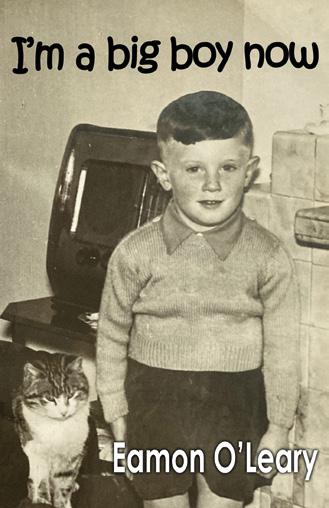





Colette Sheridan talks to Eamon O’Leary who has just published his first book at 72

honour the people in his life by writing about incidents involving them as well as autobiographical material.
When Eamon O’Leary took early retirement from the insurance business, he and his wife, Ruth, attended a pre-retirement course given by his company. Eamon, who had a cushy number with a company car and access to the company credit card, recalls being told that on the first Monday morning after retirement, he would lose contact “with 70per cent of the human race. It’s quite damning. The speaker said we would have to work at replacing that 70per cent .”
Now a published author at 72, Eamon, who has two daughters, is proactive in his autumn years. Based in Carrigaline County Cork, he recalls seeing a sign by Age Action in his local library. It said that if a person could send emails and google, would they like to help others?
“I did that and got huge satisfaction out of it even though I was showing people very basic stuff. Six months after I had met a man in the library and had one-to-one sessions with him, he stopped me in the street and said that I had made his old age. This man had been at home feeling lonesome as his children were all away. He said he is now in touch with them all the time, thanks to me.”
Eamon had to find his own purpose after retiring at fifty-eight; he got a good package which allowed him to leave the workplace early. He played golf “badly.” Having done several after dinner speaking gigs, friends suggested that he write short stories. The result is I’m a Big Boy Now’ which is a humorous collection of mini-stories about an Irish boyhood in “a less frenetic more adventurous age, reliving a time of skinned knees and homemade go-karts, clean dirt, Saturday night baths and the kind of sweets that’d nearly cost you your teeth.”
While Eamon hadn’t always had an urge to write, the stories in his book had been “milling around” in his head for decades. “I always feel we miss out on something when we don’t record or write down what our seniors say to us.” Eamon decided to
Growing up with a father who worked for CIE (now Bus Eireann and Irish Rail), Eamon and family lived like nomads, moving around the country. “Every time my father got a raise, he was transferred. My poor mother - she had a nice group of friends from Galway. Then one day, my father came home from work and said he’d been transferred to Dublin.”
After a while, Eamon’s father announced that their next move would be to Cork. “My mother cried all the way to Cork. There were three in the family – all boys. At the time, the youngest was probably in nappies.”
Eamon’s father was born in Kerry and his mother was a Roscommon woman. His older brother was born in Sligo. Eamon was born in Galway and the youngest was born in Dublin. “No matter who won the All Ireland, somebody in the family was happy. I was seven or eight when we came to Cork. That was our last move.” The family lived in Ballinlough, a suburb of the city.
“My dad didn’t have a shilling. For summer holidays (transported free of charge, a perk of the CIE job), we’d go back to Roscommon to visit my uncle. My mother had a basic cooker in Dublin. But in Roscommon, she had to go back to cooking on the open fire using a crane which held the pots that would swing in and out.”
Eamon O’Leary: while he hadn’t always had an urge to write, the stories in his book had been “milling around” in his head for decades.

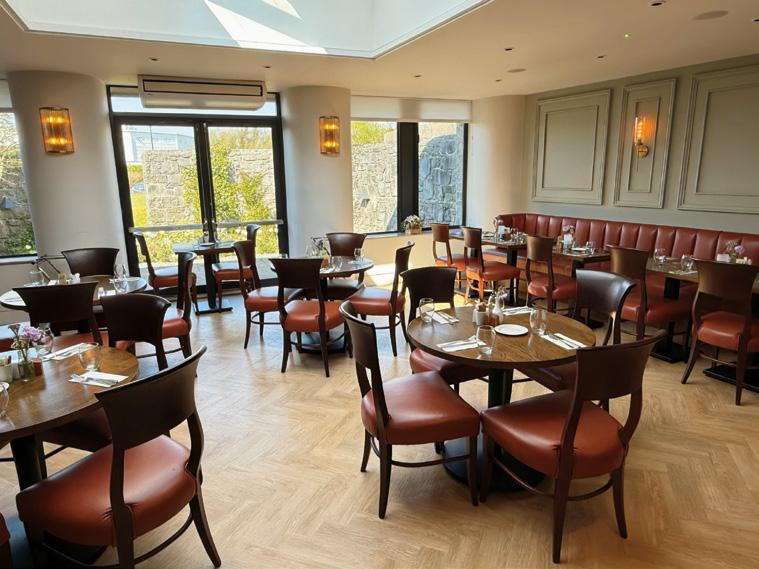


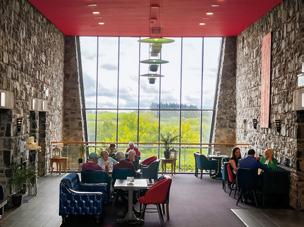


Living in different places and having to say ‘goodbye’ to old friends and make new ones wasn’t particularly traumatic for Eamon. “Kids are very adaptable. Even when kids lose a parent, they adapt. When we moved to Cork, it was to an extent a continuation of our adventure. We moved from a bungalow in Dublin to a two-storey house in Ballinlough. My mother had to find out where the shops were and get to know new neighbours. She would get the bus into town and would go to Roches Stores, lugging heavy bags. She’d come here to the market (Eamon and I chatted upstairs in the English Market’s Farmgate Café) over Cork’s famous food emporium. She would buy a double breast of chicken, bring it home and stuff it. She was creative; she had to be, we had no money. We were the same as everybody else. In those days, the doors were always open. Mum would give her last half crown to one of the neighbours. She mightn’t have enough to buy the dinner for us but if somebody was really on their uppers, we’d have a few cuts of bread and a bit of jam. A neighbour needed the money. My mother had a great saying. When me and my brothers would be talking about money and trying to advance our careers, she’d say: ‘don’t you realise there’s only three things you need in this life – a fire in the grate, bread on the table and good neighbours.’ She valued the right things.”
When Eamon’s father sought advice about where to send his sons to secondary school, Christian Brothers College was recommended, which is a fee-paying school. “He sent myself and my older brother there. My father literally scrimped and saved to put us through Christians. The youngest ended up going to Douglas Community School.”
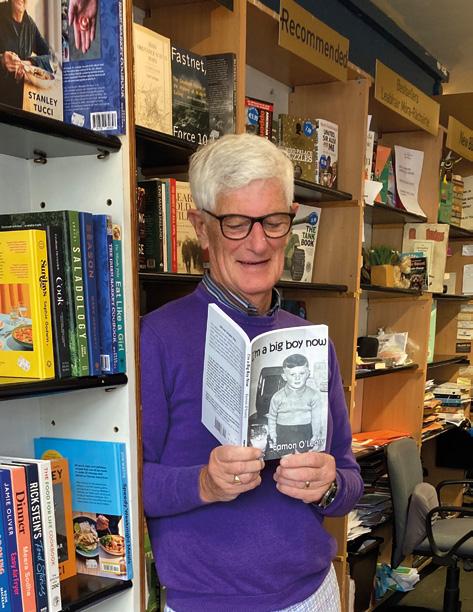

The new chapter in Eamon’s life sees him writing enthusiastically, a hobby that is satisfying, not least given that Eamon won the 2019 Southport International Short Story competition with a dark story. Most of his stories are light and funny and are strong on dialogue. Acclaimed Cork writer, Billy O’Callaghan, advised Eamon to get them published, saying they reminded him of John B Keane.
The Holly Bough (Cork’s eclectic magazine published every Christmas for over one hundred years) published a number of Eamon’s stories. “That gave me a great boost. Writing my book has taken me forever with redrafts. I got a great hint at one stage. When you’ve typed your story and read over it and edited it and you’re happy with it, close the file down and go back to it maybe three or six months later. You’ll say ‘oh my God, that was fantastic advice.’ I did go on to use the services of a professional editor who tidied it up.”
Eamon is a member of the Carrigaline Writers’ Group. “When I first went to it, I was like a child handing in my first exercise. I thought they’d laugh. But they said my work is very good. They have been very encouraging. Billy O’Callaghan said that if I didn’t publish my stories, I would go to my grave with the stories sitting on my computer.”
Eamon approached various publishing houses in Ireland. “One of them showed an interest but said they were full until 2027. I got signed to Bridge House (a small UK family publishing company) as they had published a number of my short stories in little anthologies.”
A contributor to RTÉ’s ‘A Word in Edgeways’ which offers reflections by people from all walks of life, Eamon has broadcast numerous items for this early morning slot. One of them was about his father waking him and his brothers before sunrise to go out and pick mushrooms in a field full of them. He wrote about the mushrooms cooking on sods of turf from the fire. All grist to the mill for this creative OAP.




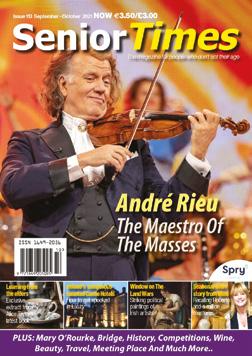





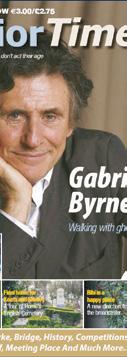


































A mum has relived the shock of a sudden life-changing stroke just days after she brought her newborn son home from hospital.
Lisa Kenny, from Balbriggan, North Dublin, spoke for the first time about her experience of stroke aged 36 in 2019four days after she brought her new baby, Alfie, home.
The mother of two, now 42, said her second pregnancy had been normal and no health problems had arisen during her hospital appointments.
Alfie was born on October 4 but, due to complications such as pneumonia and seizure after her stroke, it would be seven months before Lisa could return home to him.
She now lives with aphasia, an acquired language disorder that frequently occurs following brain injury, such as stroke, and has shared her story as part of Aphasia Awareness Month. Aphasia affects understanding of spoken or written language, including reading and writing or the production of spoken language.
Lisa’s first symptom was a headache, she later lost feeling in her right arm and leg and her face began to droop.
Her fiancé, Paul, phoned for an ambulance and a brain scan revealed she had experienced a haemorrhagic stroke. She underwent brain surgery two days later and again two months later to replace her skull bone. “With my stroke and aphasia, it was hard to suddenly be separated from my children because I couldn't talk and I was on a lot of medication,” said Lisa.
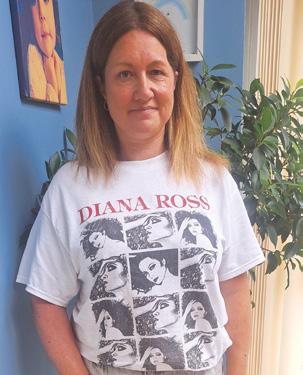

“When I was in hospital, especially through COVID, it was so hard because I couldn’t see my children, Emily, now 13, and Alfie.”
Lisa was later moved to the rehabilitation ward, where she worked with an occupational therapist, physical therapist and speech and language therapist.
“Now, I’m okay with speaking and talking, it’s 50/50. I have got back to normal texting, which is huge for my communication,” she said.
As a result of her aphasia, she could not return to work and the family had to move out of their home, as it was challenging for her to move around in.
Lisa uses many Irish Heart Foundation supports to aid her recovery, including the Young Stroke Survivors Network, the Life after Stroke private Facebook group, the Aphasia-Friendly Café and the Rhythm of Recovery Choir.
“I continue to push and challenge myself and just try to stay positive.
“I keep going - keep strong and healthy –for Emily and Alfie.
“I choose to laugh, love and be happy because life keeps going on and I will always have them with me."
“My speech and language and physiotherapy are the key, too.”
She is working with the charity to improve her comprehension, reading and maths.
"The Irish Heart Foundation offers a variety of support services for people living with the life-changing effects of a stroke, including the challenges of aphasia,” said Helen Gaynor, Head of Community Support Services for the Irish Heart Foundation.
“Our Stroke Connect Service and peer support groups are available to anyone who has experienced a stroke, and those living with aphasia.
“Our Step by Step through Stroke booklet, a helpful guide for stroke survivors, families and carers, helps people to prepare for potential changes due to stroke, such as communication difficulties."
“We also host the Aphasia-Friendly Café a few times a year, which is an online programme designed for those who experience communication challenges following stroke.”
For more information on aphasia support, and other supports for anyone affected by heart disease or stroke, provided by the Irish Heart Foundation, visit: irishheart.ie.

builders are planting houses on our play ground that laughed with us, played our play, slapped our bodies when we fell, was kind to our tramp over its precious grass, pushed up nettles, keeping a bit-part of itself to itself, clear of us; knowing a life lesson: that there are places one can’t go or one gets scolded.
a hairline born from the din on the frescoed ceiling
between the Piccadilly line and the Victoria line – our teacher explaining the Tube
the sound my arm makes as it breaks my fall on the wet pavement
on my uncle’s two hands, tough from the baling twine in the meadow
in yesterday’s cow dung drying in the sun
in the sixty-year-old sound of JFK’s speech to Dáil Éireann
in the paint on the hearse at my Granddad’s funeral
wonders what happens when this child goes home –
the child christened, Gift, who sits all day in class maybe taking nothing maybe taking something in.

From a salad plate he plucks a long green leaf, suck snips its end, crushes it in politeness amid a face that’s lost in the fragrance of her blending herself to him. She hurts, hunts for time run out in spaces that hear her paradise. In the plush restaurant
We are on a boat. You are no longer argumentative. I am no longer wishing-away. You are happy to fish, not care when you catch. I knit when I feel like it, not sticking to any patterns, half bawneens, plain purl, plain, plain, purl. Hook, bite, lose, hook, bite, hook, fish fish.
I cook. We eat. There’s sex and sleep. If its not too late.
It was a new canvas he’d started that morning, had put a mid-grey wash all over it, after it had dried he’d started something –left-hand-side, bottom corner. We can’t make out the squiggle, will never know what he was at there. We found him slumped in front of the easel, Windsor & Newton paints drying on his hands. The nurses tried to scrub them clean, but failed, the colours will fade in time, as he lies there fighting this second stroke.
© Noel King
Senior Times welcomes receiving poetry contributions which should be up to 750 words in length in one work or more. Email your works in Word or similar format to john@slp.ie Regrettably we cannot accept handwritten or typed ‘hard copy’ contributions.

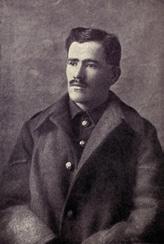
For golf lovers there are a number of first class courses in the area including Laytown and Bettysdtown a formidable links challenge the 1st World War POET (1887-1917) who died in the conflict
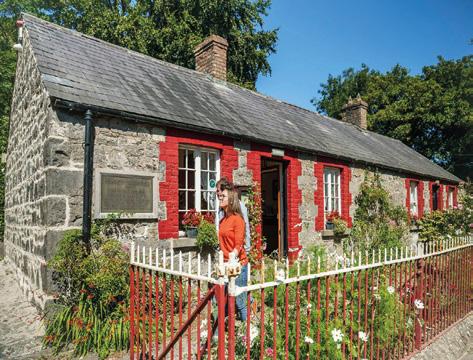
Synonymous with the UNESCO World Heritage site at Newgrange and The Battle of the Boyne Heritage Centre this region, embracing Counties Meath and Louth, has numerous lesser known attractions as George Keegan discovered
Throughout my younger years Slane village and the town of Drogheda were places I passed through on my way to Dublin and where I rarely stopped, so I knew very little about the Boyne Valley and what it has to offer. A few months ago however I had the opportunity to spend a couple of days touring around the area to discover the many attractions there.
The local tourist board Discover the Boyne Valley points out that the Valley, which is part of Ireland’s Ancient East, is the perfect place to get out of your comfort zone and experience something new and make some fantastic memories. The Valley for families, solo travellers or couples offers a wide range of activities, fantastic heritage, beautiful landscapes and excellent foodall the components of a wonderful holiday adventure. The area covers Meath and parts of Louth.
Among the activities on offer are strolling around the many historic gardens, taking in a round of golf (with 11 courses to choose from), going on a self- guided historic trail, travelling along the Boyne Valley Drive exploring the 33 heritage sites and of course not forgetting the UNESCO World Heritage Site of Newgrange, Knowth and Dowth, where advance booking is essential.
Attractions not to be missed
Hill Of Slane: At the top of the hill which is 153 meters above sea level (but a gentle climb up) are several important monuments – a very well preserved tall Gothic tower, the ruins of a Franciscan Monastery (1512), and the site where in AD433 Saint Patrick lit a Pascal Fire in defiance of orders by the pagan High King so introducing Christianity to Ireland. On a clear day the view from here is spectacular.
The Ledwidge Museum: I was particularly impressed with this small museum
dedicated to the World War 1 poet Francis Ledwidge (1887-1917) which is located at Janeville just outside Slane. It was in this cottage he was raised and thanks to a great voluntary team it has been restored and preserved in his memory. Inside are many artifacts and memorabilia of his life and work. Opening times are daily 10am-1pm & 1.30pm – 5pm.
Arts and Crafts: For something completely different try to book the workshop about felting run by the very talented textile artist and felt maker Caoimhe Tuthill at her studio home at Cashell , Slane. Caoimhe points out that she uses the ancient craft of wet felting to make a distinctive style heavily influenced by her love of the Irish landscape, the natural world and her Neolithic surroundings. She runs workshops and studio visits by appointment only. After a couple of hours ‘hard work’ ! ! (complete with lots of banter and coffee served with delicious homemade cake). I left with my very own ‘masterpiece’.
Slane Distillery: Taking a guided tour of this distillery on the grounds of Slane Castle is well worth considering even if you
are not a whiskey drinker. The distillery was originally Slane Castle Irish Whiskey founded by Henry Conyngham with his son Alex in 2009. It was later bought by American distillers Brown-Forman Corporation who produce the Jack Daniel whiskey. The tour consists of the brand story and production details finishing with a tasting. There is a delightful room complete with bar used for wedding receptions, containing lots of memorabilia regarding the many famous rock concerts held on the castle grounds since 1981, when Thin Lizzy were the headline act. Castle tours are also available to book with opening times between 11am and 5pm.
The Boyne Valley Camino: starting at St. Peter’s R.C Church on West Street Drogheda. The Camino brings pilgrims on a journey through history. The route consists of a mix of riverside, greenway, paths through woods, quiet country roads and a path along a canal. This is part of the Celtic Camino and those who walk the 25km can then use this journey added to the 75km from Coruña to Santiago de Compostela and receive their special stamped passport .
The Whiskey Museum at Slane Castle offers an interesting diversion and includers a tour of the distillery, sampling and a talk on the distilling process

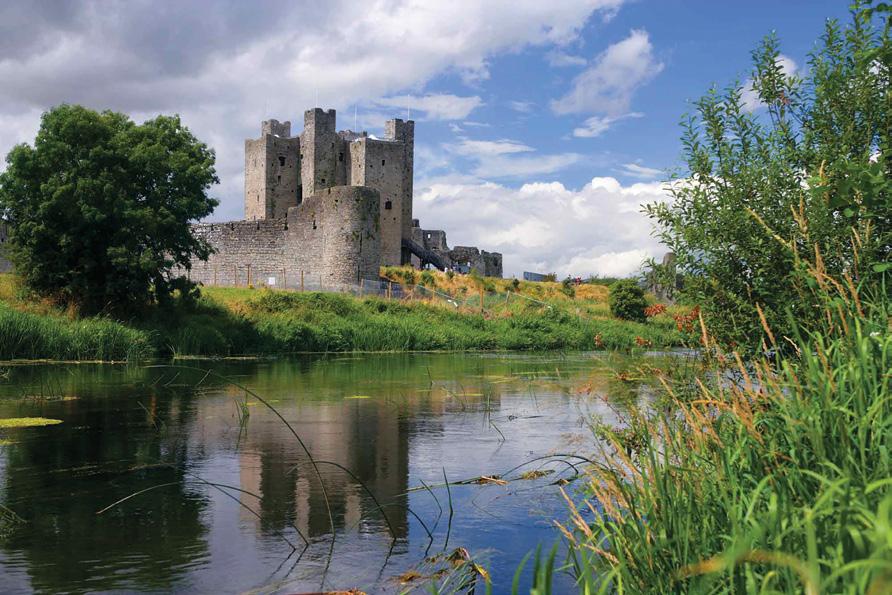
St. Peter’s Roman Catholic Church: The impressive building was constructed in 1884 and has a very tall west gable and several fine windows. Here you will also discover the shrine to St. Oliver Plunkett where his relics form the centrepiece. Oliver Plunkett was born in nearby Oldcastle and spent a great deal of his time in Drogheda, where he is credited with opening several schools. He was executed in England In 1684 and canonised in 1975.
St. Peter’s Church of Ireland: Built on a site which has been the centre of worship at least since the founding of the town itself. It’s thought the first church may have been constructed around the same period as Mellifont Abbey. In 2002 a celebration was held to commemorate the original dedication of St. Peters and also marked the end of a 3 - year programme of restoration, following an arson attack in 1999. Worth seeing inside is the font, the only surviving relic of the medieval church still in use and the organ dating from 1771.
St Anne’s Catholic Church: Situated along Shop Street it was built between 1859 and 1866. The St. Augustines have had a presence in Drogheda since 1295. The design was in a Victorian Gothic Style. Inside be sure to view the beautiful Harry Clarke window depicting St. Augustine and St. Monica over the North aisle. If you are seeking a quiet spot away from the town noise then allow some time to reflect in the Memory and Meditation Garden at the rear of the church, complete with a small fountain and name plaques of parishioners down the years.
Independent Councillor Paddy McQuillan, who invited us to take a tour of the really impressive Civic Offices which were officially opened last year. This followed a major re-development of two unoccupied listed buildings. He filled me in on many aspects of the town and its history.
Places of particular interest on our walk included viewing some of the Urban Art Trail consisting of 8 large murals with the theme of mythology, the St. Laurence Gate from the 13th century built to protect from invaders and finally the Arts Centre in Stockwell Street established in 1989. This is a multi-disciplinary Centre providing extensive curated arts and cultural programmes from film and theatre to family/children events. It has a 169 - seater theatre.
organise a calendar of events throughout the year. It has continued to expand ever since.
My overall impression of the visit was one of surprise and then delight that so much is on offer for visitors to this region. I look forward to returning before too long.
Useful websites www.discoverboynevalley.ie www.heritageireland.ie www.boynevalleytrails.ie www.boynevalleygardentrail.com www.boann.ie (felting) www.francisledwidge.com www.boynevalleyflavours.ie
The nave of the splendid gothic revival church of St Peters, Drogheda. The church contains the relic of St Oliver Plunkett

Senior Times, in association with the publishers, Gill Books, is offering four copes of the best-selling Irish Oddities as prizes in this issue’s crossword competition. Consisting of the best material from Foster’s Irish Oddities and Foster’s Even Odder Irish Oddities, this addictive, fascinating and humorous book is an indispensable collection of Irish trivia, history and uncommon knowledge.
Meet the first and only person to attempt to steal the Crown Jewels, and marvel at Paddy the pigeon, the first bird to fly back with news of the D-Day landings. From the Church of Ireland bishop who was devoted to God by day and robbed people as a highwayman by night to the County Waterford farmer who never wore anything other than white linen
Name:
Address:

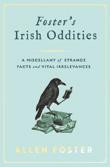
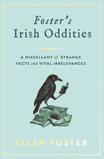

Phone:
Email:
ACROSS
1 Middle East country, capital Damascus (5)
4 Alteration or coins in your pocket (6)
7 Round white beads from oyster shells (6)
11 Muhammad Ali, previously ___ Clay (7)
16 Visit this Pyrenean republic and roar! (7)
17 Nationality of Michelangelo or 90 Down (7)
18 City of Limerick is at the head of the ___ estuary (7)
19 Digit found in shoes or potatoes! (3)
20 Acidic citric fruit - not a melon! (5)
22 Latter portion of the day (7)
23 Gulpers go for this orgy of shopping (7)
24 Can a loner register formally as a participant (5)
25 Welsh bass-baritone, Bryn ___ (6)
27 Maybe a sprout rubs less in this Belgian city? (8)
31 Monetary unit of S. Africa (4)
32 Oh! Tams are worn in this Liberties street! (6)
37 Zimbabwe - formerly ___ (8)
38 Appalling, very bad or frightful (7)
41 Fourth note in the tonic sol-fa (2)
42 Native of Italy’s capital, lives in a manor! (5)
46 They were the ‘Roaring ___‘ in the 1920’s (8)
47 He was our first president, Douglas ___ (4)
48 Very very angry (5)
49 A junior girl guide or a chocolate cake (7)
51 It’s a short avenue or ‘___ Maria’ (3)
52 UK singer of ‘Candle in the Wind’, Sir ___ John (5)
54 Can a native of Thailand be a pussy-cat? (7)
55 Invitee or visitor (5)
56 39th US President, Jimmy ___ (6)
58 Marquis __ ___, controversial French writer (2,4)
60 Irish track & field athlete, ___ O’Sullivan (5)
63 Would Miss lie about this propelled weapon (7)
65 Do all lanes lead to this Boyne valley castle? (5)
67 Was the new Pope born under this sign? (3)
68 A meatier domain of an emir! (7)
69 Co Wicklow valley or Co Offaly bog? (5)
70 Use this transport to go to the mart! (4)
71 Swiss cheese to make me lament! (8)
74 Swag, loot or illegal goods (5)
75 An ounce, in short, or Australia? (2)
76 Official who ensures fair play in sports (7)
78 German shepherd dog (8)
82 Wiped out or deleted (6)
84 Spouse of James Joyce, ___ Barnacle (4)
85 Liquids for washing hair (8)
88 Relating to nautical matters, not for airmen! (6)
92 Hit hard with a vigorous blow (5)
94 Lettuce with crisp, tightly packed leaves (7)
96 Portuguese footballer, Cristiano ___ (7)
98 Lewis Carroll’s ‘Wonderland’ heroine (5)
99 Mineral valuable enough to be mined (3)
100 Copy or ape (7)
101 Collection of Middle-eastern tales, ‘___ Nights’ (7)
102 Novel by Walter Scott (7)
104 Native of Balkan country, capital Belgrade (7)
105 Giggle or laugh nervously (6)
106 Extension or wing added to building (6)
107 Satin cushion or iced caramel (5)

The colour of embarrassment! (7)
Spare this and spoil the child (3) 3
Island off west coast of Scotland (5) 4
5
6
8
Coco ___, French fashion designer (6)
Able to move quickly and lightly (5)
They’re not supposed to let the ball in! (7)
County Clare town - found in a tennis court? (5) 9
Co Wexford’s Europort (8) 10
Part of a seaside town nearest to ocean (8) 11
Small watercrafts for the oceans! (6)
12
J.M. ___ , wrote ‘Deirdre of the Sorrows’ (5) 13
Time between two periods (7)
Very strong metal (5) 15
21
26
Existing alone, unmarried (6)
English poet & playwright, Christopher ___ (7)
Liverpool-based football club (7) 28
29
30
33
Second note of the tonic solfa (2)
Secret agent such as Kim Philby (3)
Gliding across ice (7)
Sheltered port (7)
34 Form of poetry used by Shakespeare & Donne (6)
35
Eric Morecambe’s partner, Ernie ___ (4)
36 Is a bare cube of meat cooked on this outdoor grill? (8)
37
39
40
43
Very bad, decayed or unsound (6)
Valley where Newgrange is situated (5)
Leather with napped surface (5)
S. Africa’s president, elected in 1994 (7)
44 What Donald Trump calls some news!! (4)
45 Creator of ‘Peter Rabbit’ ___ Potter (7)
50 Black garment worn by priests (7)
53 US golfer, Lee ___ (7)
54 In the closet it’s a scandal! (8)
57 King Arthur’s advisor and wizard (6)
59 Any seal could examine in detail! (7)
61 High tide occurring twice a month (4)
62 Stops sleeping & becomes conscious (7)
63
Unit of length approx. 1.094 yards (5)
64 Garden tool for digging (5)
65 Czech composer, Bedrich ___ (7)
66 Small smooth stone (6)
72 Unit of length equal to 1,760 yards (4)
73
77
79
Capital of Georgia (7)
Liquor found in a drum & a forum! (3)
Prognosis - given by Met Eireann (8)
80 Type of window for Sir Roger! (8)
81 Move - travel - depart (2)
83
Self-taught, he pursues a mature study! (7)
86 Overseas - not at home (6)
87
Regular payment to a retired person (7)
89 Most level or regular (7)
90 Can I taint this Venetian old master? (6)
91 Courteous & mannerly (6) 92
Coverings that protect the feet (5)
Republic in West Indies (5) 95 Fruit trodden in winemaking (5)
Disgraced cyclist, ___ Armstrong (5)
Accumulate or collect (5)
Quality of a colour (3)

Mairead
Robinson highlights the benefits of correct exercise.
Some time ago, I interviewed Dr Rose Kenny from TILDE about health in older age, (TILDE - The Irish Longitudinal Study on Ageing) and one thing she was adamant about was exercise. While I was keen to stress the benefits of getting out doors and going for that daily walk, she was insisting that this was not enough exercise at all, and that older people needed to be doing much more exercise in order to maintain a healthy body and mind.
She mentioned using the gym and availing of weights to keep muscle strength. While this might surprise some people as there are not a lot of people in their 70s and 80s filling up our gyms, there are certainly a good number who do work out every day well into their 80s and beyond. However, one form of exercise that she specifically mentioned was Pilates. Indeed I have come across quite a number of seniors who really enjoy Pilates and attribute this form of exercise to their muscle tone and strength. It seems to have overtaken Yoga as the exercise of choice for the 50+ demographic.

So what exactly is it, and how does it benefit seniors? Basically it is a method of exercise that focuses on strengthening muscles, improving balance, and enhancing body awareness. It is a lowimpact workout that emphasizes precise movements, controlled breathing, and muscle engagement, particularly the core muscles. It was developed as a way to help dancers recover from injuries and improve their overall fitness. Due to the fact that it is low-impact, it is gentle on the joints, making it suitable for a wide range of fitness levels and ages.
We do find as we get older, one of the first things we notice is our sense of balance. Whereas once we could balance on one leg, now when we try that, we tend to wobble! This is a sign that we need to work on muscle tone. And this is where Pilates really comes into its own. Another aspect of Pilates that appeals is the mind / body connection and controlled breathing – this enhances muscle engagement and improve focus.

As we get older, one of the first things we notice is our sense of balance
The benefits are excellent for seniors as regular practise can improve strength, flexibility, balance, posture and body awareness. It can also reduce stress and improve overall wellbeing.
Popular Pilates instructor, Marguerite Hurton has been teaching Pilates for seventeen years having completed her course in Bodyform Pilates, and is qualified in both mat work and chair pilates. ‘I got into Pilates back in 2007 when I was suffering from lower back pain so I took a pilates class and honestly I have not looked back since!’ She believes that pilates is an excellent form of exercise for people over 50, offering numerous benefits for physical and mental well-being. ‘It improves flexibility and mobility, reduces stiffness and improves range of motion, core strength and stability. It is both gentle on the joints, making it suitable for people suffering from osteoporosis, arthritis and mobility issues and incorporates breathing techniques and relaxing methods to reduce stress.
Marguerite’s classes for the 50+ demographic are particularly popular as they are focussed on a slower and more gentle pace helping to build strength, flexibility and balance. Her Chair Pilates class is an excellent way for those with mobility issues to stay active and to improve physical function, while reducing stress and enhancing overall well-being. And for so many of us who suffer from back pain – as Marguerite herself did prior to discovering pilates – chair pilates will improve physical function and posture.
After decades of enjoying yoga as my exercise of choice, at every level, I was really interested in exploring Pilates. It was the Chair Pilates that impressed me, as I could see, and indeed feel, that this was strengthening my ageing muscles. The women and men who were also enjoying Chair Pilates all extolled the benefits.
with Des MacHale
Outside of humour, one of my main interests is puzzles of all kinds—riddles, conundrums, sudoku, bafflers, lateral, logical, teasers, mathematical, word and sequential —the list is almost endless. The Senior Times editor has kindly indulged me by allowing me to present a fun puzzle corner in every issue of Senior Times. Some of the puzzles are hard, others are easy, some are serious and some are just silly, but you get no idea which is which.
However, I firmly believe that once a solution to a puzzle is given, one loses interest, so my twist is that solutions are postponed until the next issue. So the reader has two months to think them over and maybe even talk them over with family and friends. And there are no prizes—the best prize is that incomparable feeling that you solved the puzzle yourself. So put your thinking cap on and enjoy!

And to be honest, it is really encouraging to discover something new as you get older!
If you feel that the practise you have embraced for years is no longer helping you keep optimum health and strength,it is wonderful to discover something new that you can embrace and as your strength returns, you may well return to the advanced postures that you loved and practised for so many years. To be honest, there is a mental energy aspect to embracing a new discipline, and it may well bring you back to what you loved, and even taught, for decades previously.
Indeed health and beauty are entwined, as when you are healthy you glow, and smiling and glowing are the root of beauty. So check out a practise that will inspire you and bring a beautiful smile to your face.

1. How many words can you find where the plural has twice as many letters as the singular?
2. If 26 L of the E.A. stands for Twenty-six letters of the English Alphabet, what does 88 K on a P stand for?
3. Add a single letter to the name of an animal to give a completely different animal.
4. When Al left this country, it became a completely different country. Why?
5. February is the shortest month of the year. What is the longest month of the year?

IMPORTANT! When submitting an advertisement ensure you include your postal address for replies. (Only Senior Times will have these details).
WICKLOW GENT MID 60s NS , GSOH and coversationist. Interests include music, reading, thetre. walking and the outdoors. WLTM lady of similar age. Am prepared to travel.
REPLY TO BOX NUMBER W1
MIDLANDS BASED RETIRED professional lady, 65, well- travelled, many interests including all types of music, travel, reading, walking and the theatre. WLTM tall gent 60-70 for relationship, weekends away and holidays
REPLY TO BOX NUMBER W2
EAST CORK LADY WLTM kind, intelligent gent 68-75 to share life experiences and maybe create new ones. Must have a GSOH. Interests include the arts, reading, current affairs and history
REPLY TO BOX NUMBER W3
NORTH CO DUBLIN LADY, 75 , slim, medium height WLTM an educated gent. Interests include travel abroad, theatre, art appreciation, walking, dancing, reading, classical and traditional music
REPLY TO BOX NUMBER W4
SINCERE LADY separated many years, a young 74, living in Dublin Southside originally from Kerry. I'm fit and healthy, kind and of good appearance, sociable and friendly. I love the outdoors all year round.I enjoy music,reading,history,current affairs,many sports.Like to travel here and abroad.I love poetry and do a bit of writing I'm a nonsmoker,but like a glass of good wine and healthy food. Have simple tastes like coffee in nice surroundings and good conversation. WLTM a nice man with similar interests and a zest for life for companionship and perhaps more..
REPLY TO BOX NUMBER W5
DUBLIN MALE, SEPARATED. 72, NS SD 180cm height, still reasonably fit and energetic. Like the great oudoors, fine dining, cinema, theatre, walking etc. WLTM lady with similar interests who would like to be a companion for social events etc.
REPLY TO BOX NUMBER W6
NORTH EAST BASED GENT EARLY 70s NS SD WLTM lady of similar age from anywhere in the country to share days and evenings out. Intersts include, cinema, theatre, dining out, and many types of music.
REPLY TO BOX NUMBER W7
NB: When replying to advertisements give only your phone number and/or your email address. Do not give your postal address!
NORTH WEXFORD LADY 65 NS, SD own house and ca, WLTM a kind and honest gentleman of similar age (ie umder 70) with similar interests I like walking in nature, travelling at home and abroad, eating out, coffee in nice surroundings, reading, social dancing etcv. Am seeking a long-term respectful relationship.
REPLY TO BOX NUMBER B1
DUBLIN GENT 72 retired professional, 5ft 11in, good appearance, NS, SD. Many interests including music, dancing, walking, current affairs, reading, cinema, eating out, bridge, travel home and abroad etc. Sociable, kind and loving personality. WLTM warm hearted educated lady with some of these interests.
REPLY TO BOX NUMBER B2
CORK LADY 72 WLTM gent for outings and events, theatre etc and craic.
REPLY TO BOX NUMBER B3
I AM A RETIRED PROFESSIONAL WOMAN in my seventies living in South Dublin. I am fit and healthy and enjoying my retirement to the full. I play golf and enjoy going to the National Concert Hall for various events. I enjoy history, literature and philosophy and popular sciences events and various life-long learning classes I also enjoy good conversation on a range of topics including politics. I am divorced for over 20 years and have, I’m told , a nice smile. WLTM gent of similar age and interests REPLY TO BOX NUMBER B4
SOUTH DUBLIN WIDOW LATE 70s.NS SD WLTM gent of similar age to share the simple things in life..coffee, chats, walks. theatre etc. Also to soak up the sun on trips abroad and do the things that are not fun doing alone. REPLY TO BOX NUMBER B5
VIVACIOUS SDOUTH DUBLIN LADY 60s WLTM gent late 60s early seventies, NS SD . Interests include music, eating out, travel at home and abroad. Looking for someone to share all the good things life has to offer. REPLY TO BOX NUMBER B6
PROFESSIONAL LADY, TALL, SINGLE, RC WLTM a single gent 5ft 11-6ft with good dress sense for social outings . Many interests including world travel, concerts, reading, theatre, cinema, cooking, animals, charity work, current affairs, swimming, ballroom dancing , A big plus if you can dance. Must be of a generous nature and have a car. REPLY TO BOX NUMBER A1
LADY, 69, VERY YOUNG AT HEART living in Dublin.Originally from Meath. NS, SD, Very witty. I would like to meet a nice
guy who is interested in movies, plays, concerts, travel home and abroad, walks, swimming, dining out and relaxing . Yippee!
REPLY TO BOX NUMBER A2
MID WEST WIDOW, caring, a good listener having a positive outlook, enjoying travel, gardening, art, current affairs, armchair sports and socialising.. WLTM a good natured, kind happy and interesting good humoured NS gent in 70s for developing friendship and companionship and shared activities.
REPLY TO BOX NUNBER A3
SOUTH EAST GENUINE, SINCERE LADY, 70s, ND, NS, slim, kind, loving and caring, pleasant personality/ Interests include cooking, music, entertainment, dining out, travelling and sight seeing. WLTM catholic gent 70 - 75 with similar interests for companionship.
REPLY TO BOX NUMBER A4
KEEN PHOTOGRAPHER WLTM those with similar interest in photography for meetings, outings etc.
REPLY TO BOX NUMBER A5
SEMI-RETIRED BUSINESSMAN 70s living in the Midlands. Tall, slim and of good appearance. Very kind and generous. Interests include most type of music, dancing, cycling and walking, eating out and short breaks. WLTM lady with similar interests.
REPLY TO BOX NUMBER A6
LADY 69 young at heart living in Dublin but originally from Meath. WLTM a nicer guy who is interested in movies, concerts, travel home and abroad, walking, swimming, dining out and relaxing.
REPLY TO BOX NUMBER A7
DUBLIN PROFESSIONAL GENT EARLY 70s. GSOH, NS< SD medium height, neat appearance. Interests include ,music, social dancing, travel home and abroad, current affairs, reading, theatre, cinema, eating out and sport. WLTM lady 65-with similar interests and zest for life.
REPLY TO BOX NUMBER A8
NORTH CO DUBLIN BASED LADY slim, 5ft 4in WLTM a superbly compatible gentleman. My interests are varied but include walking, dancing, reading, classical and 60S music, travel. Someone well educated and with a GSOH to boot would be appreciated.
REPLY TO BOX NUMBER A9
KILDARE MAN MID 70s fit and slim and good appearance WLTM a lady 65-75 to share music, dancing and eating out
REPLY TO BOX NUMBER A10
NORTH DUBLIN WOMAN LATE 60s
WLTM social gent. All my life I have been involved in sport, playing coaching etc. I play golf now. Major rugby fan, Have worked and still work as movie extra and sometimes appear in ads. Love to dance when the knees allow. Moderate drinker, but like a G&T. The ball is in your court now. Cheers!
REPLY TO BOX NUMBER A11
PROFESSIONAL LADY, TALL, SINGLE, RC WLTM a single gent 5ft 11-6ft with good dress sense for social outings . Many interests including world travel, concerts, reading, theatre, cinema, cooking, animals, charity work, current affairs, swimming, ballroom dancing , A big plus if you can dance. Must be of a generous nature and have a car. REPLY TO BOX NUMBER A1
LADY, 69, VERY YOUNG AT HEART living in Dubli.Originally from Meath. NS, SD, Very witty. I would like to meet a nice guy who is interested in movies, plays, concerts, travel home and abroad, walks, swimming, dining out and relaxing . Yippee!
REPLY TO BOX NUMBER A2
MID WEST WIDOW, caring, a good listener having a positive outlook, enjoying travel, gardening, art, current affairs, armchair sports and socialising.. WLTM a good natured, kind happy and interesting good humoured NS gent in 70s for developing friendship and companionship and shared activities. REPLY TO BOX NUMBER A3
SOUTH EAST GENUINE, SINCERE
LADY, 70s, ND, NS, slim, kind, loving and caring, pleasant personality/ Interests include cooking, music, entertainment, dining out, travelling and sight seeing. WLTM catholic gent 70 - 75 with similar interests for companionship.
REPLY TO BOX NUMBER A4
KEEN PHOTOGRAPHER WLTM those with similar interest in photography for meetings, outings etc.
REPLY TO BOX NUMBER A5
SEMI-RETIRED BUSINESSMAN 70s living in the Midlands. Tall, slim and of good appearance. Very kind and generous. Interests include most type of music, dancing, cycling and walking, eating out and short breaks. WLTM lady with similar interests.
REPLY TO BOX NUMBER A6
LADY 69 young at heart living in Dublin but originally from Meath. WLTM a nicer guy who is interested in movies, concerts, travel home and abroad, walking, swimming, dining out and relaxing.
REPLY TO BOX NUMBER A7
DUBLIN PROFESSIONAL GENT EARLY
70s. GSOH, NS, SD medium height, neat appearance. Interests include ,music, social
dancing, travel home and abroad, current affairs, reading, theatre, cinema, eating out and sport. WLTM lady 65-with similar interests and zest for life.
REPLY TO BOX NUMBER A8
NORTH CO DUBLIN BASED LADY slim, 5ft 4in WLTM a superbly compatible gentleman. My interests are varied but include walking, dancing, reading, classical and 60S music, travel. Someone well educated and with a GSOH to boot would be appreciated. REPLY TO BOX NUMBER A9
KILDARE MAN MID 7Os fit and slim and good appearance W;TM a lady 65-75 to share music, dancing and eating out REPLY TO BOX NUMBER A10
NORTH DUBLIN WOMAN LATE 60s
WLTM social gent. All my life I have been involved in sport, playing coaching etc. I play golf now. Major rugby fan, Have worked and still work as movie extra and sometimes appear in ads. Love to dance when the knees allow Moderate drinker, but like a G&T. The ball is in your court now. Cheers!
REPLY TO BOX NUMBER A11
RETIRED GENT living in D4 and a Dubliner, by birth, born in 1954. I worked for the UK and EU civil service in a professional inspection role throughout my career. My interests are various including keeping fit, going for a pint (moderately), dancing. I can play golf also. I read a fair bit too.WLTM lady of similar age and with similar interests for socialising and perhaps a relationship.
REPLY TO BOX NUMBER U3
DUBLIN MALE, SEPARATED. 72
YEARS YOUNG. Young at heart, slim built and fairly fit, NS SD. Good conversationist, neat appearance, GSOH. Like the great outdoors, country walks and weekends away, Interests include traditional and classical music and fine dining. WLTM a nice lady with similar tastes and zest for life who would like some male company.
REPLY TO BOX NUMBER U4
DUBLIN FEMALE EARLY 60s, ND seeking new genuine companions either sex. Interests include cinema, theatre, music and outings. Friendly GSOH.
REPLY TO BOX NUMBER P1
CORK MALE 60s seeking female companion. Interest include walking, cycling, yoga and dancing . Also I enjoy concerts, film theatre and dancing. Enjoy cooking healthy food at home and eating out and the odd drink or two. Would like to share my interests with a suitable female.
REPLY TO BOX NUMBER P2
MID WEST RETIRED PROFESSIONAL
LADY, slim and active with a wide range of
interests including walking, travel, current affairs, cultural events, WLTM sincere gentleman of similar disposition.
REPLY TO BOX NUMBER P3
MIDLANDS WIDOW EARLY 70s Down to earth with good witty sense of humour, WLTM smart, humble gentleman/ companion who likes good chats, laughs, coffee, music and culture. Preferably Midlands area or near abouts.
REPLY TO BOX NUMBER P4
TO PLACE AN ADVERTISEMENT
If you are interested in meeting someone of the opposite or same sex, send your advertisement, with four stamps (which is the average reply rate) enclosed in the envelope, to:
Meeting Place, Senior Times, PO Box 13215, Rathmines, Dublin 6
Or email: john@slp.ie
NOTE: When submitting advertisements ensure you include your surname as well as your christian name.
Ensure you give your approximate age and the area you live, noting your interests. The advertisement should not be more than 60 words.
If you are replying to the advertisement via Senior Time’s email, ensure you include your postal address for those not on the Net. (Only Senior Times will have these details).
Deadline for receipt of advertisements for the next issue is August 25th 2025.
TO REPLY TO AN ADVERTISEMENT
Each reply to an advertisement should be enclosed in a plain, stamped envelope, with the box number marked in pencil so that it can be erased before being forwarded to the advertiser. Send these envelopes in a covering envelope to the address , above, so that we can forward them to the advertiser. There is no limit to the amount of advertisements to which you can reply, provided each one is contained in a plain, stamped envelope. Ensure you give your approximate age and the area you live.
For those submitting their advertisements by email ensure that you also supply Senior Times with your postal address so that we can post replies from those who have replied by post. (Only Senior Times will have your postal address).
Des MacHale says there should be an etiquette governing pranks and hoax
The practical joke, also known as the prank or the hoax, is a trick played on people to make them look foolish, embarrassed or uncomfortable. Since the advent of health and safety regulations, political correctness and more widespread legal proceedings, practical joking is definitely on the decrease and even frowned upon by many. It probably has its origins in schoolboy pranks (schoolgirls have much better things to do with their time) such as a pin in the teacher’s chair, a bucket of water on top of a door to fall on an unsuspecting victim, stink bombs, apple-pie beds and plastic dog poos. These can be regarded as crude and predictable, involving cruelty rather than humour and are unworthy of further consideration. The feast day of practical joking used to be April Fools’ Day, April 1st , but nowadays the date is a bit of a giveaway and people are on their guard and are rarely caught out. huge television audiences for many years and was based almost entirely on the practical joke principal.
In my book a good or great practical joke should have at least the following characteristics:
1. Ideally, nobody should be hurt or injured as a result of the joke.

2. Afterwards, the victim should be prepared to laugh at himself or herself.
3. The practical joke should be subtle and not crude.
4. A prank should be plausible and almost credible.
Throughout history, many superb and classical practical jokes have been perpetrated and it is these I would like to concentrate on.
I remember one night I was at a party when I was a student and a guy I knew took a box of matches, stuck matches in two adjacent corners of the box and told me to move it about in precisely the same path as he moved his hand overhead. This went on for some time until one of the company asked him what he was doing. He replied, ‘I am a pilot trying to land my plane, but I can’t because there is a crazy guy running around the runway with a wheelbarrow’.
The laugh was definitely on me and it was a great practical joke which I have tried out many times since with great success.
am afraid there is nobody of that name here', you apologise and hang up. This procedure is repeated two more times, and the barman is getting increasingly annoyed and even angry, maybe even threatening to report to the police if the calls do not stop. Finally, you wait about twenty minutes and dial the same number again and when the barman answers you say, ‘This is Ignatius Moriarty speaking. Were there any calls for me while I was out?’
Joey Kerrigan was a warm and wonderful human being with a wicked sense of humour and as kind and generous a man as ever walked this planet. They don’t seem to be making people


My good friend, the late lamented Dubliner Joey Kerrigan was an inveterate practical joker during the many years he lived in Cork. He and a friend were once seen leaving Fitzgerald Park carrying a park bench. When stopped by the police, the bould Joey produced a bill of sale proving conclusively that he was the legal owner of the bench, much to the embarrassment of the custodians of the law. Joey also used to ride a bicycle with a length of railing attached to it with a sturdy lock, giving



University students, especially undergraduates during Rag Week, are notorious for practical jokes. The following classic incident is reputed to have happened at the University of Dundee in Scotland in the nineteen sixties. A cheeky bunch of students dressed up as workmen, borrowed some picks and shovels and proceeded to dig a long trench at the side of a main road. They then left it unfilled and surrounded by portable red lights for safety. As the students expected, a local resident rang the City Council to complain and the Council dispatched some genuine workmen to fill in the trench. As they were working away, the students, now dressed in their ordinary clothes, approached them and told them that a bunch of students, dressed as policemen, were on their way to arrest them, but it was all a joke and to ignore them. The students then rang the police and told them that some students were working illegally on a road construction site and should be arrested for reasons of public safety. The scene that ensued can only be imagined.
Practical jokes can of course be rather disgusting as well as being funny. This guy on a bus took a sick bag filled with potato salad on board with him. During a bumpy ride, he pretended to be sick into the bag and earned the sympathy of all the other passengers, but this turned to horror when he took out a spoon and proceeded to eat the contents of the bag.
Certain individuals, such as Horace de Vere Cole, have become legendary for their inventive and somewhat outrageous practical jokes which they carried out in public. Cole was one day walking on a London street when he stopped at a pillar box and began to speak into the slot for letters. ‘You mean to say you have been imprisoned in there?’ he said loudly. ’Don’t worry my good fellow, we’ll soon have you out of there’. At this stage, a large crowd of people had gathered full of suggestions for the prisoner’s rescue, and of course when the fun was at its highest, Cole sneaked away for further adventures.

On another occasion, Cole was walking along a London street with a portly and dignified companion whom he suddenly challenged to race him to the Houses of Parliament for fifty guineas. They set off at a fast pace, but Cole suddenly stopped and shouted loudly, ‘Stop thief! Stop that man at once, he has stolen my watch!’ But this joke backfired badly because a policeman arrested the runaway and searched him, finding in his pocket the watch which of course Cole had planted. When Cole tried to explain the situation to the policeman and dismiss the whole incident as a joke, the policeman arrested him too. Cole spent a night in the cells and was fined five pounds. Questions were asked in parliament and Winston Churchill described him as a ‘dangerous man to have

It is believed that Cole originated the famous ‘end of a string’ prank too. He accosted a gentleman in the street, told him he was a surveyor, and asked him if he would be kind enough to hold a measuring tape against the wall for him, telling him it was important to keep it tight. He then went around the corner and persuaded another victim to hold the other end of the tape tightly against the wall also. Cole then vanished into

Second World War because they had a better sense of humour than the Axis forces. Professor R.V. Jones was a wartime physicist on the Allied side who had a very unusual interest in practical joking. Many of the schemes he concocted to fool the enemy were based on practical jokes. For example, he had airplanes release thousands of metal strips to fool enemy radar into thinking they were large aircraft. It was crucial for the D-day landings that the Pas de Calais was believed to be the landing destination, and this was achieved by basing a mock army in East Anglia—tanks made of rubber, jeeps made of fabric and collapsible guns. The existence of Radar was successfully covered up by the circulated information that Allied pilots had excellent night vision because of the high proportion of carrots in their diet.
So, as Wordsworth might have said, scorn not the practical joke, you never know when it might come in useful!





Explore the best of Ireland with our great value tour packages for groups of 25 or more people. We cater for all your travel needs.


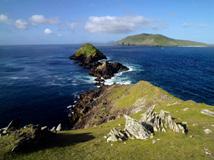
3
Departing September 8th Departing September 22nd Departing October 7th €450








